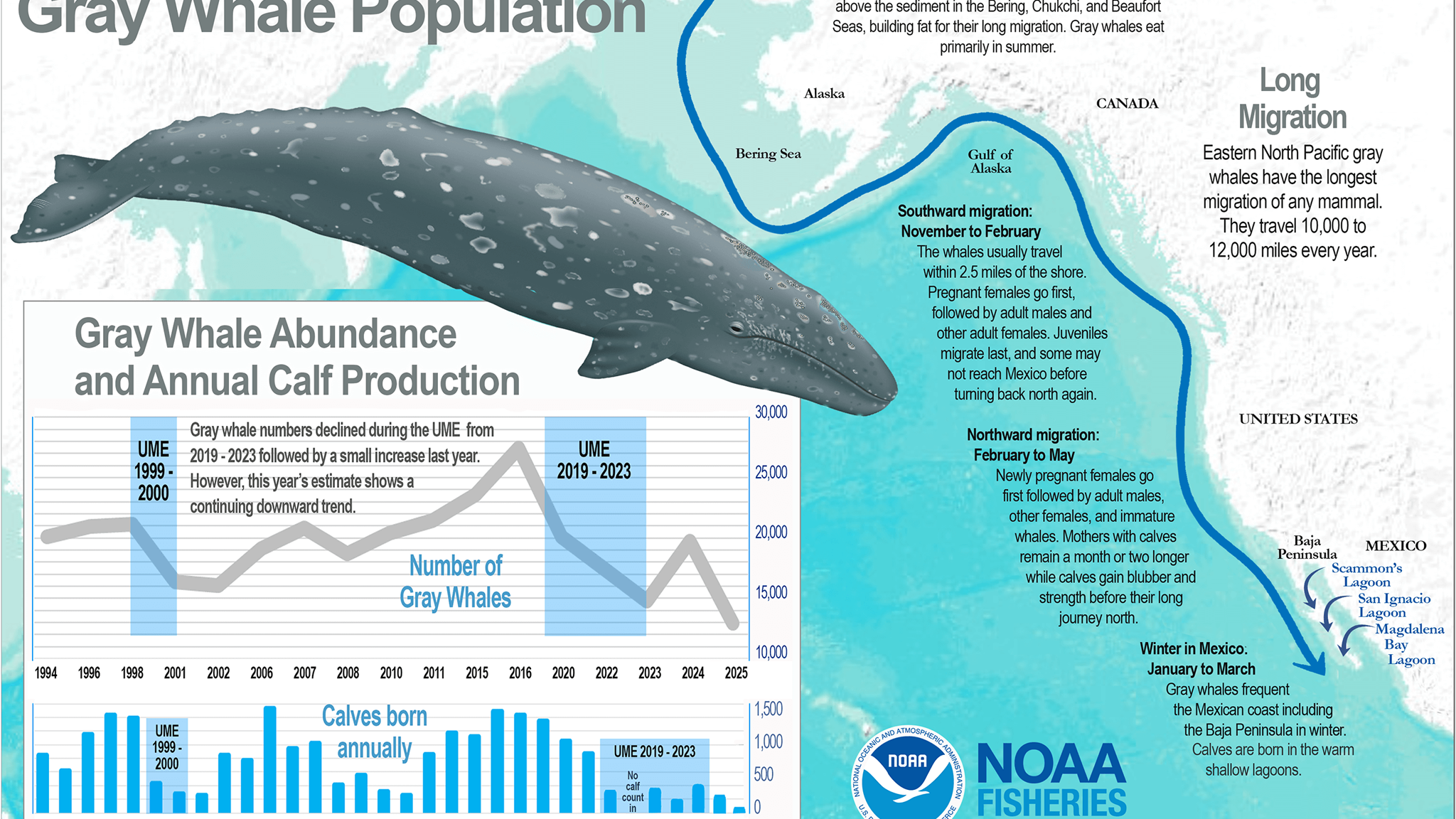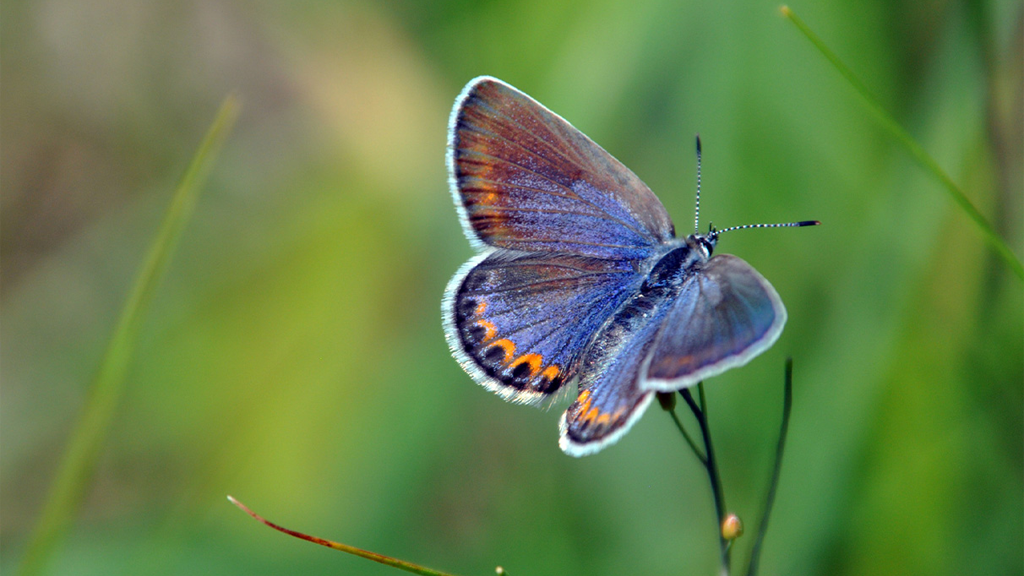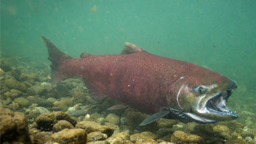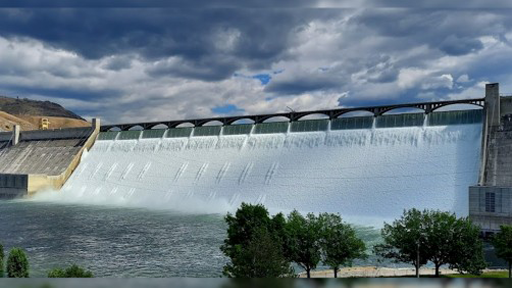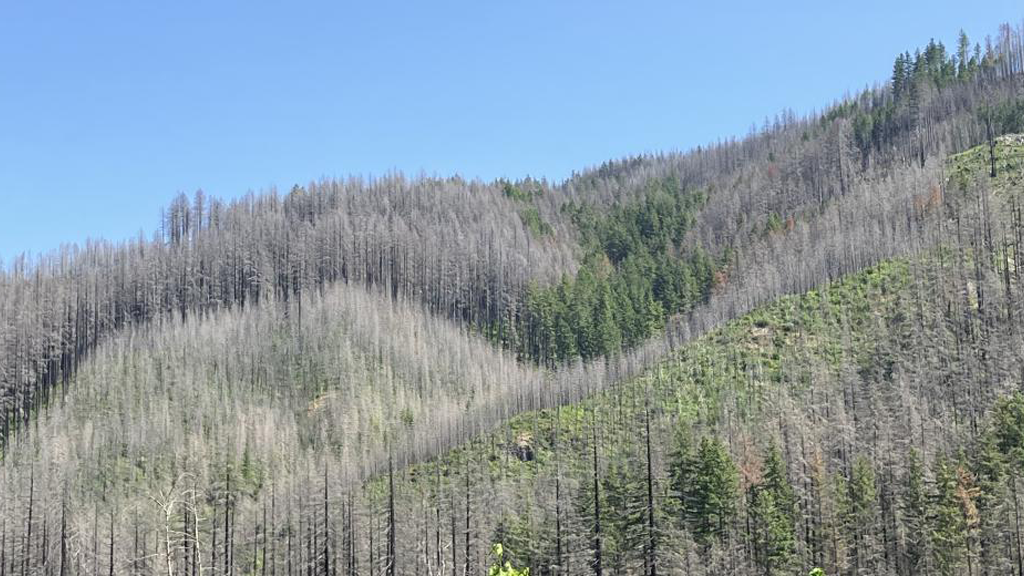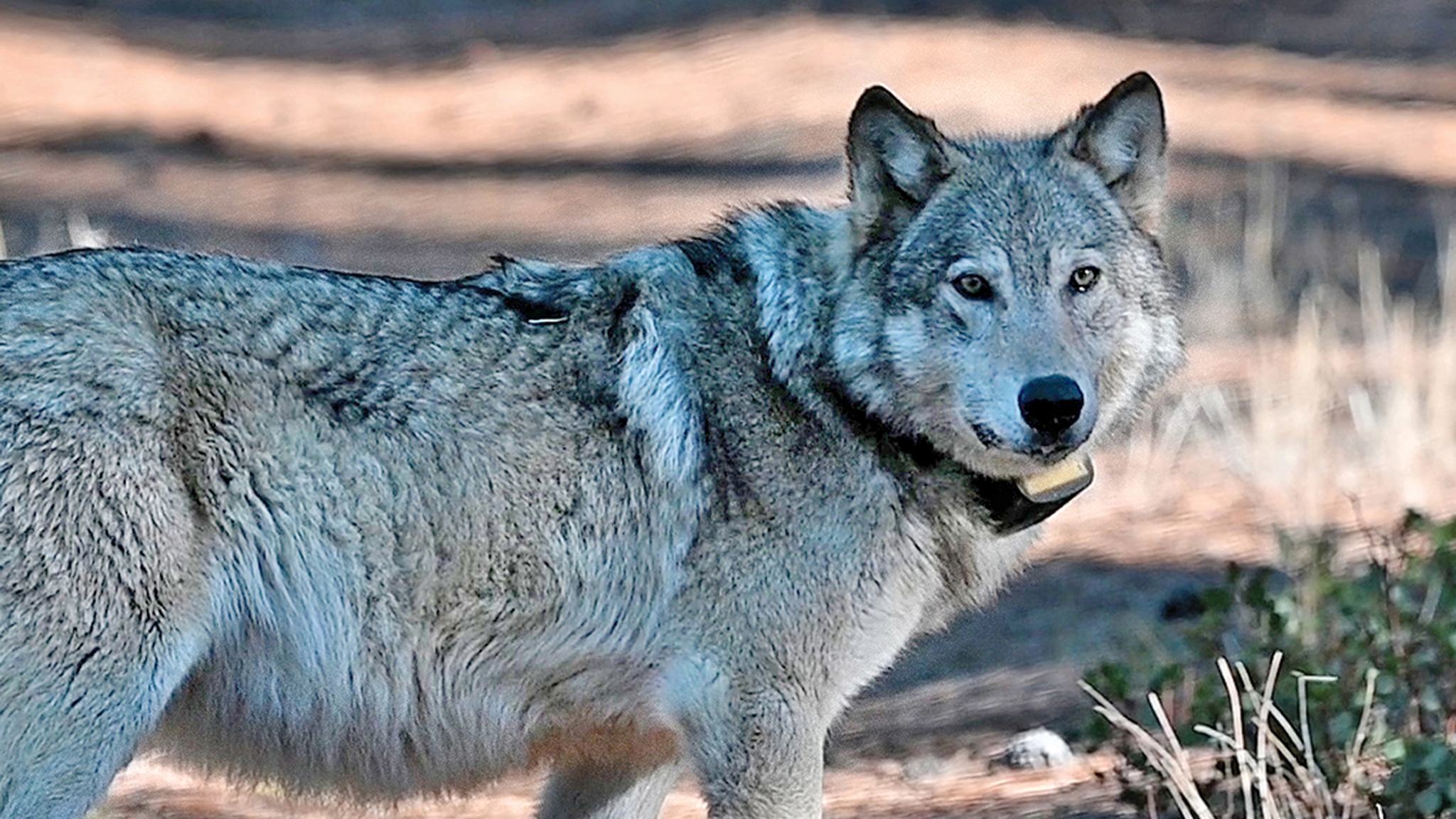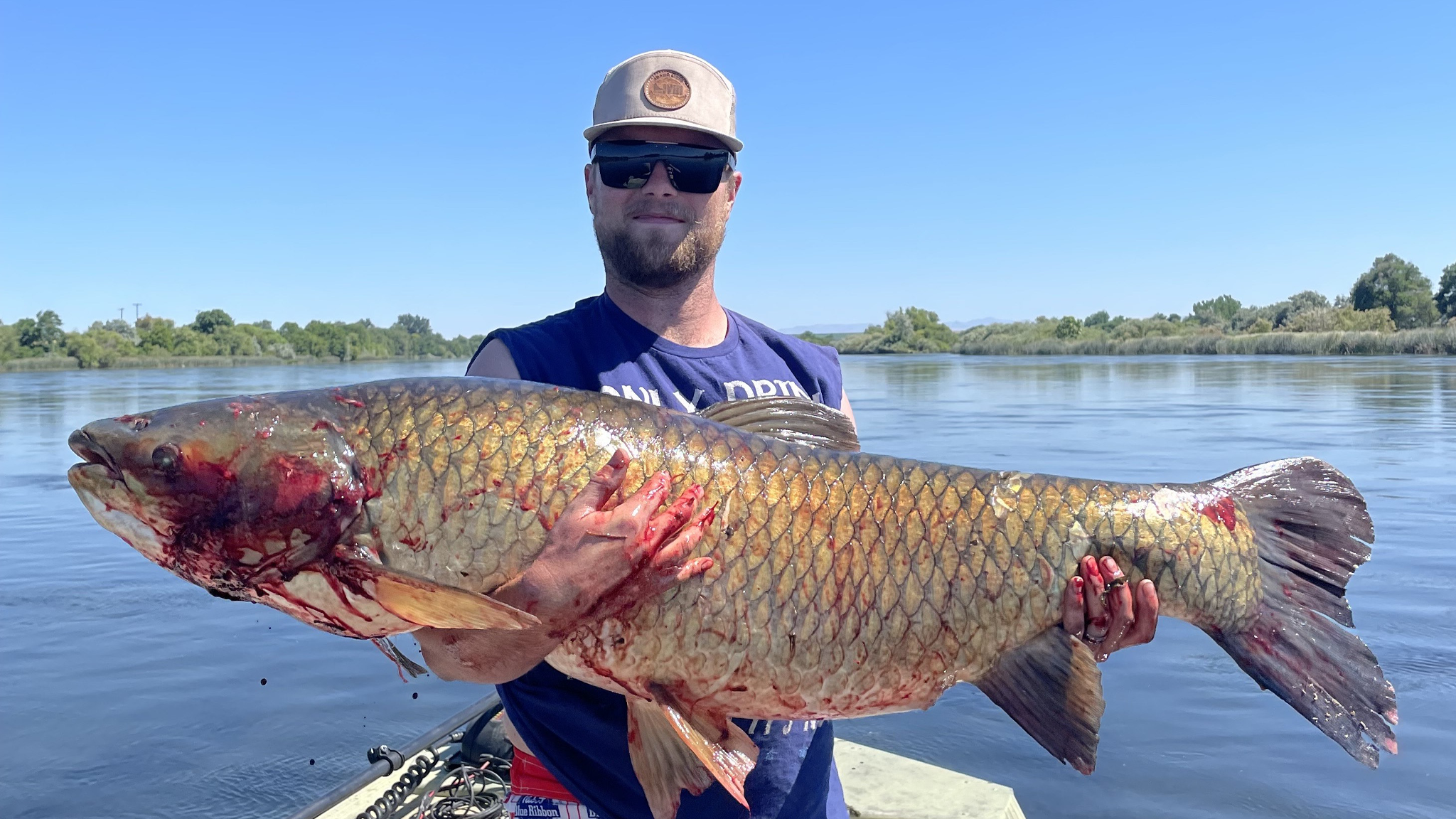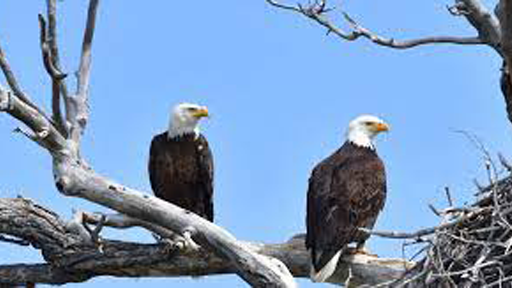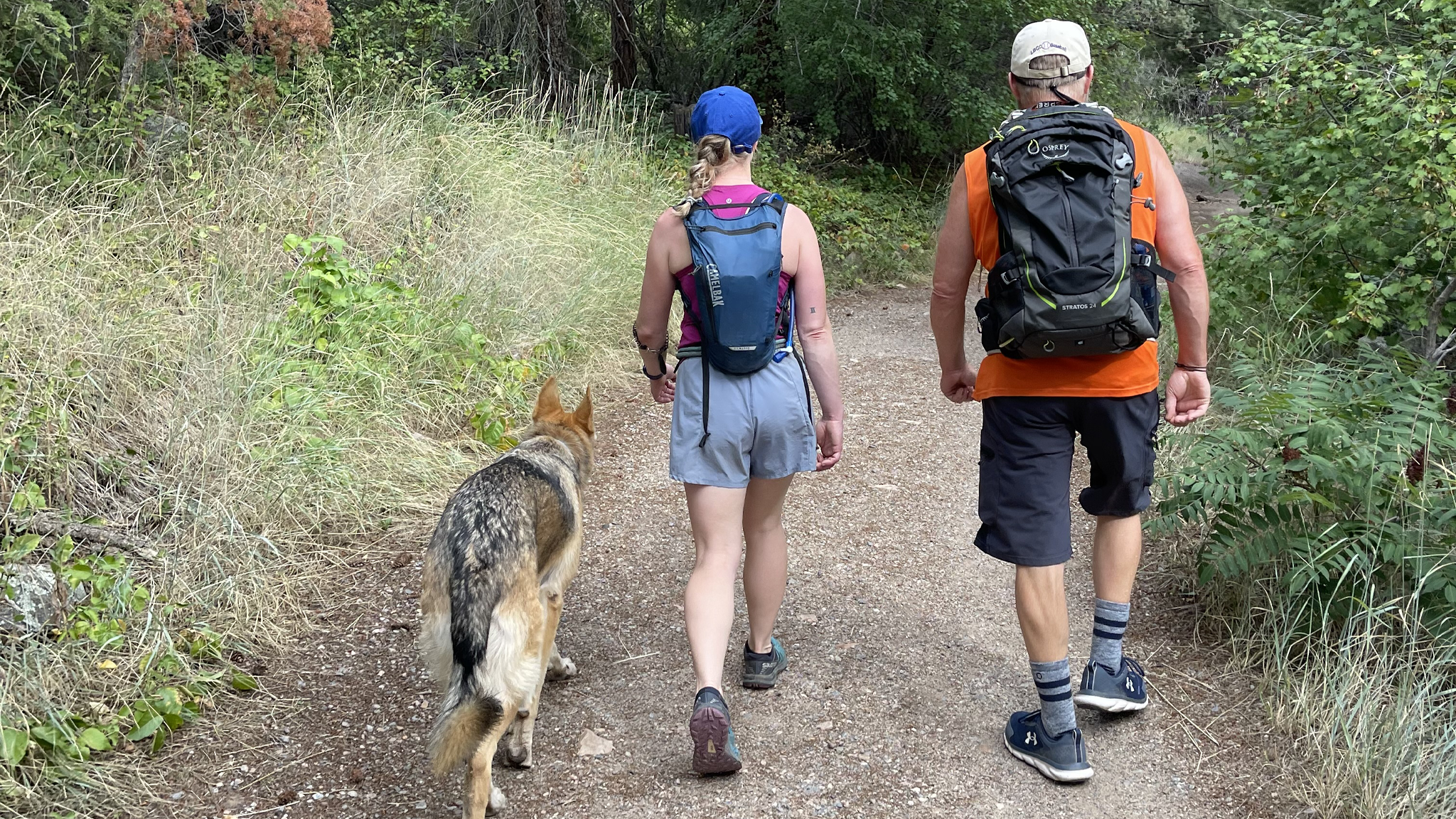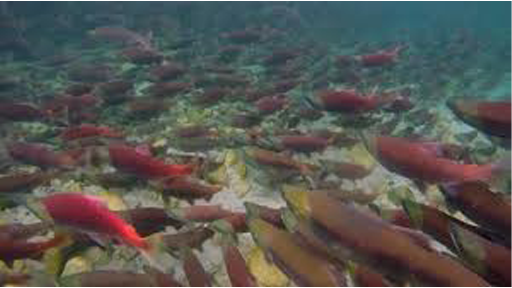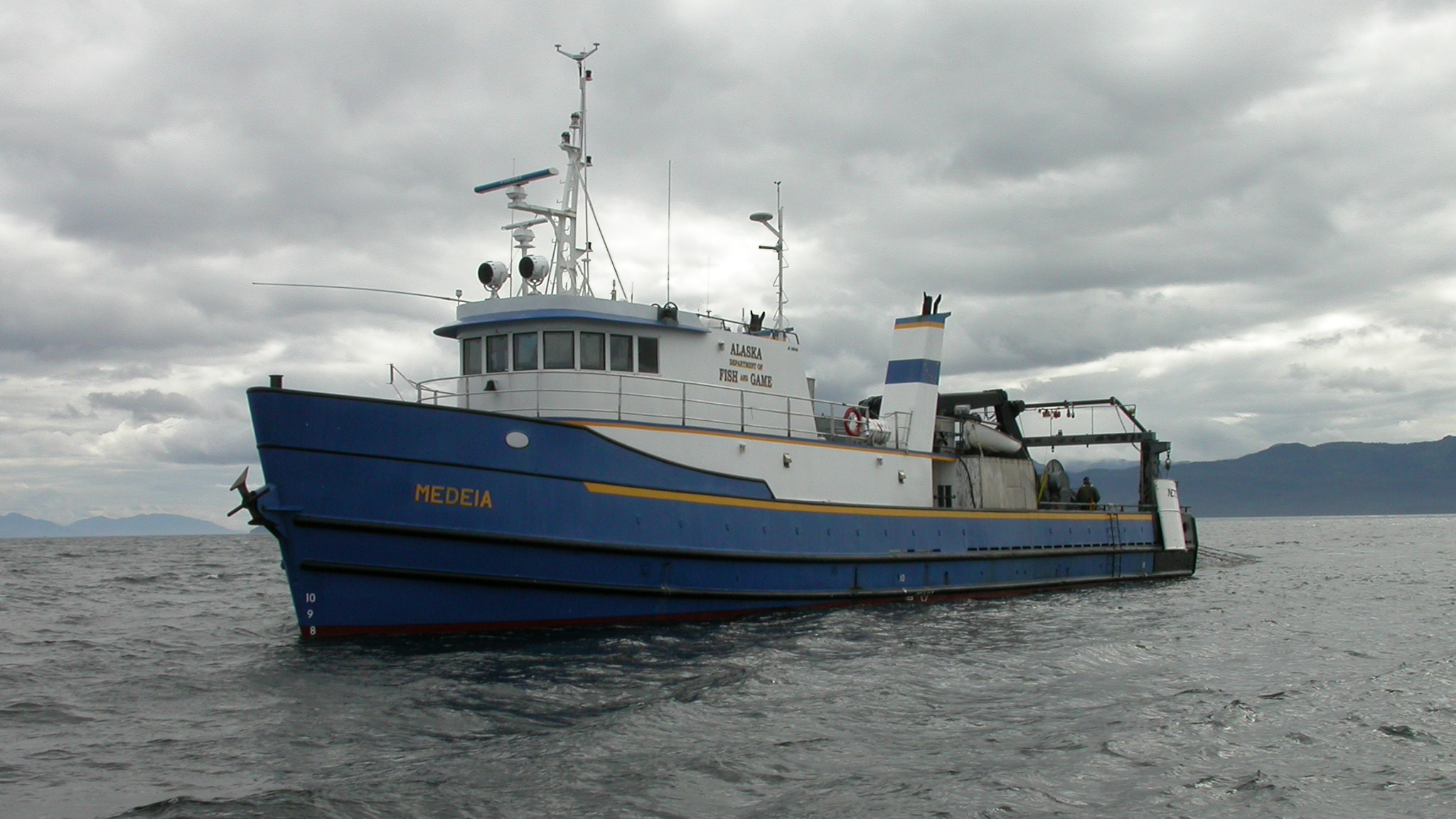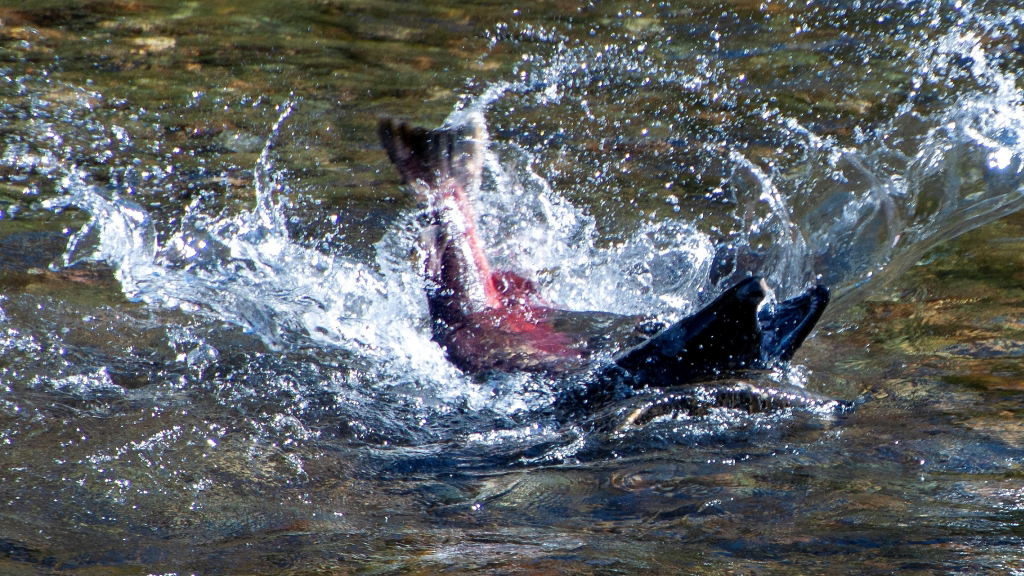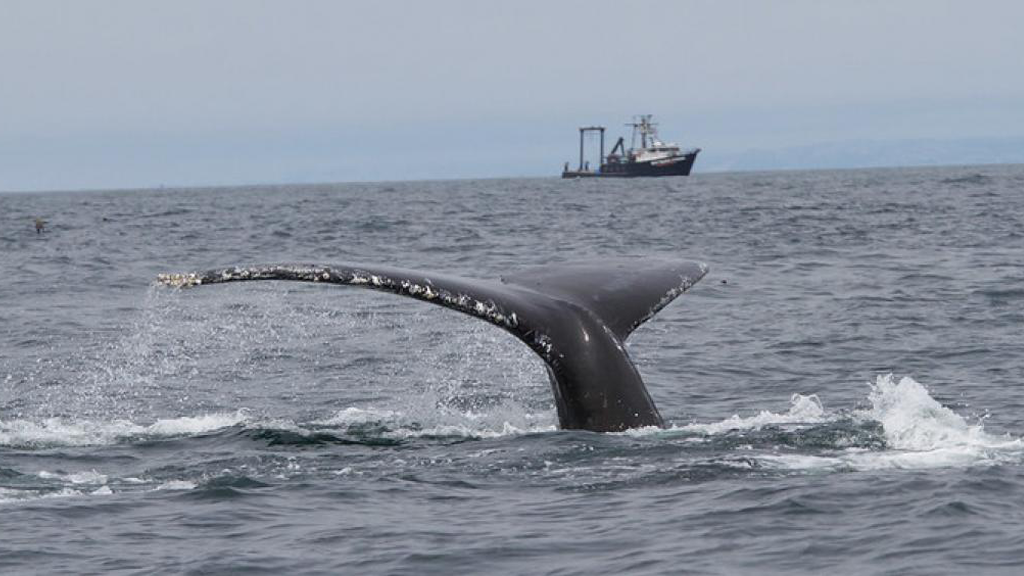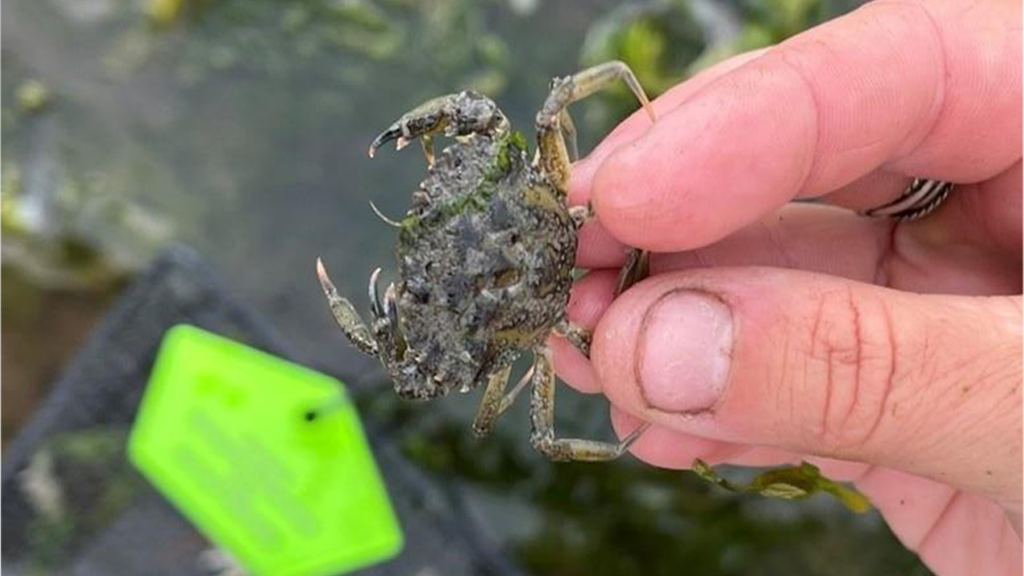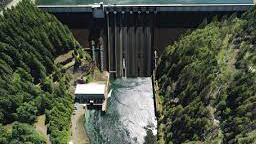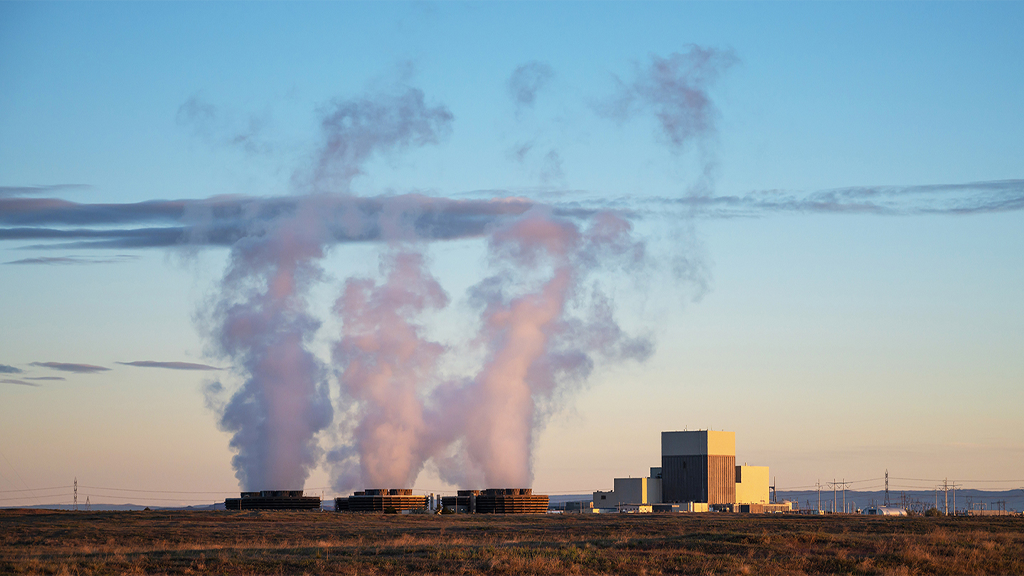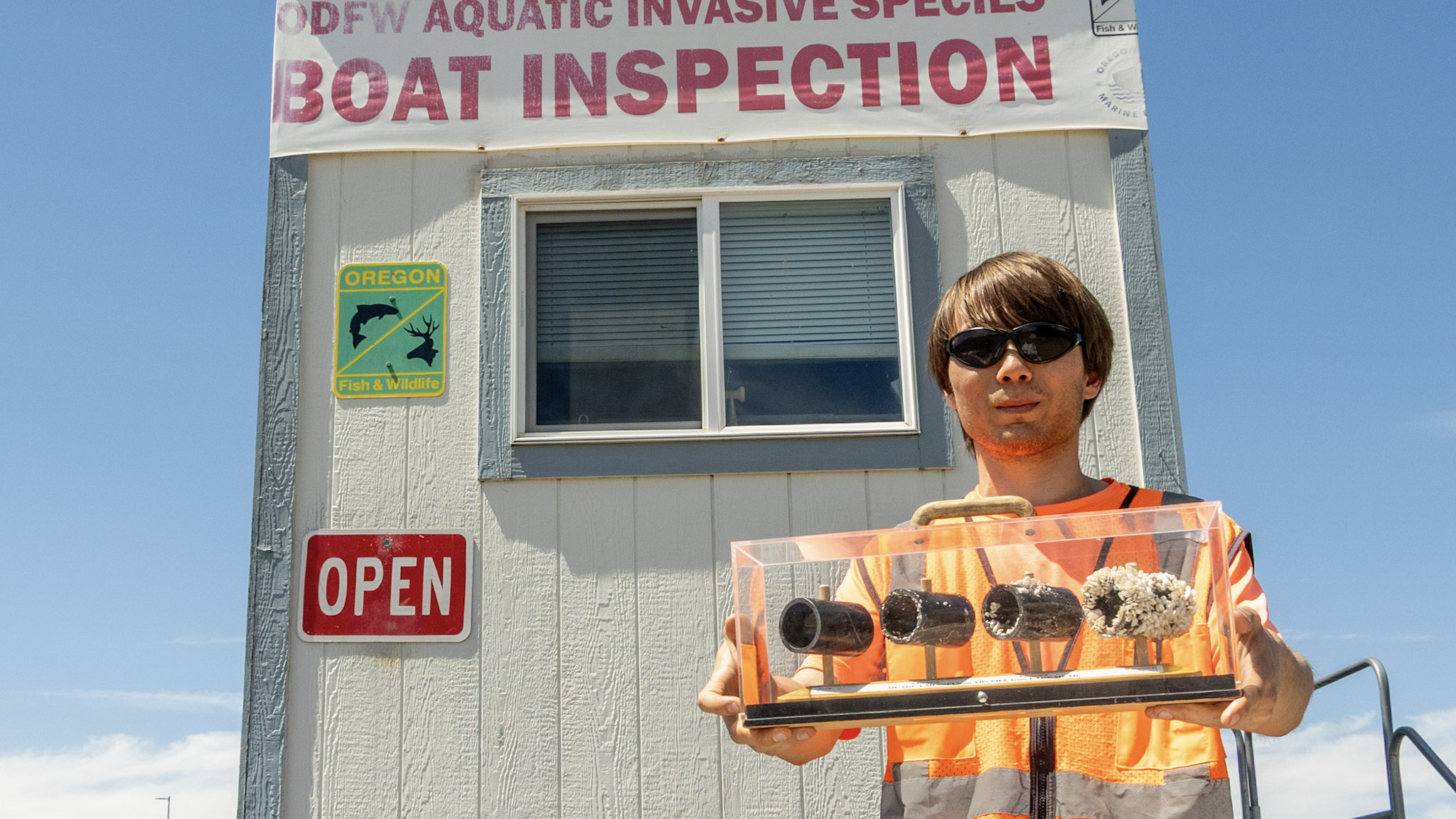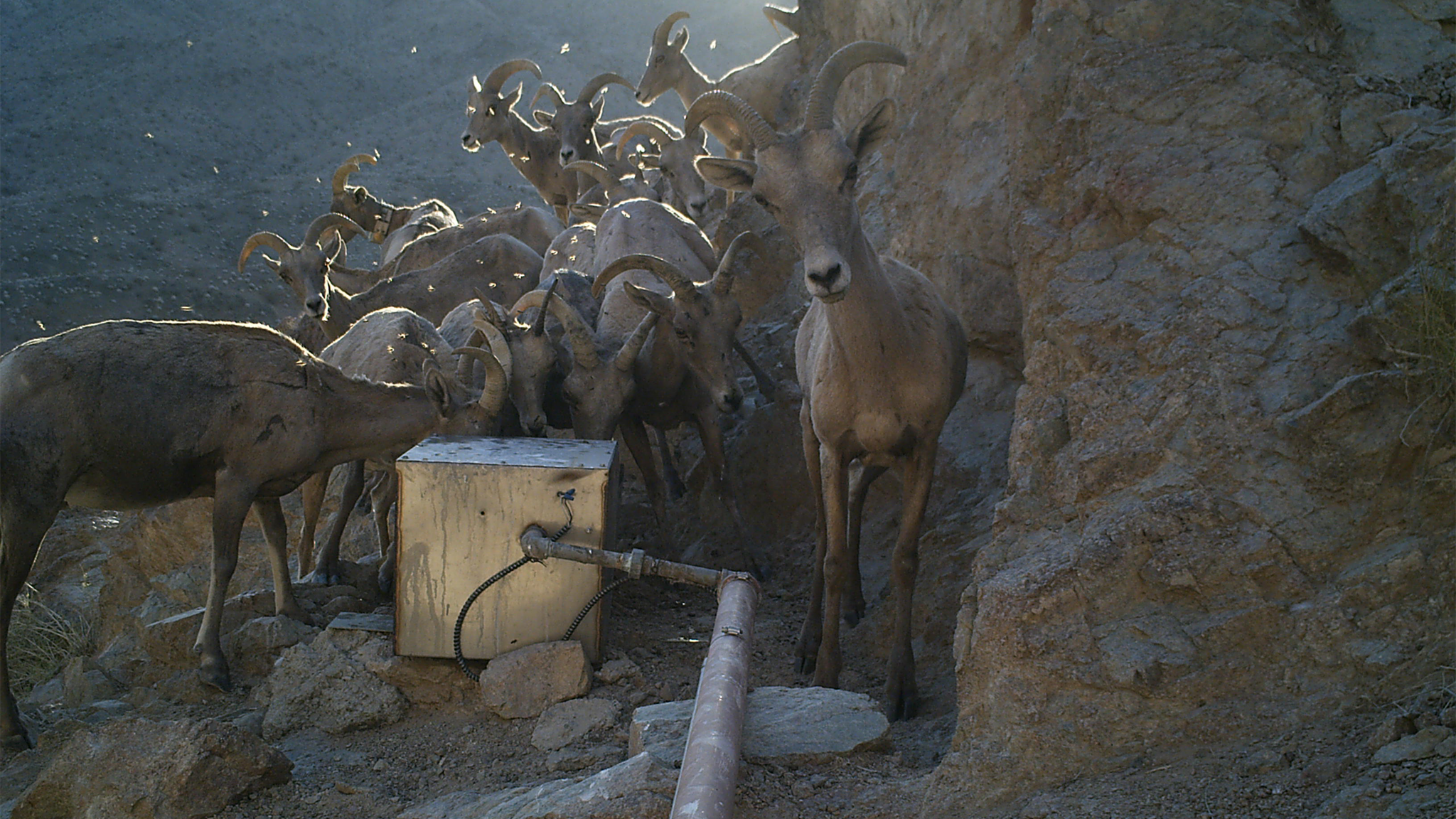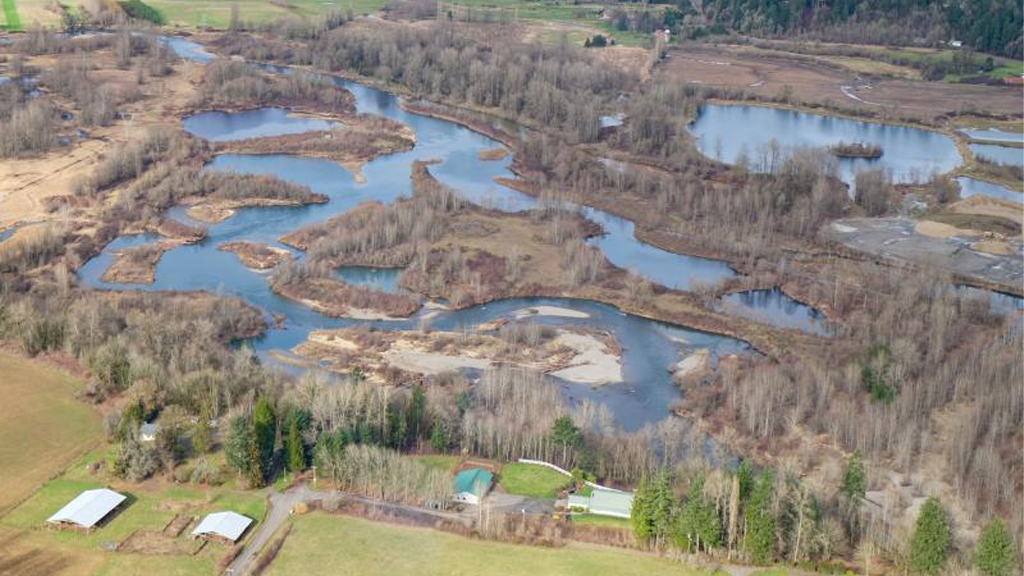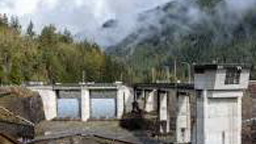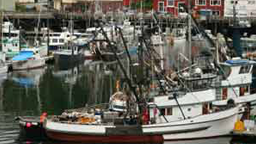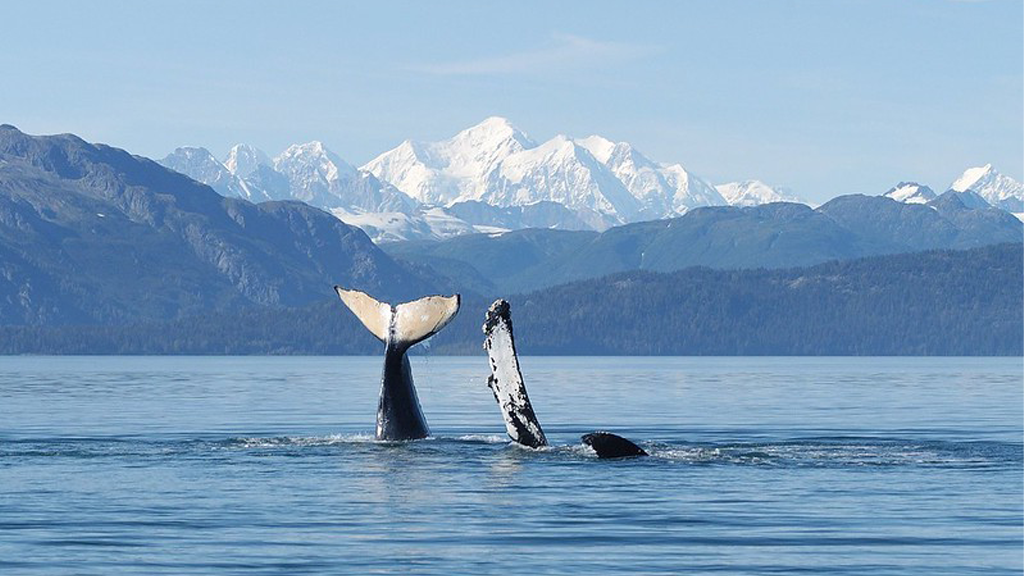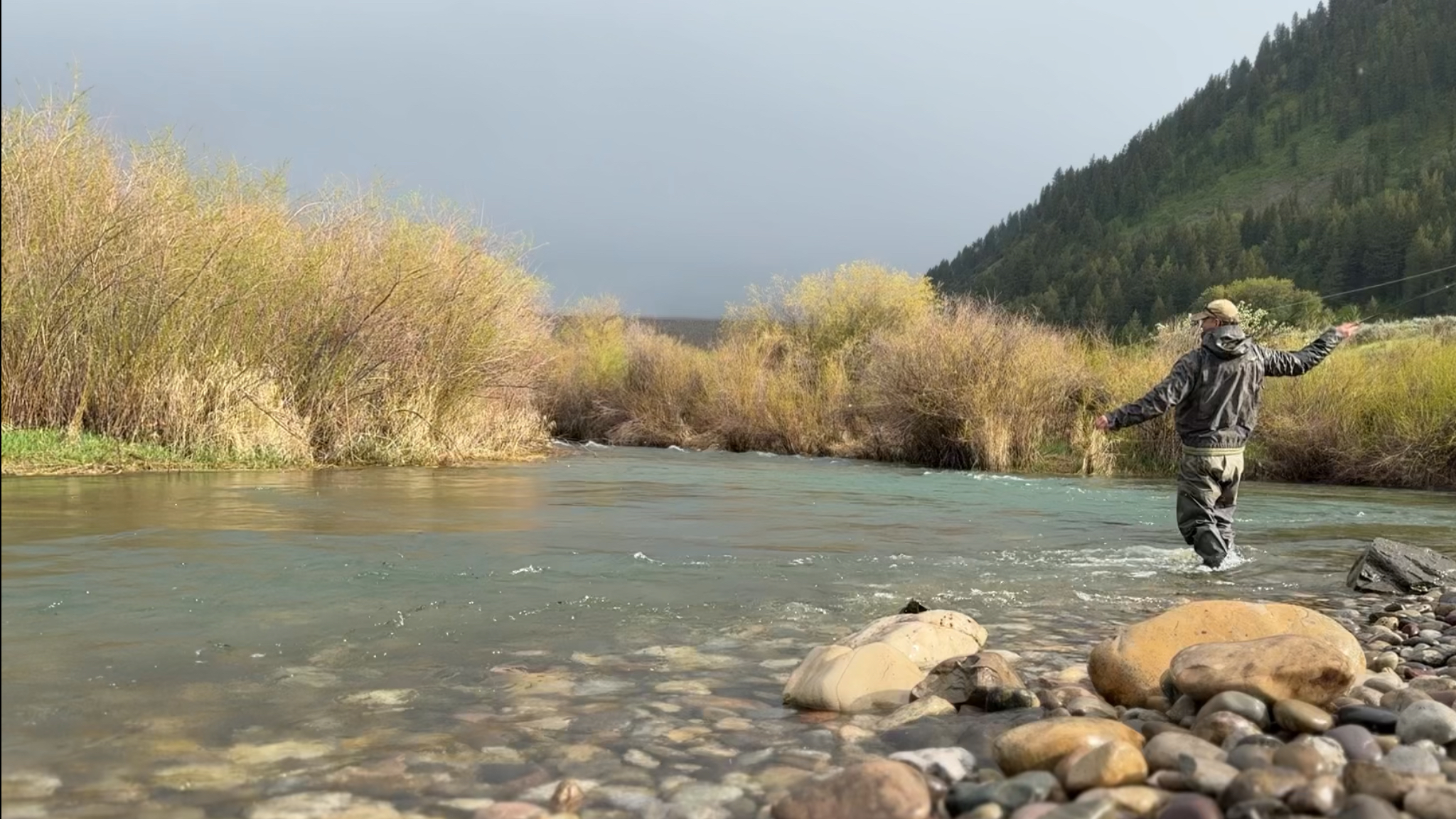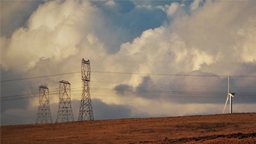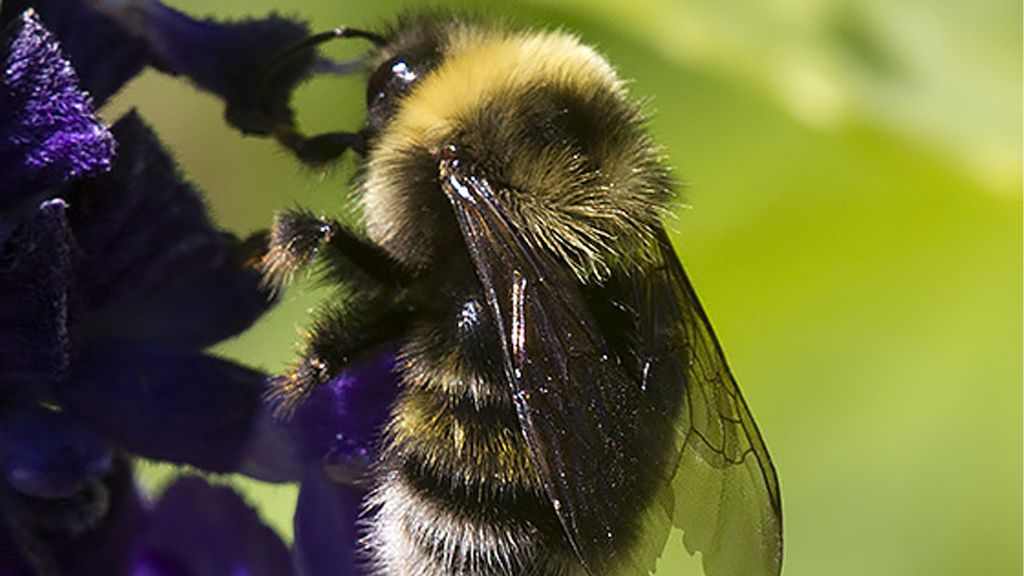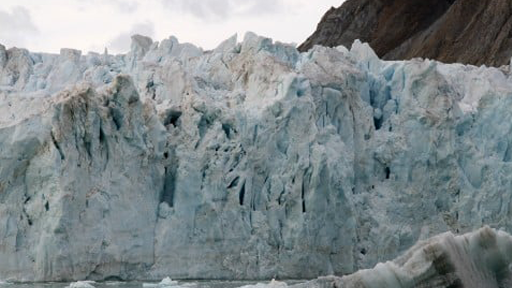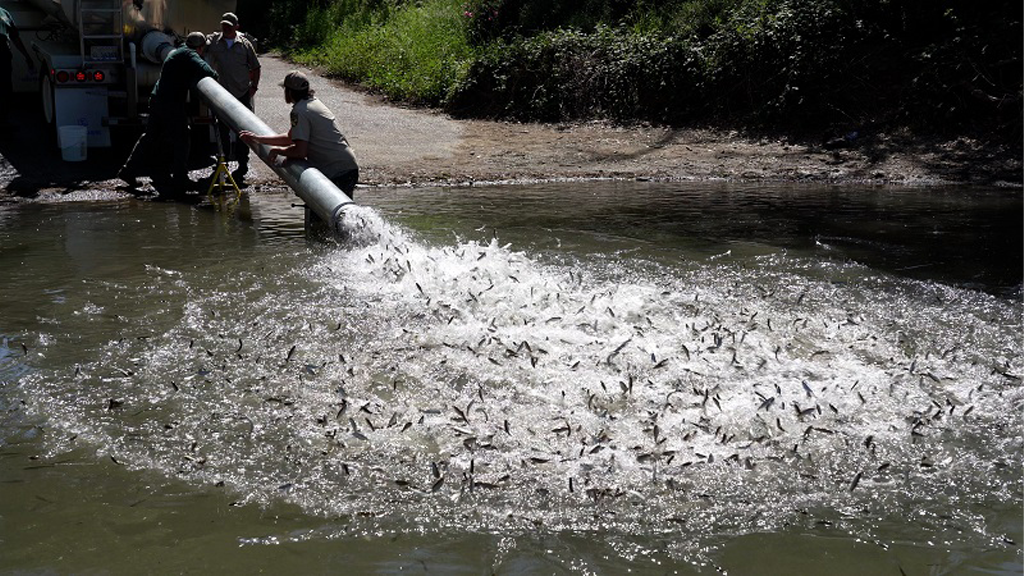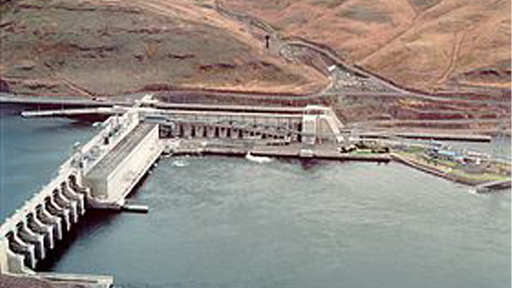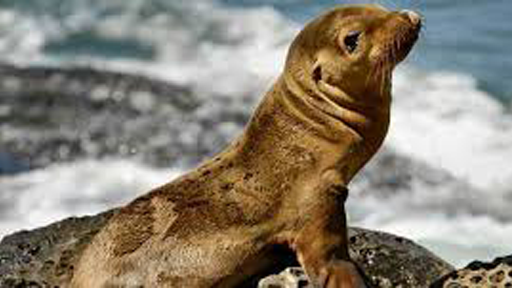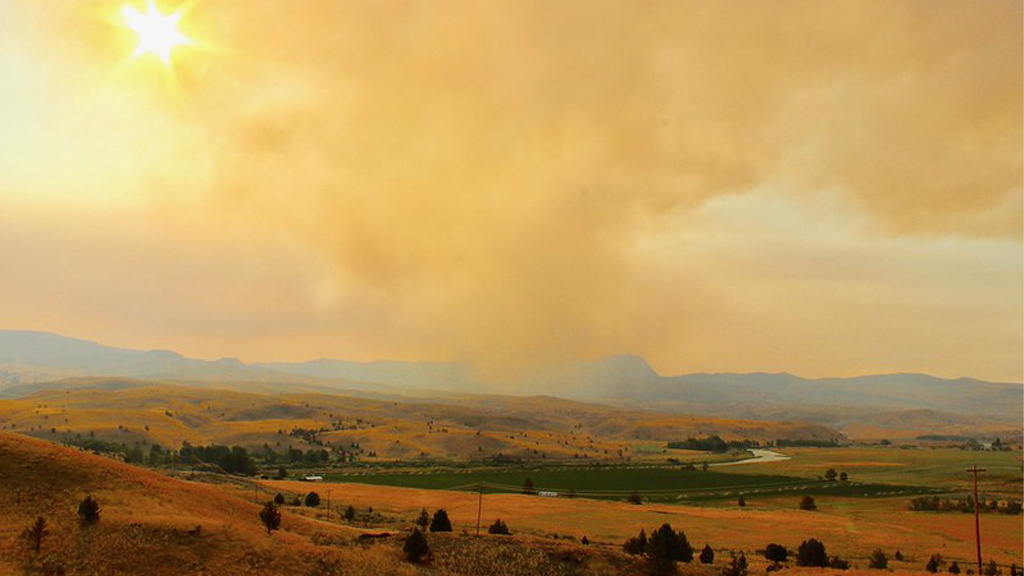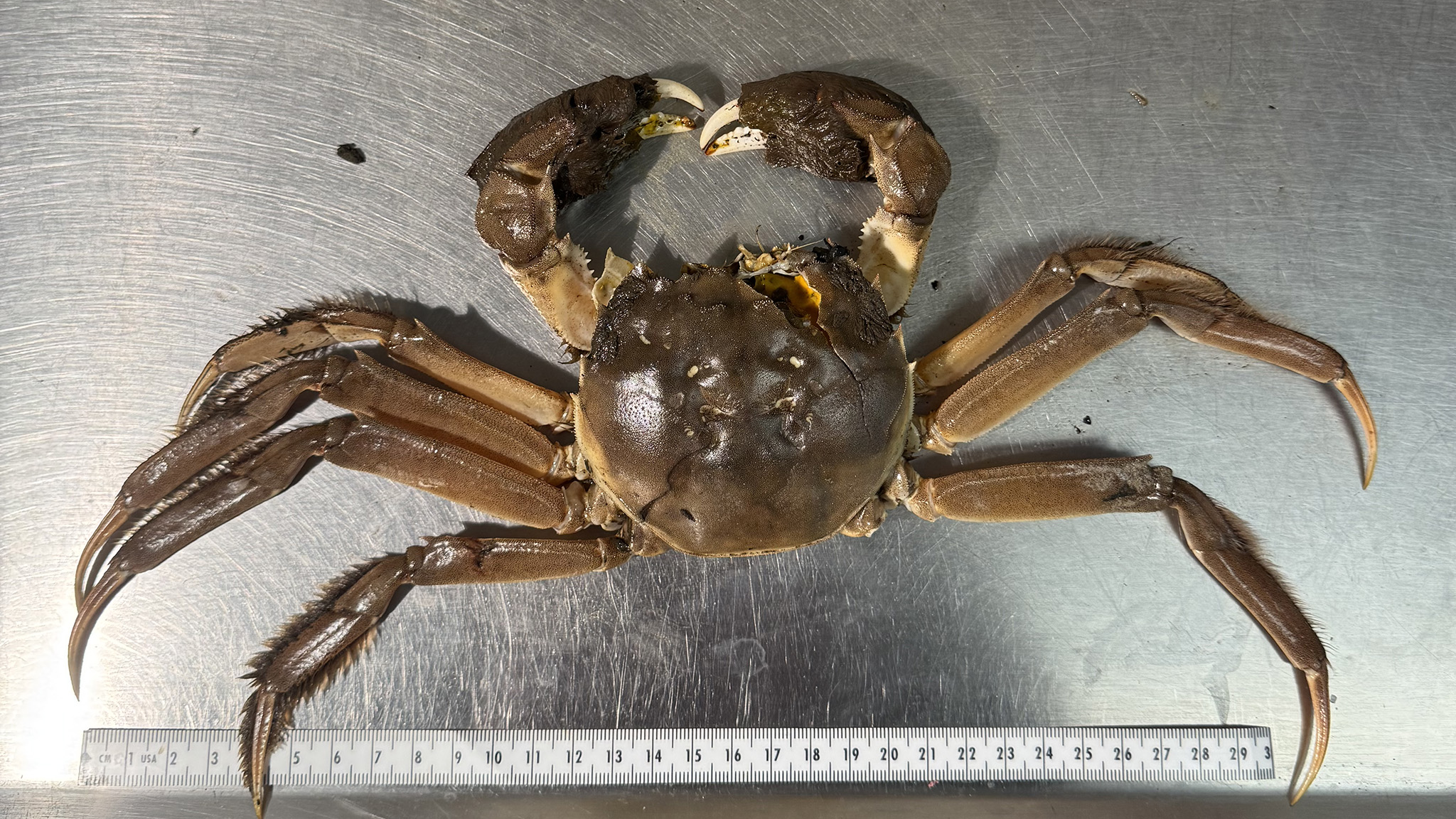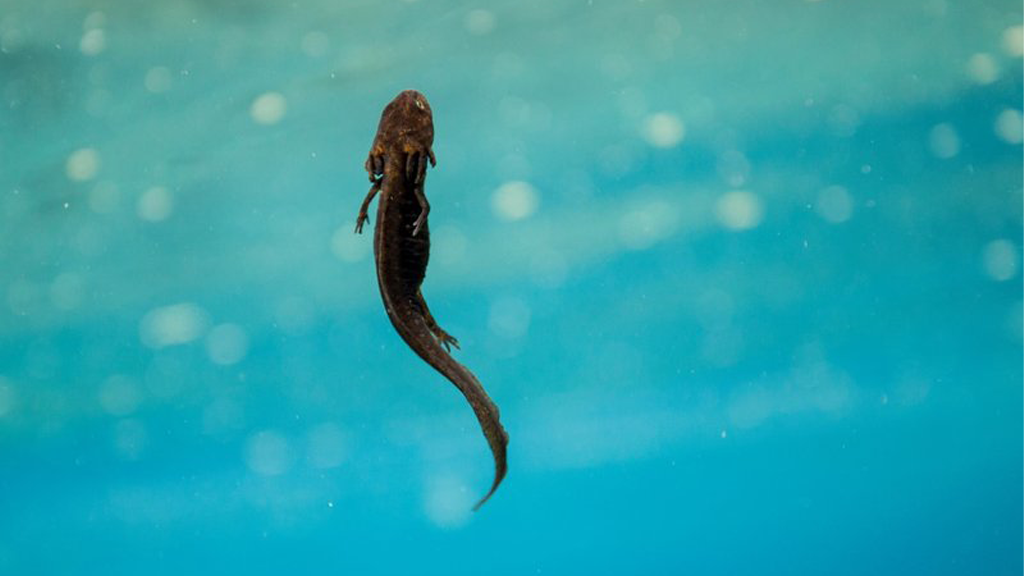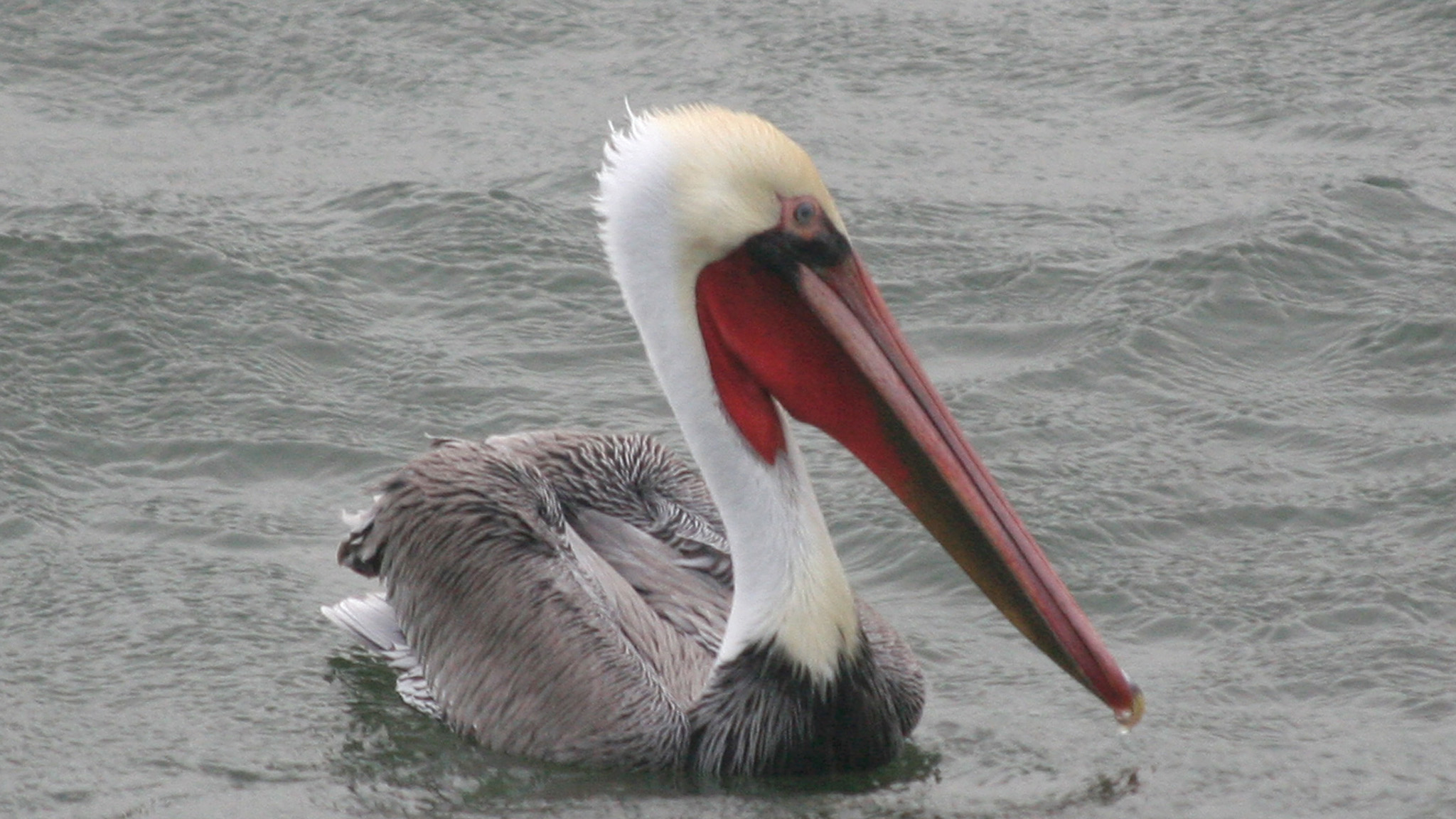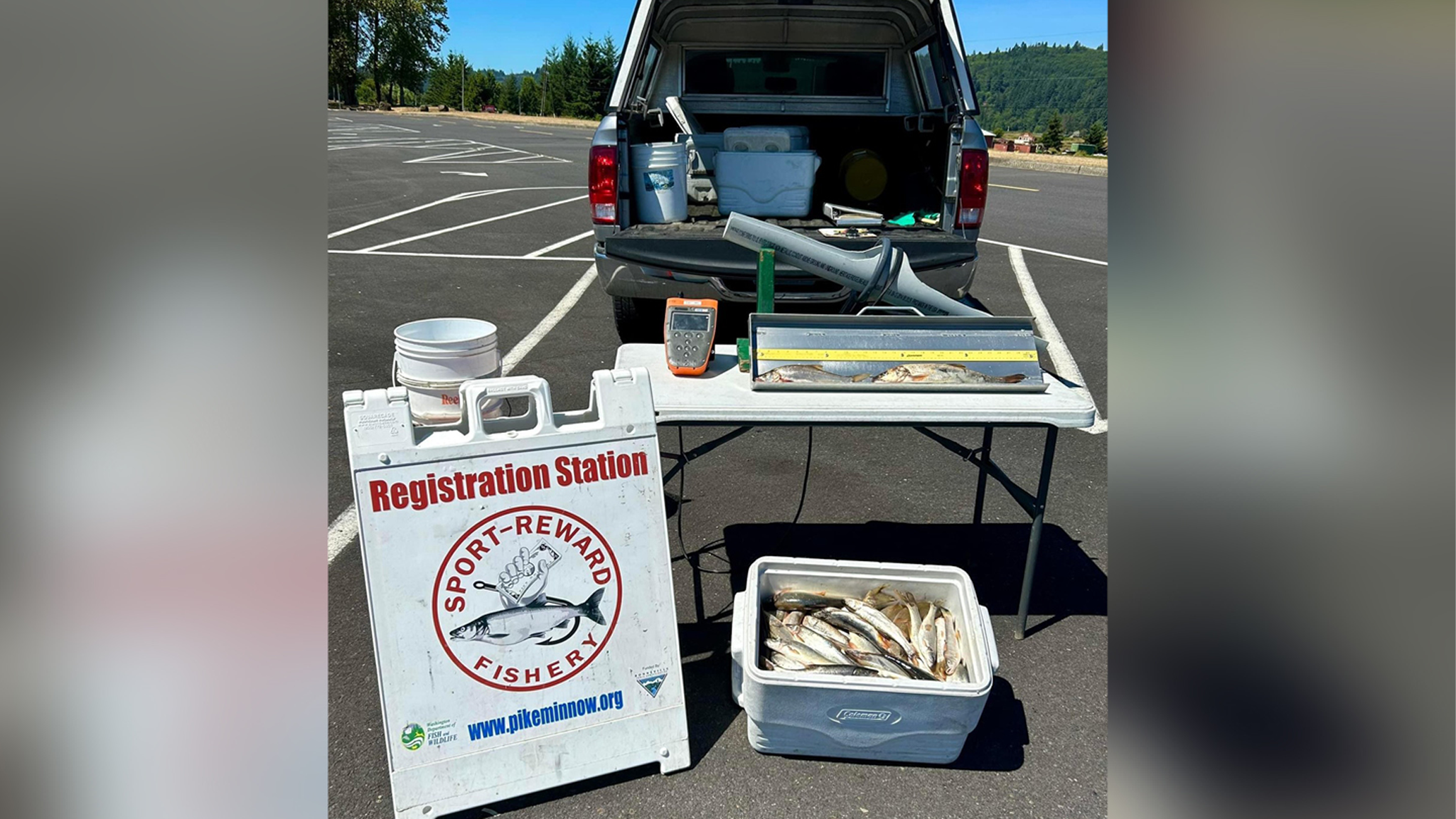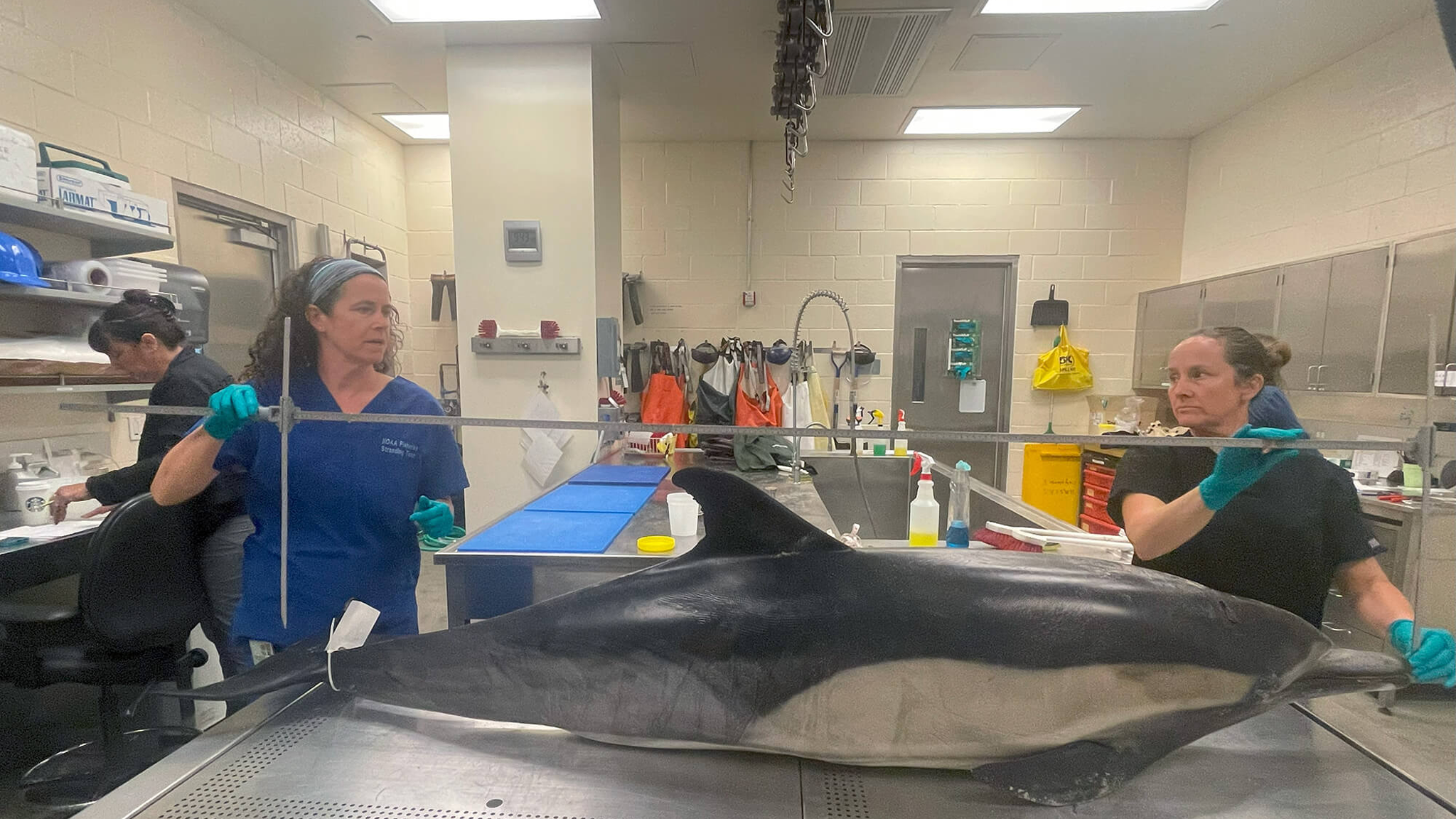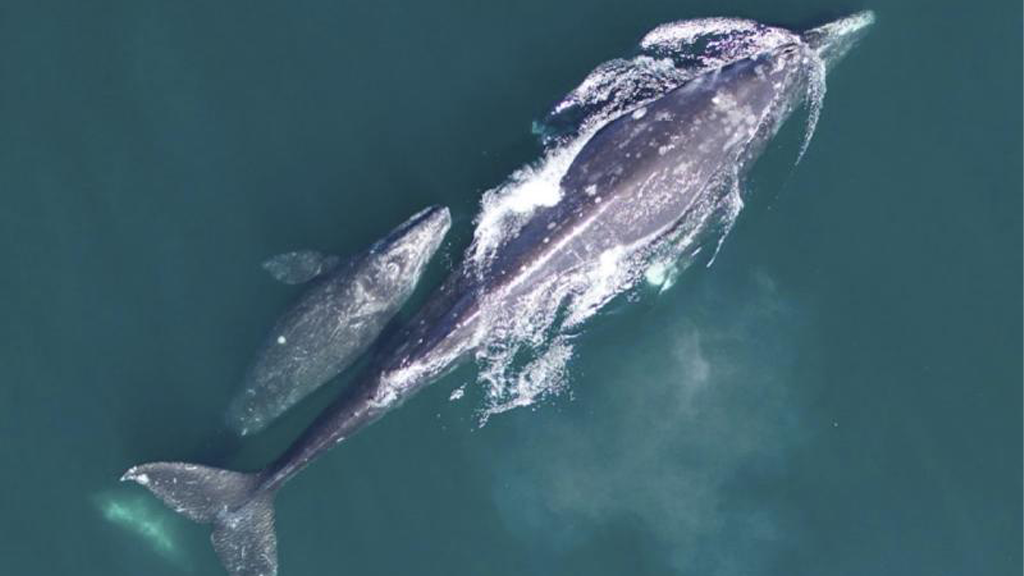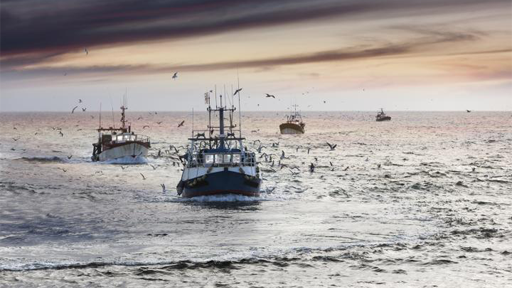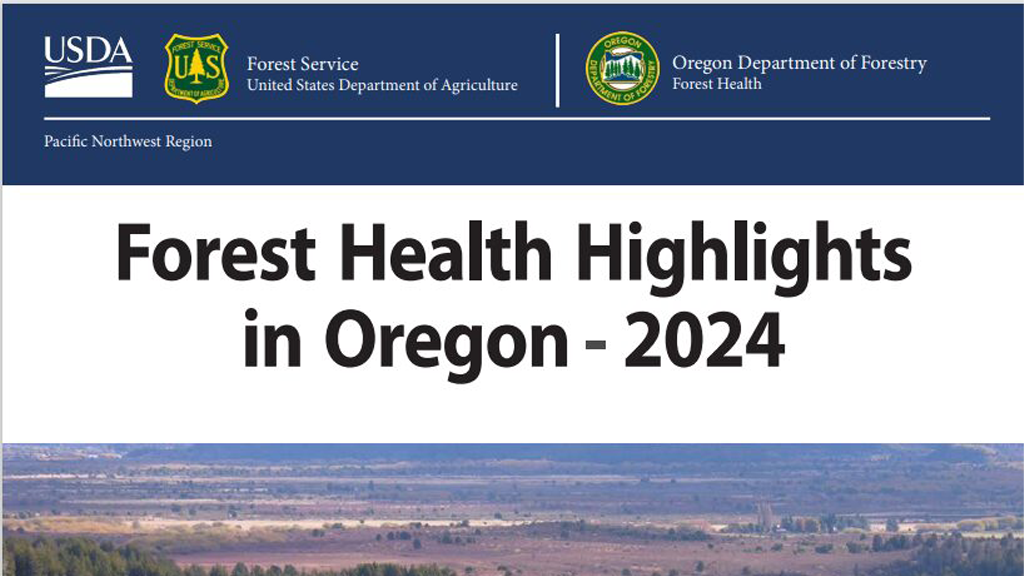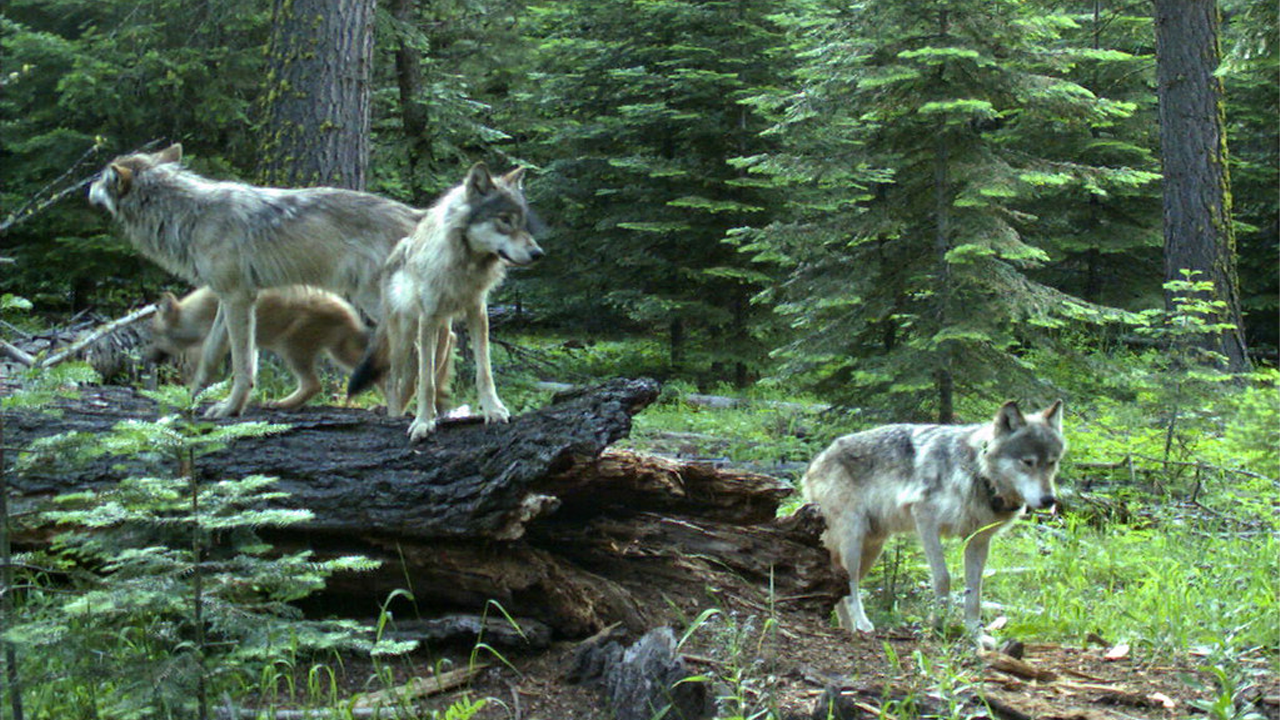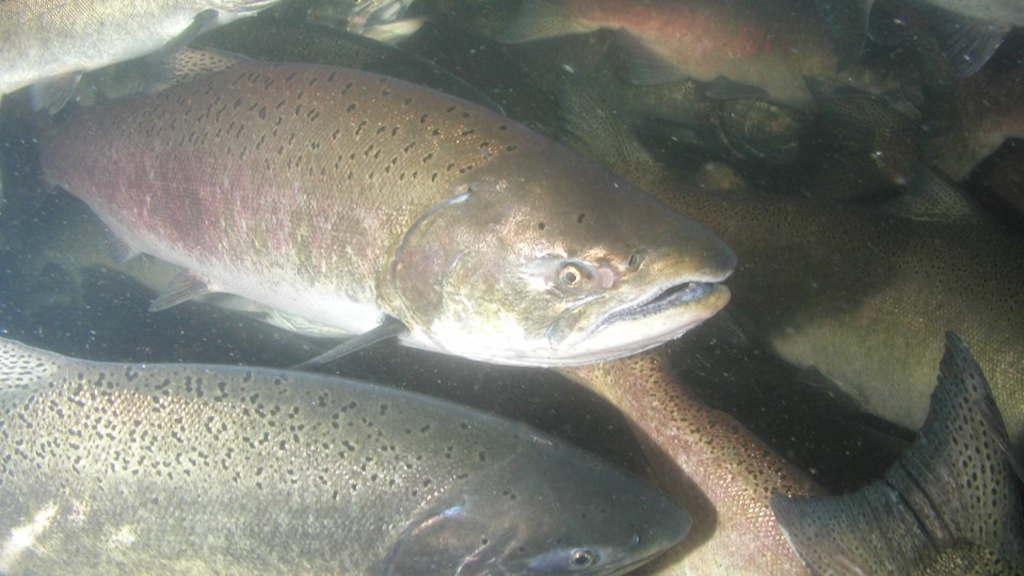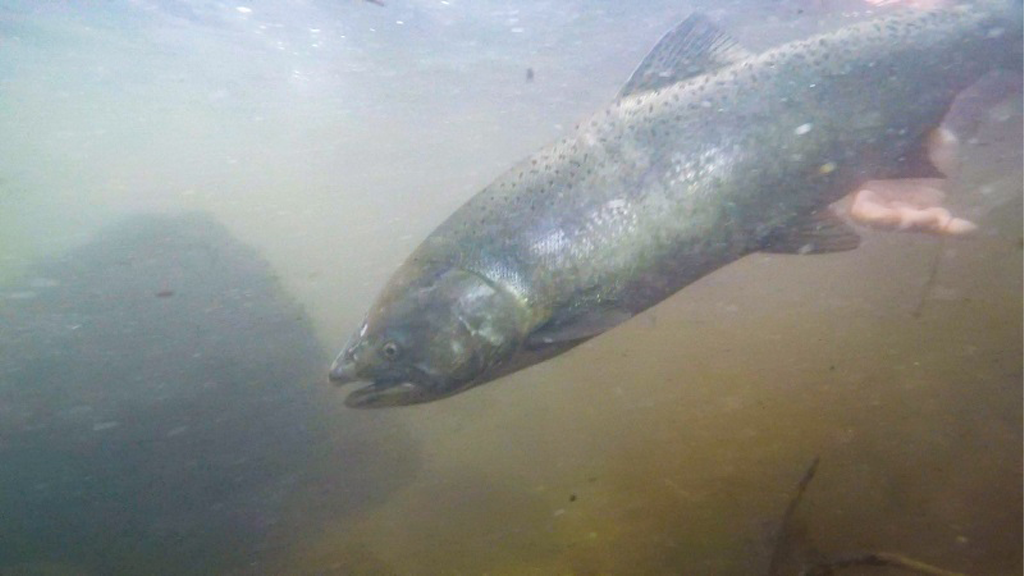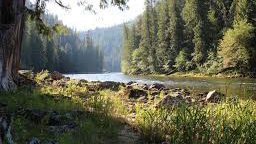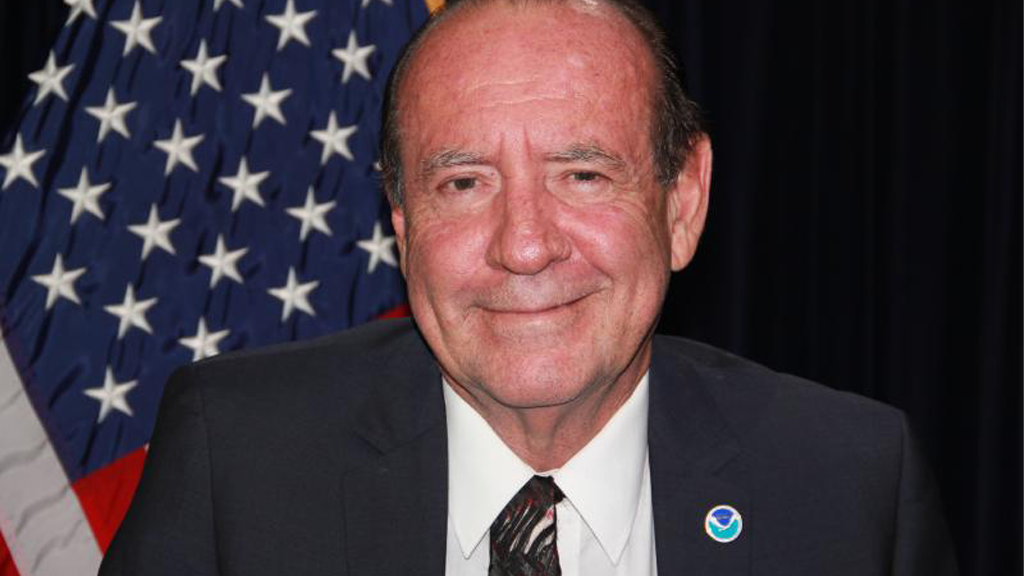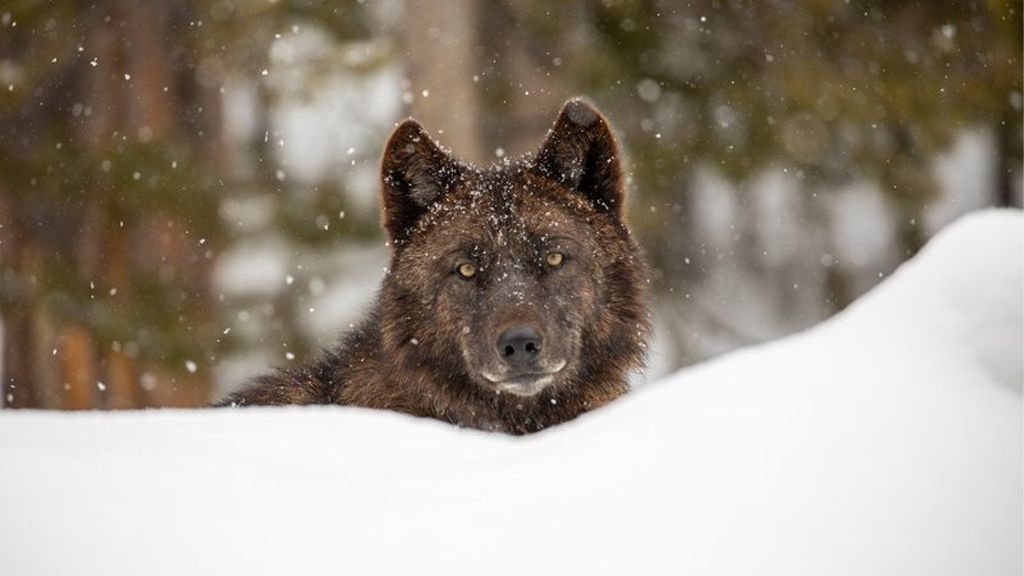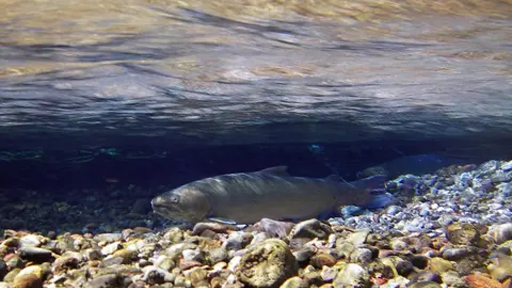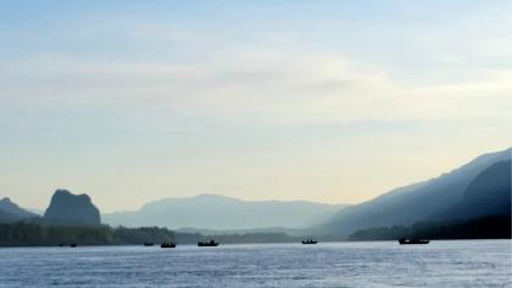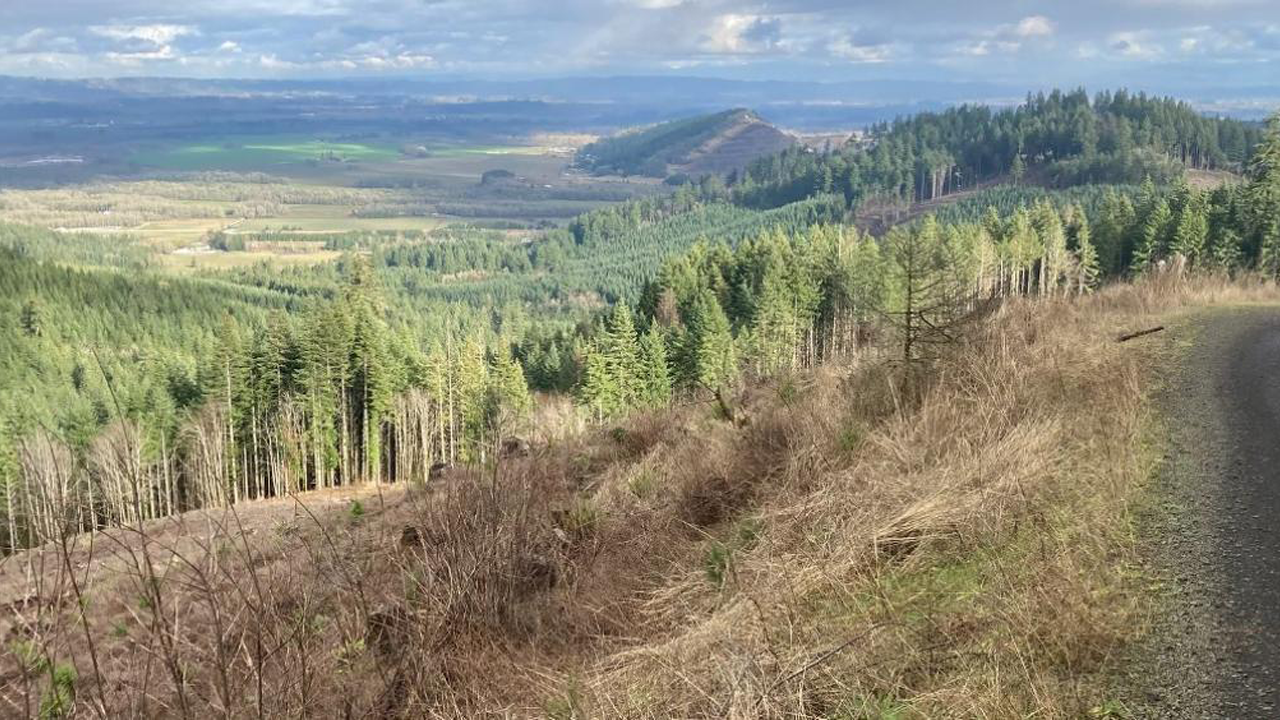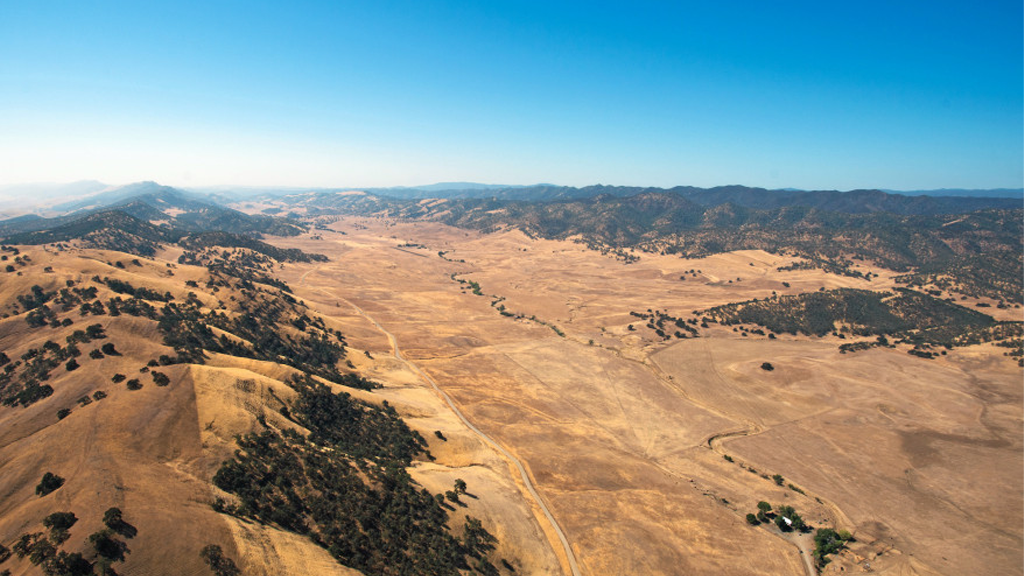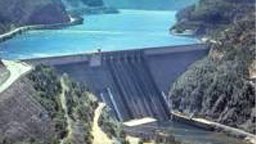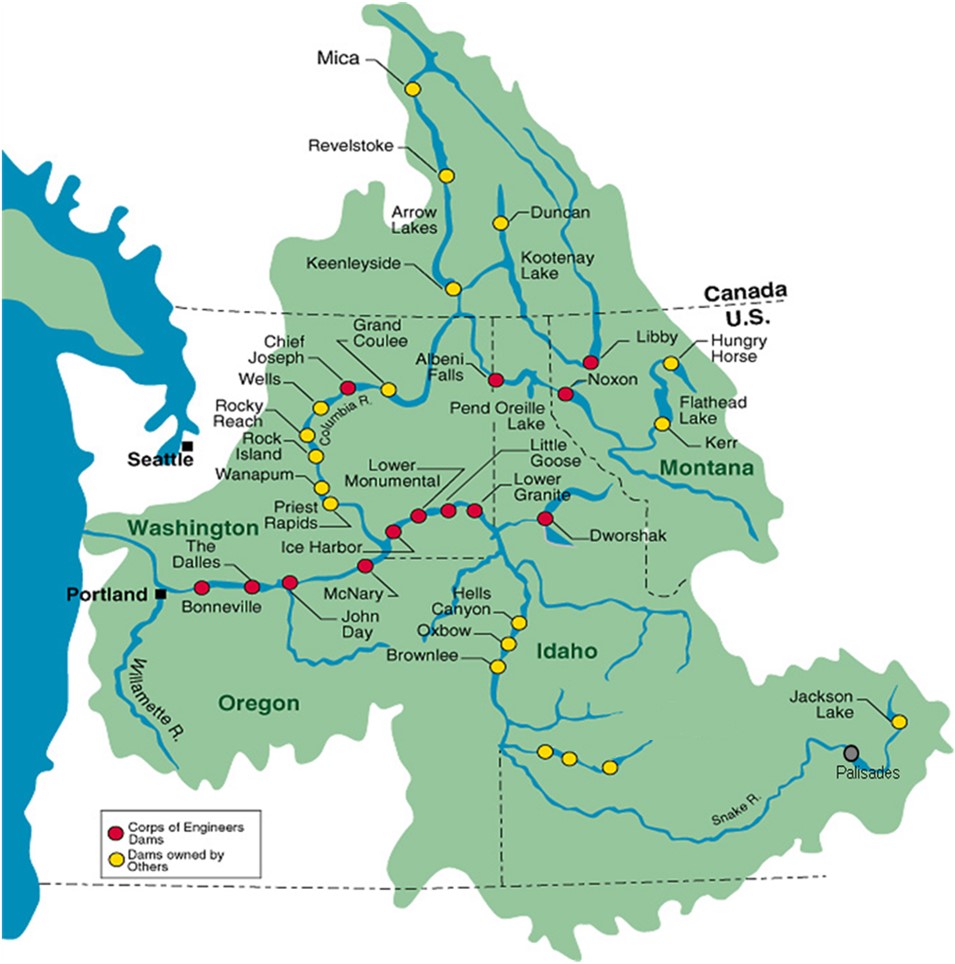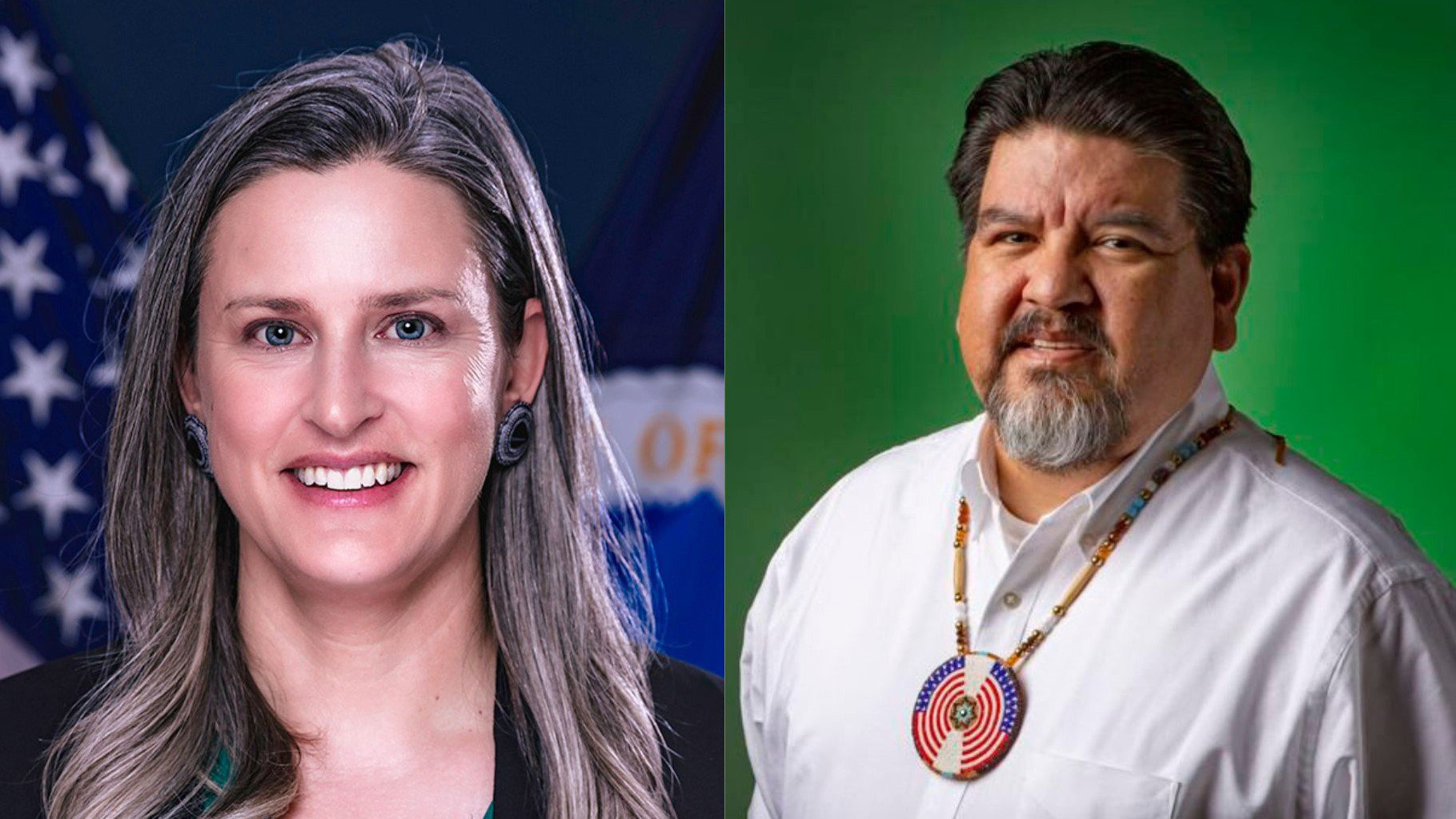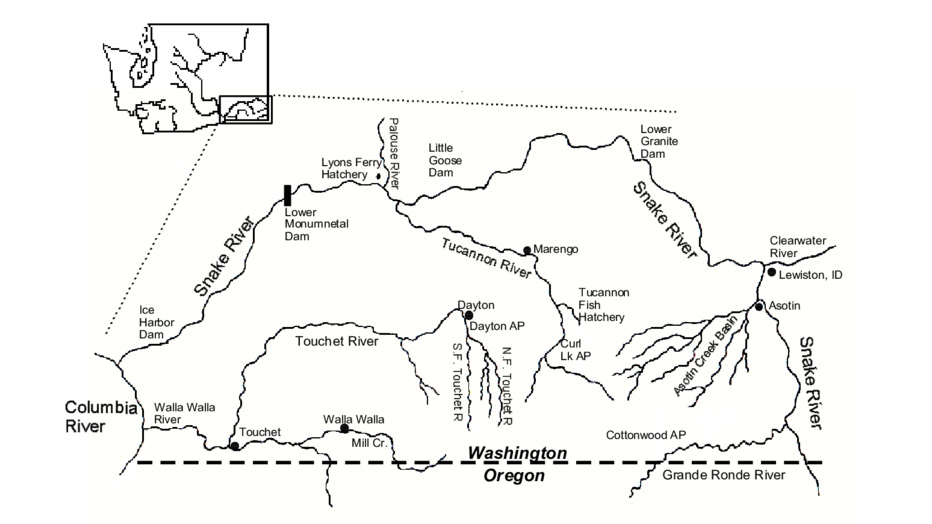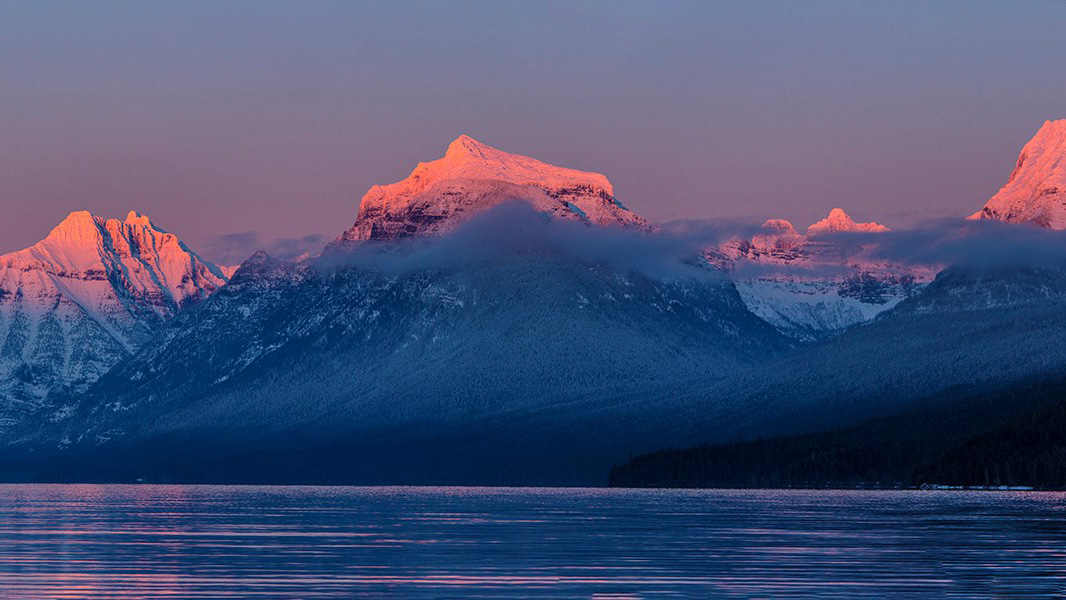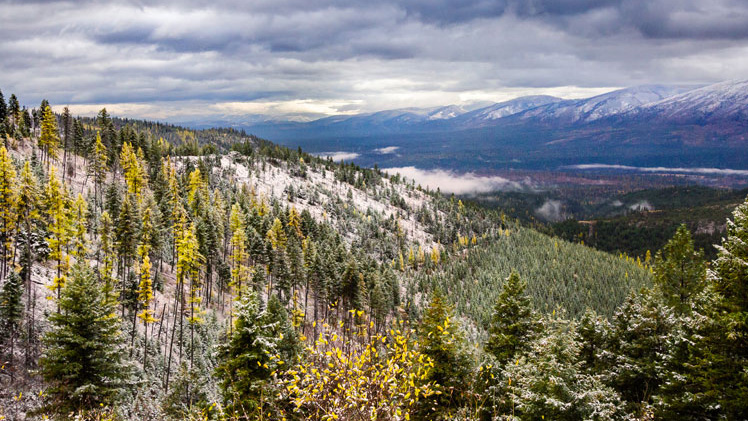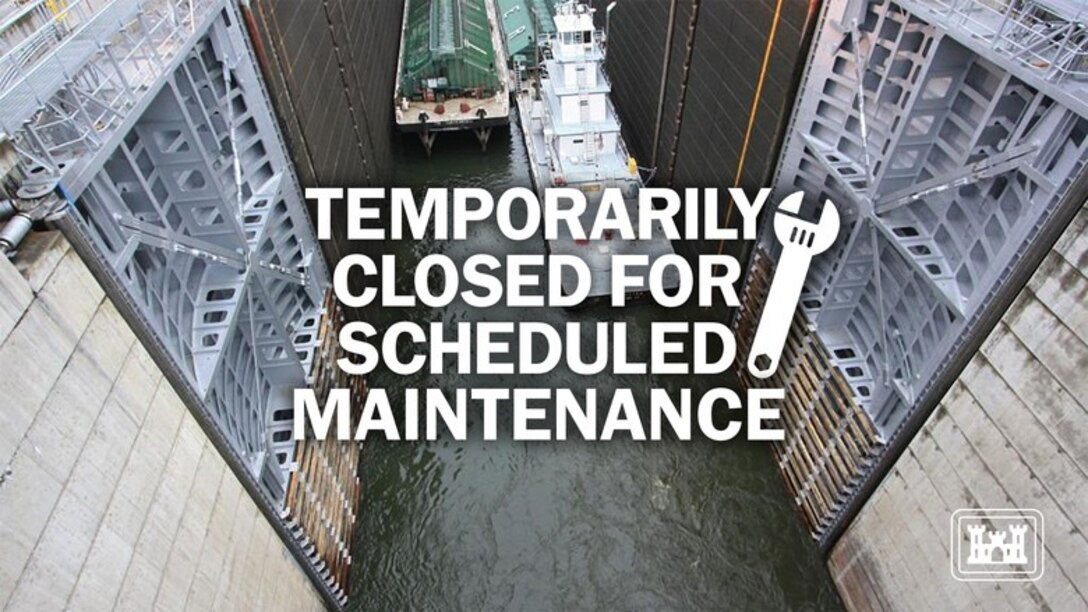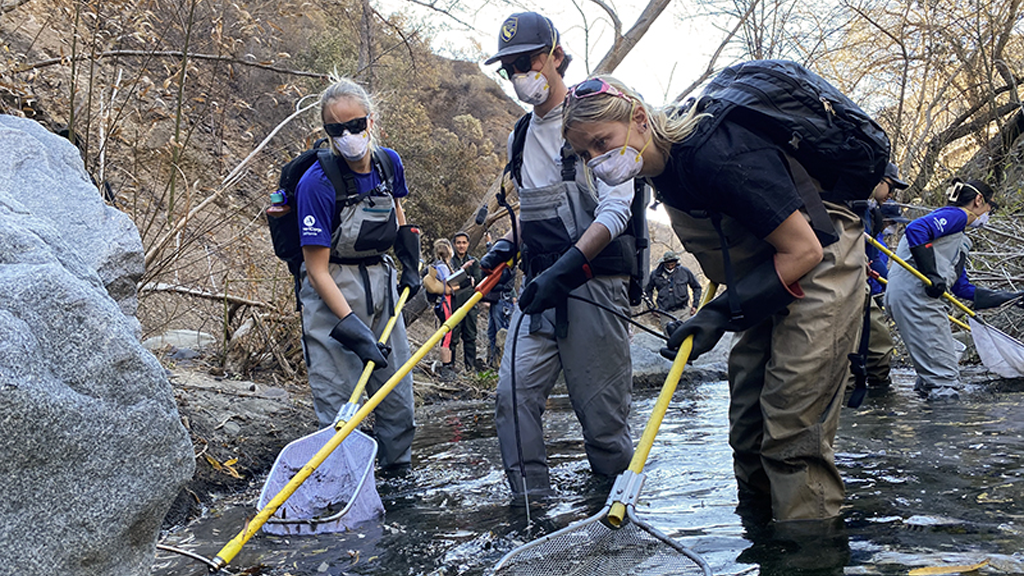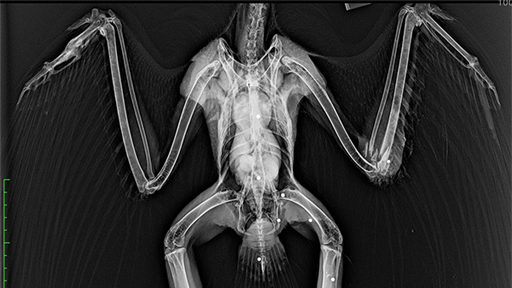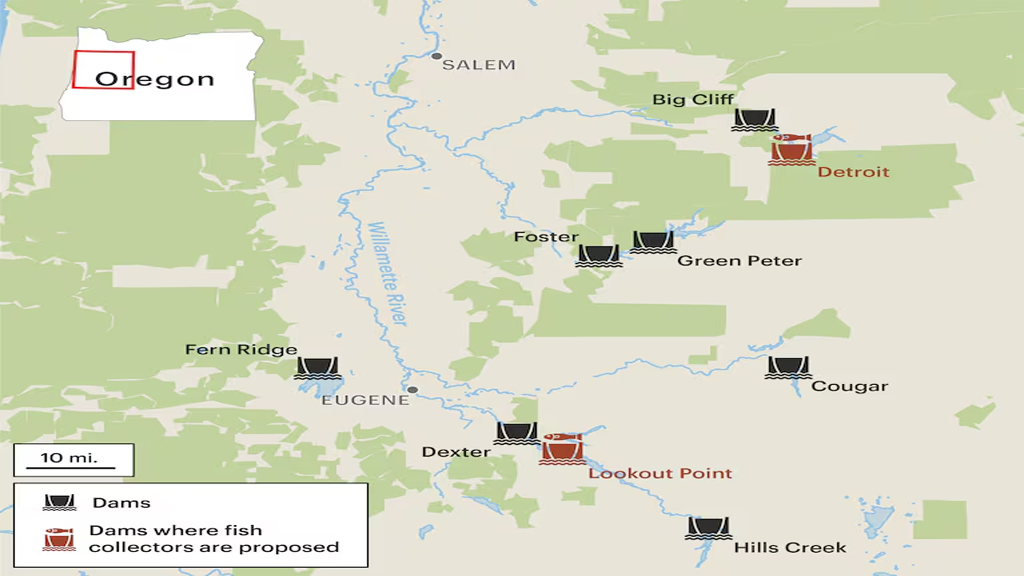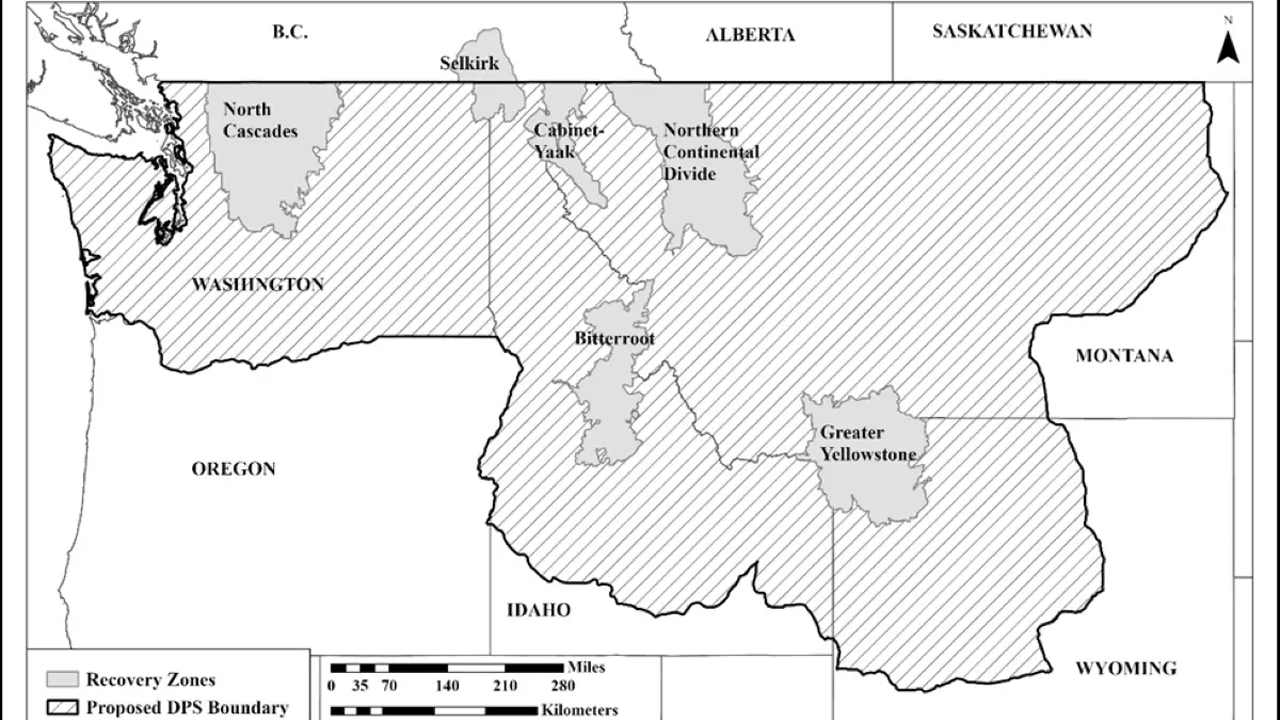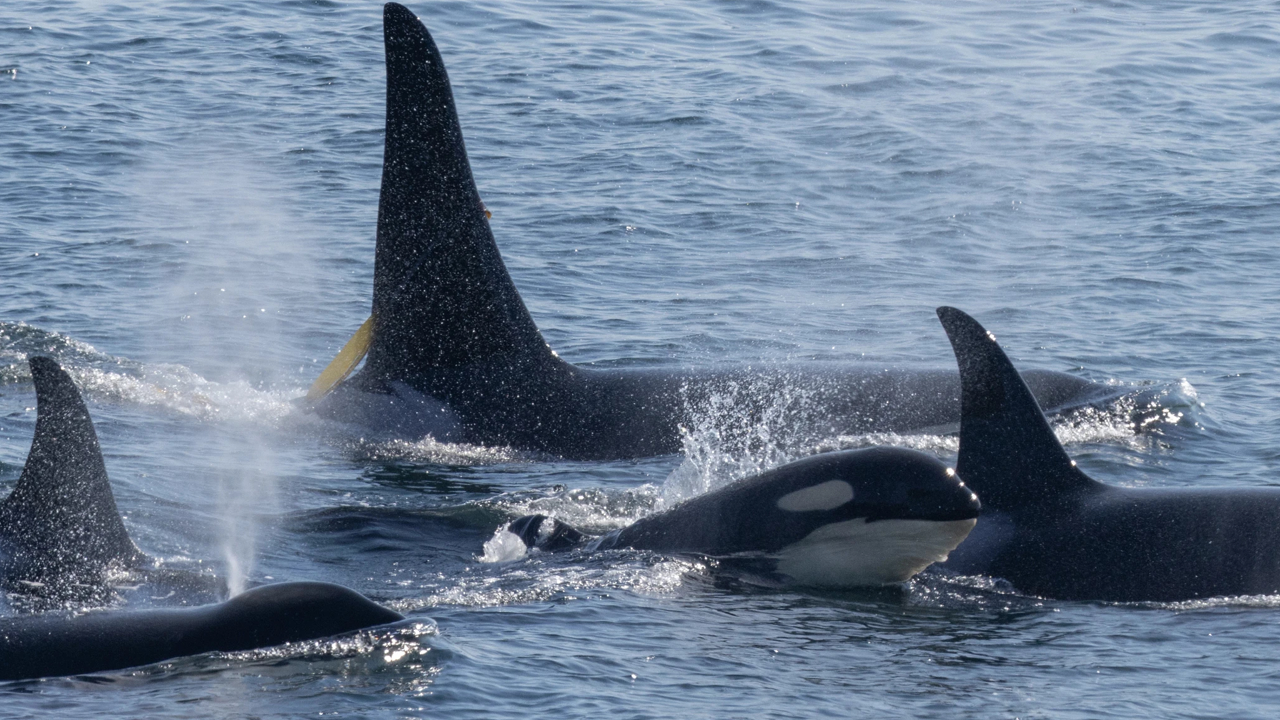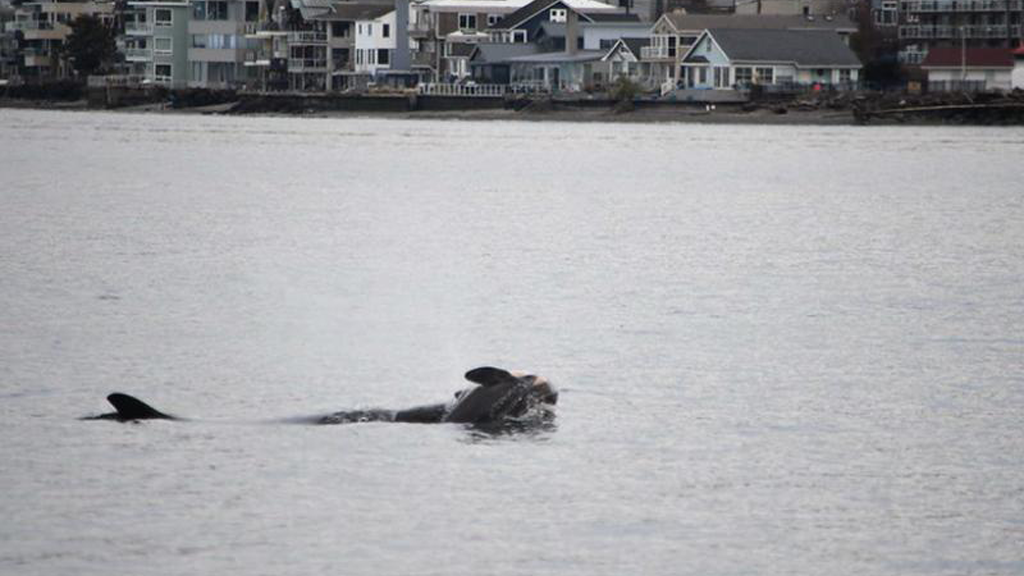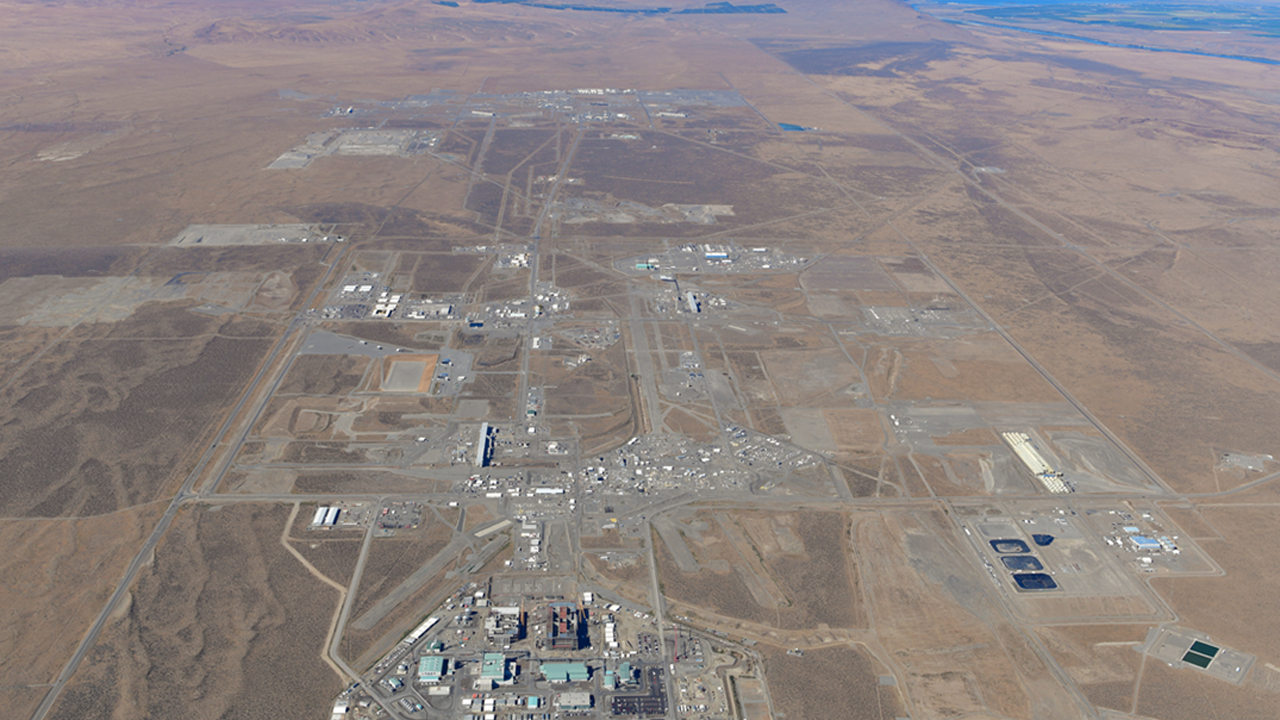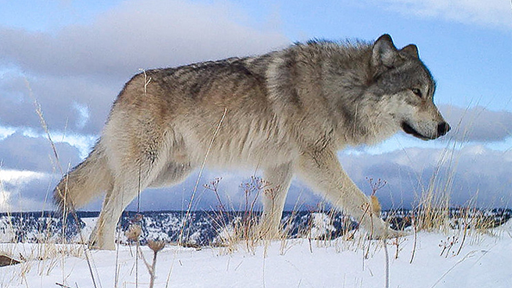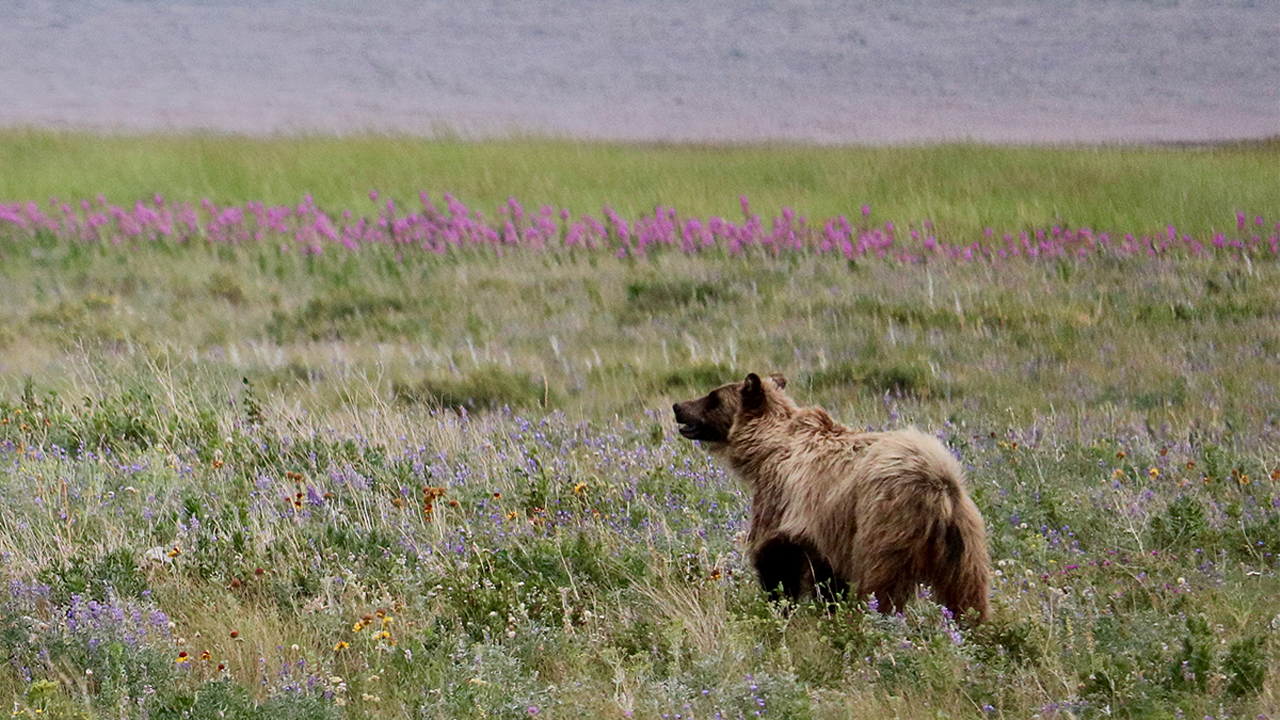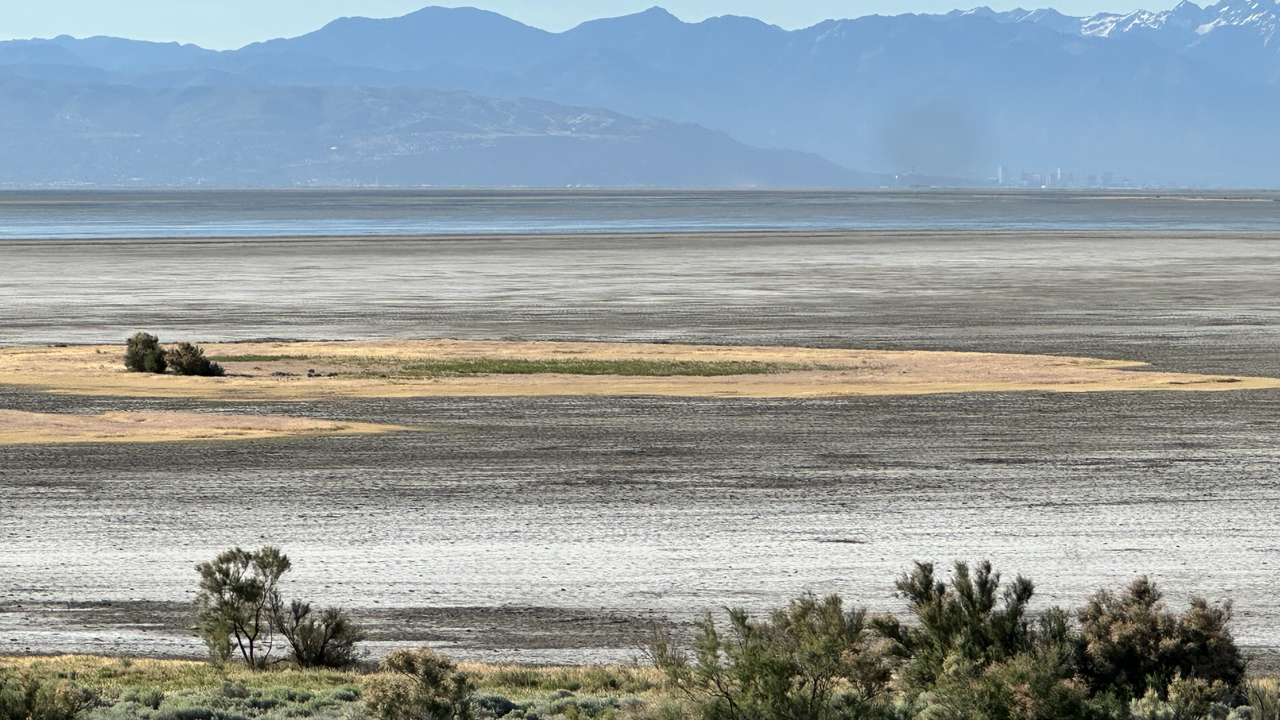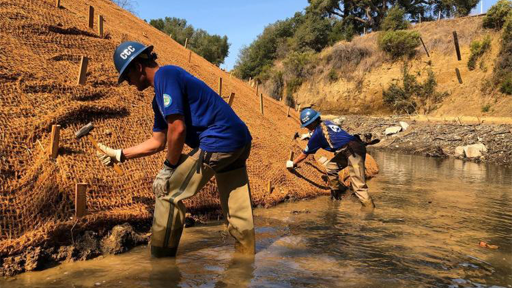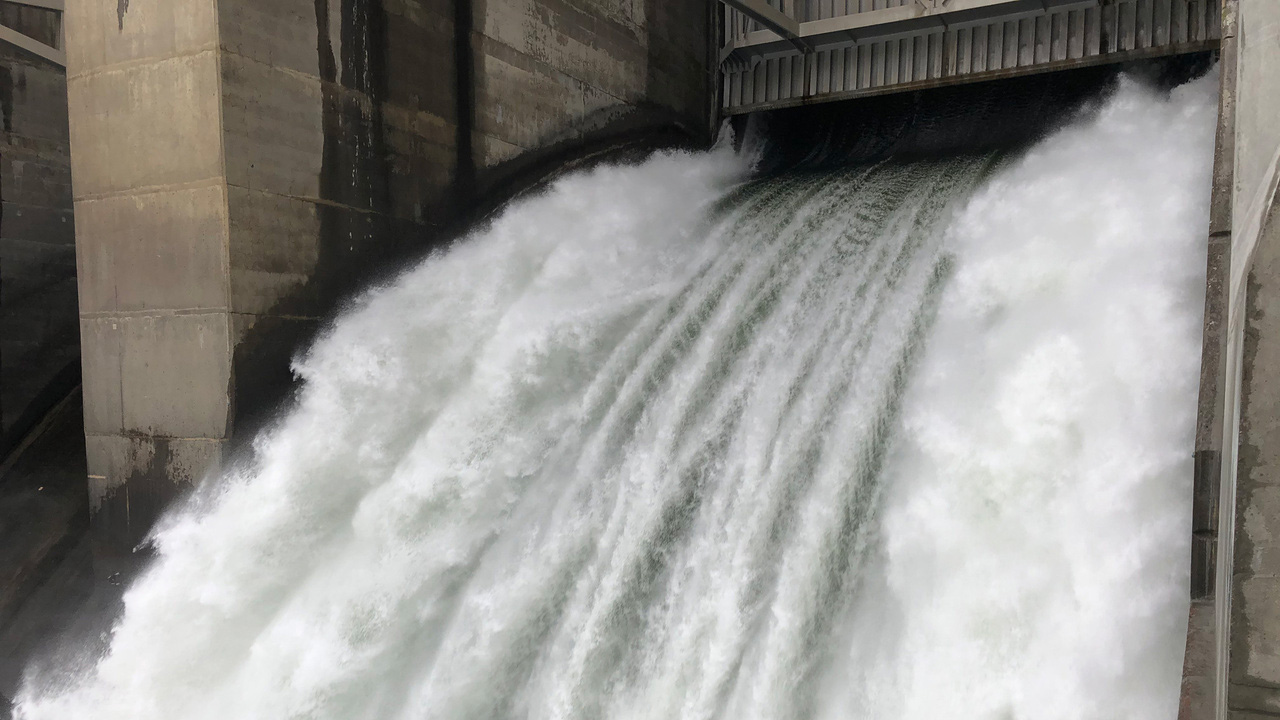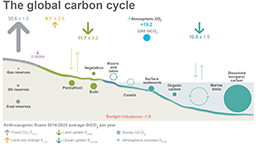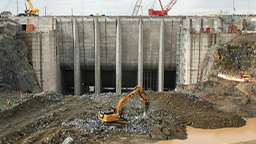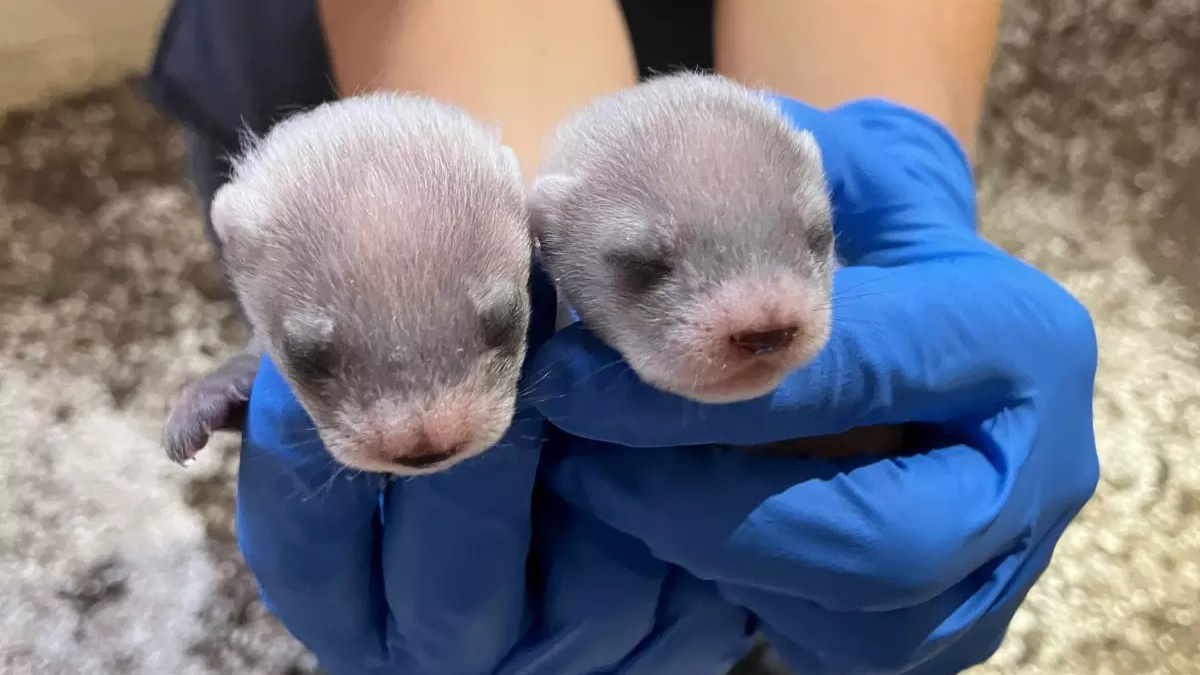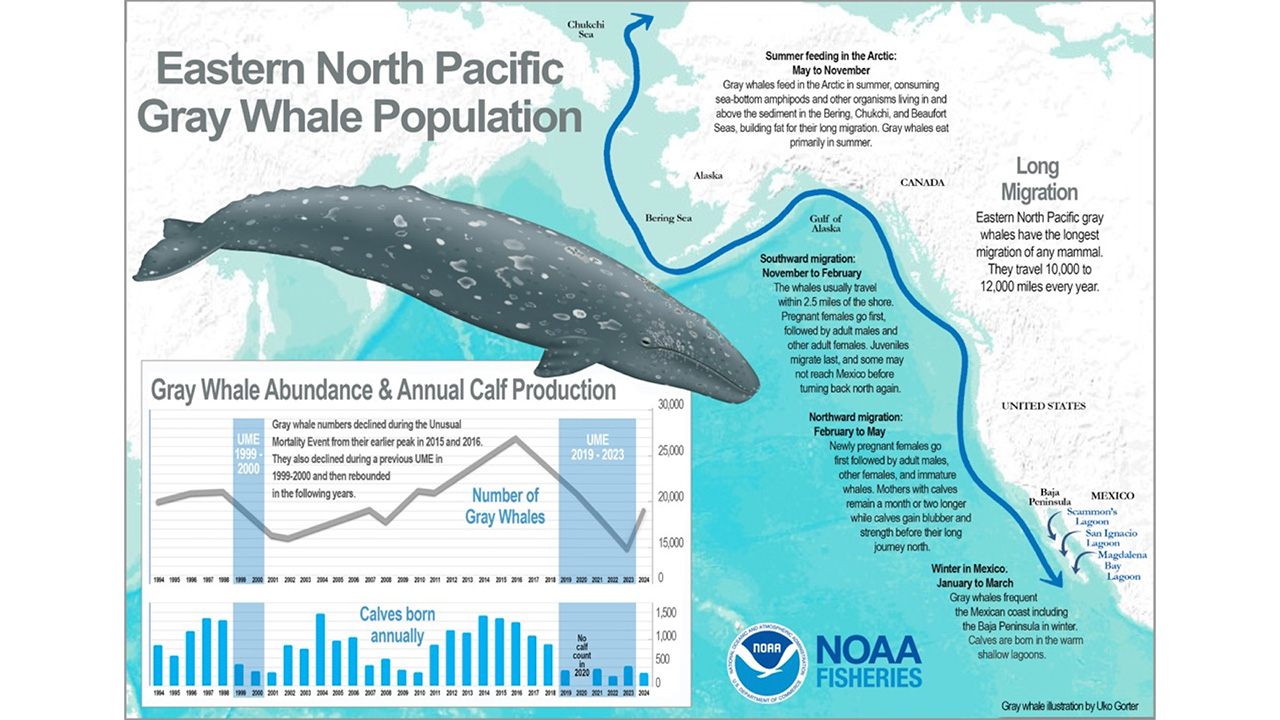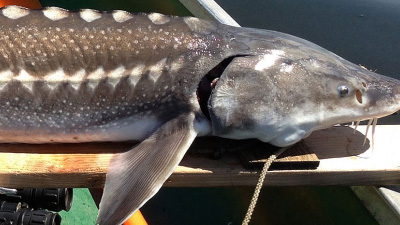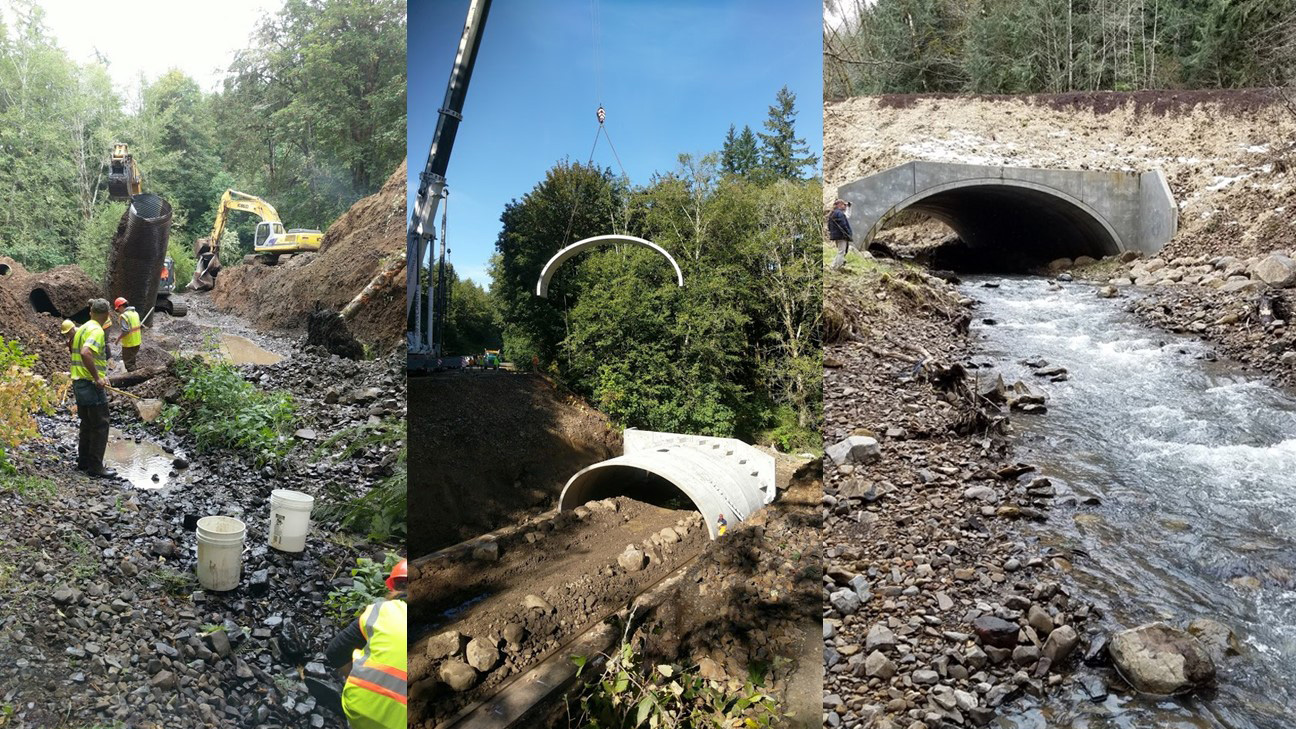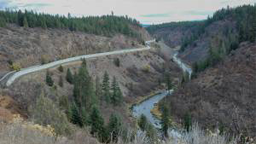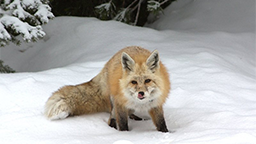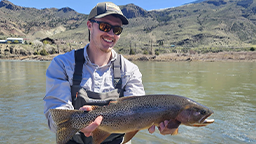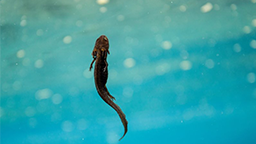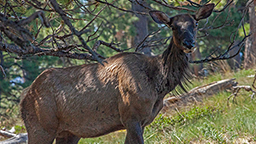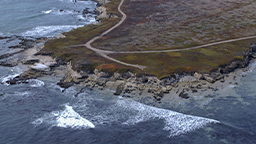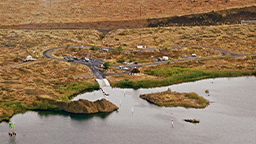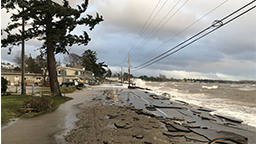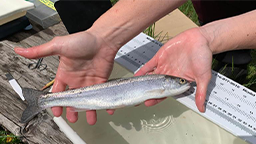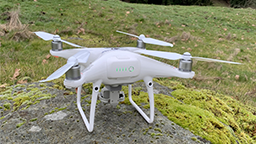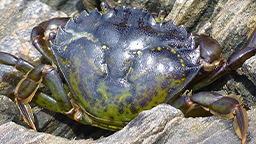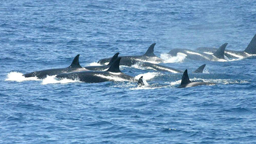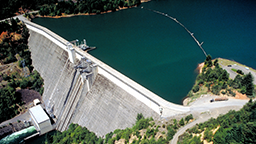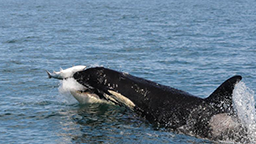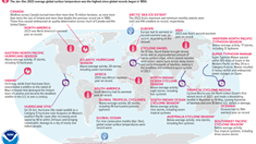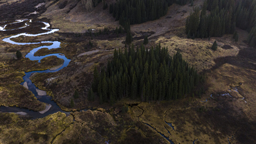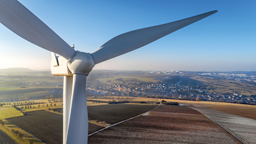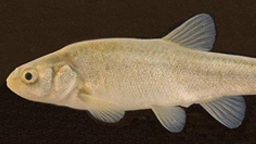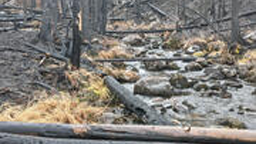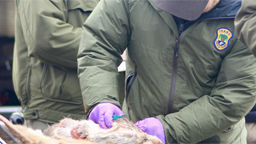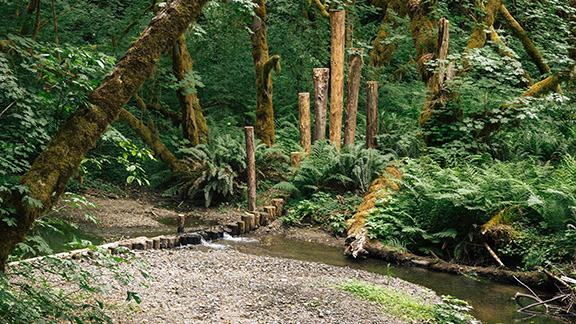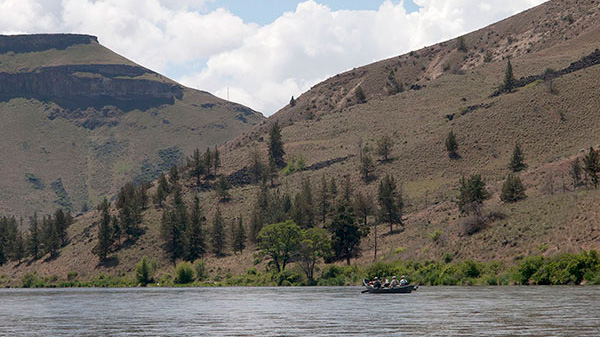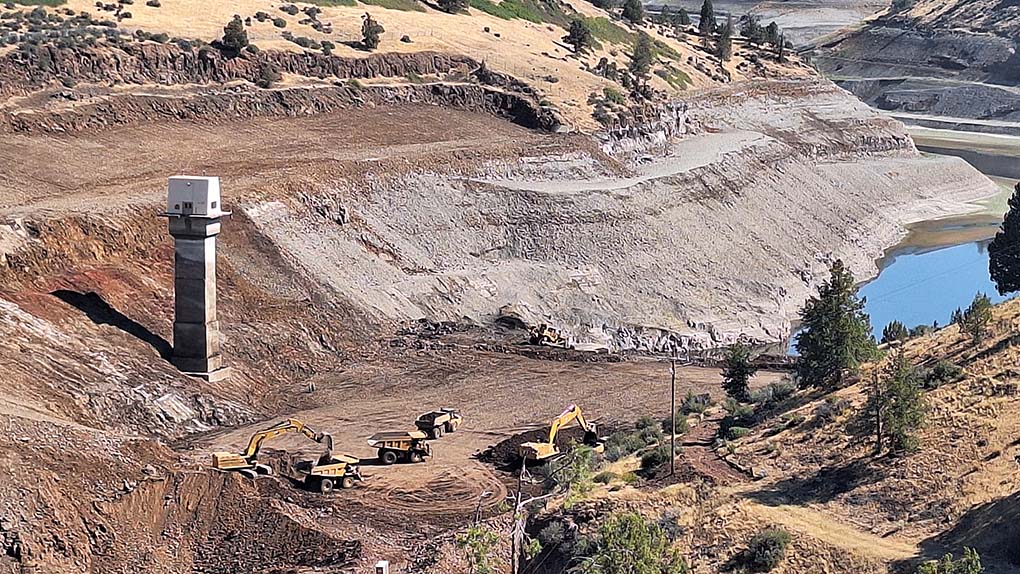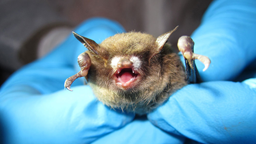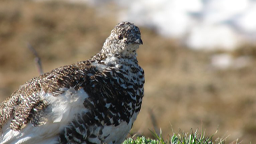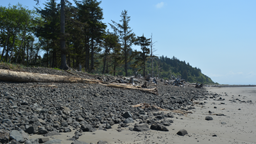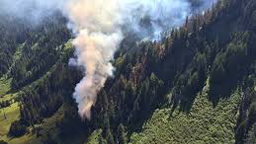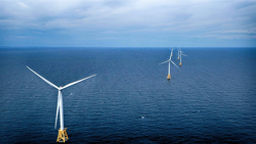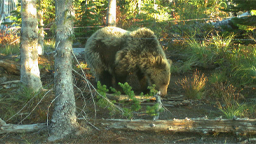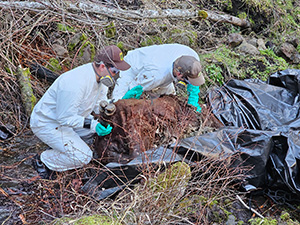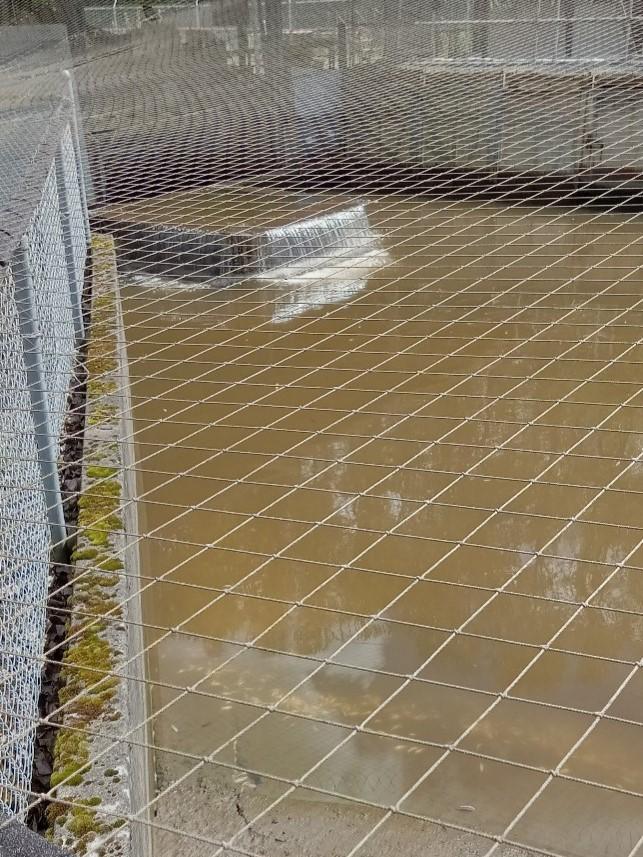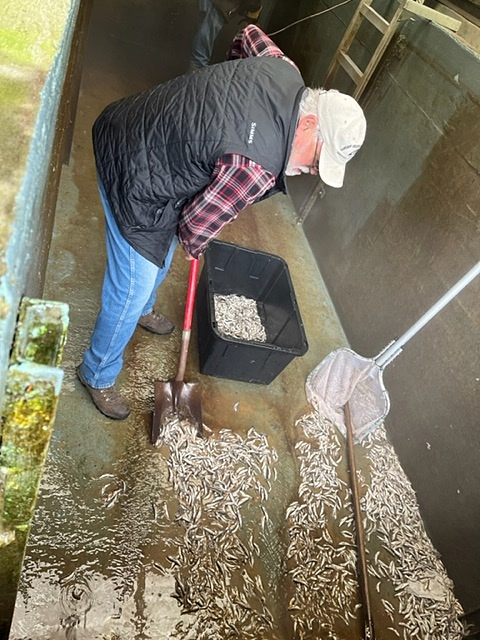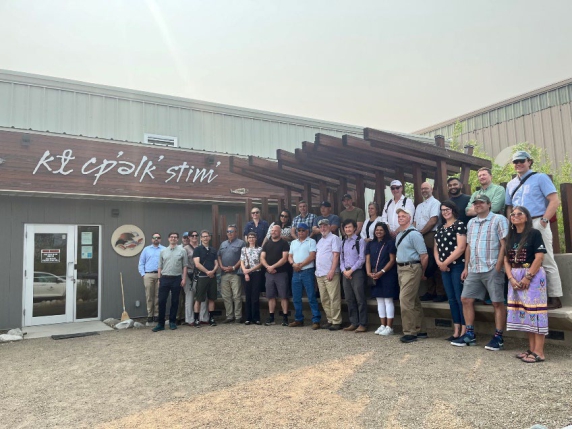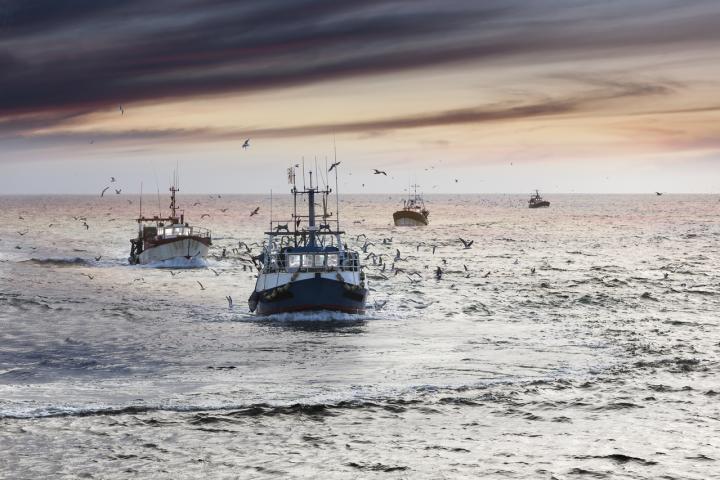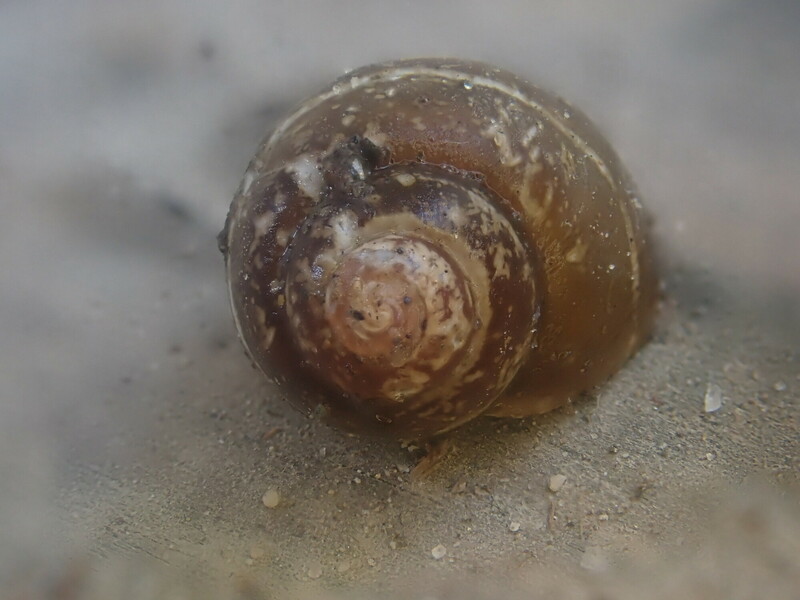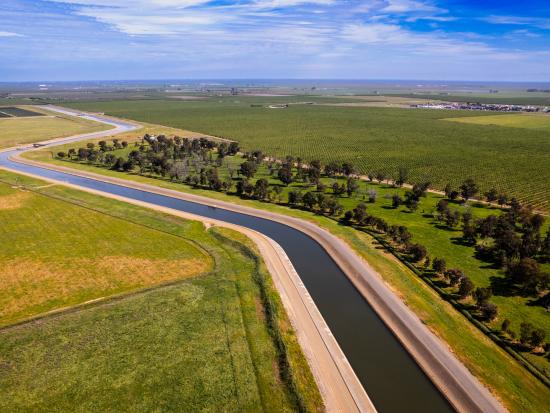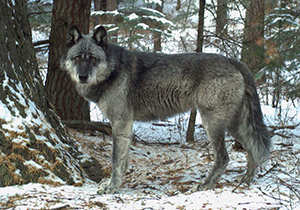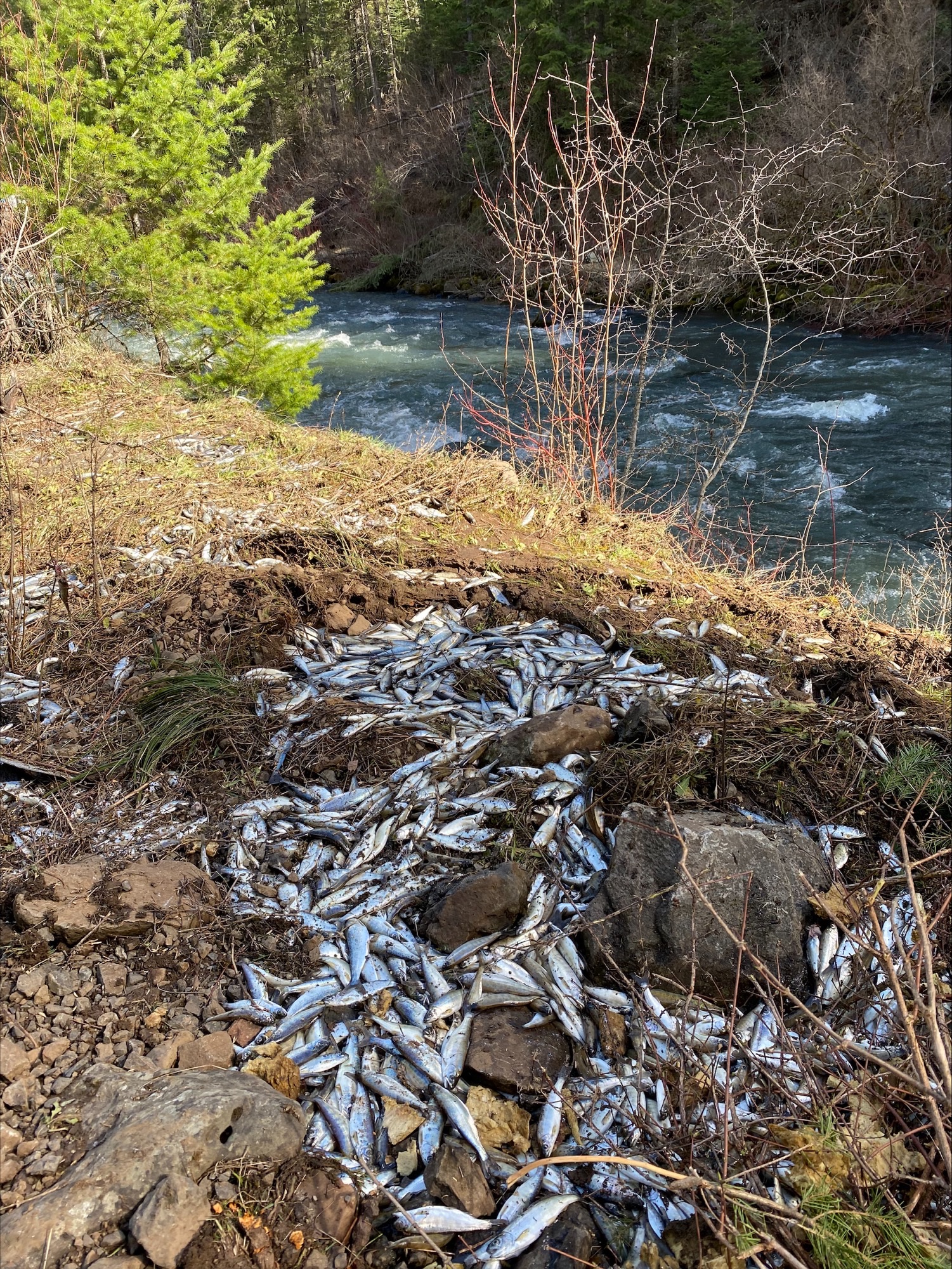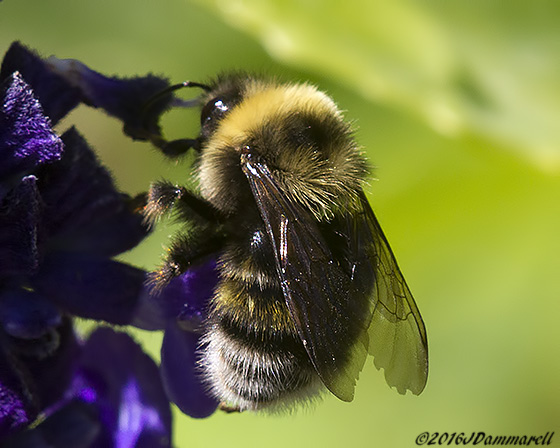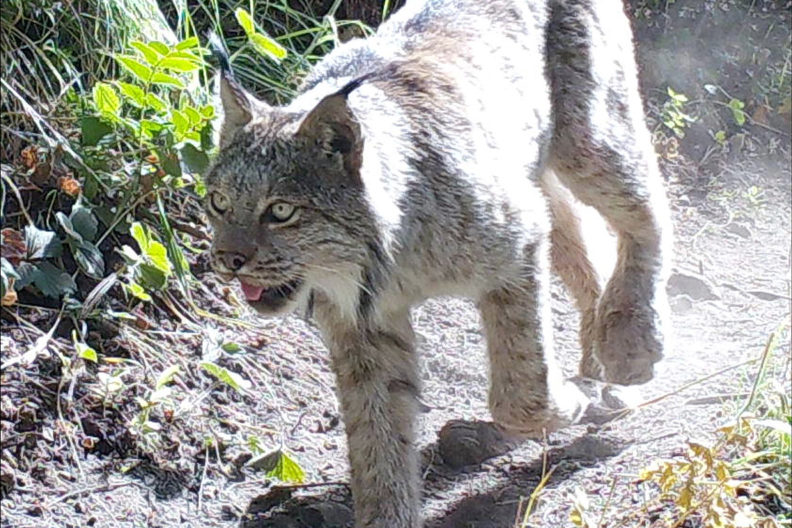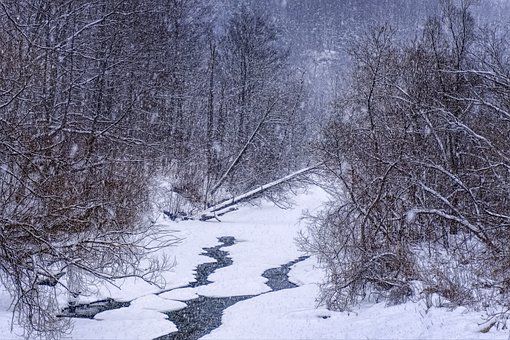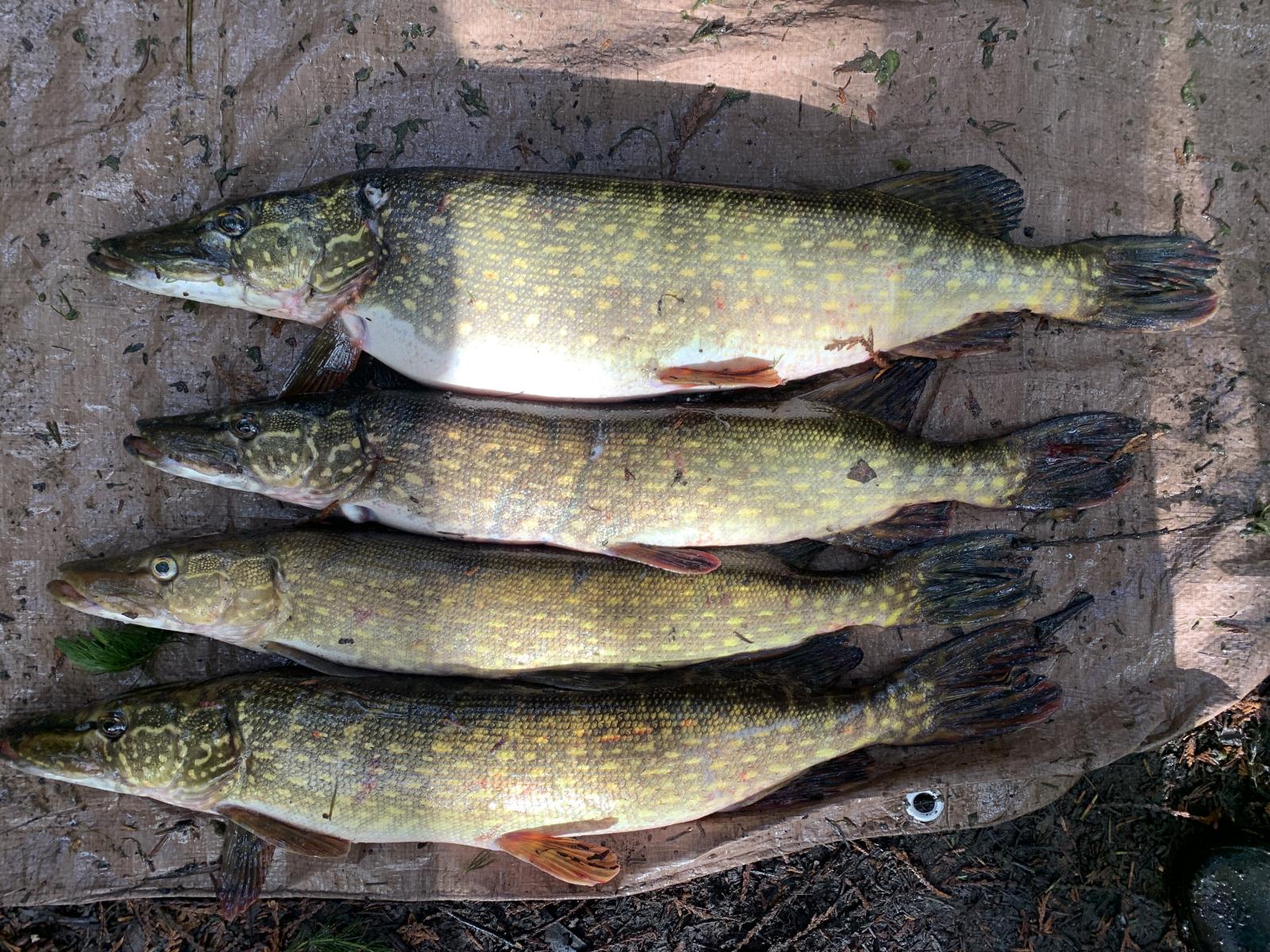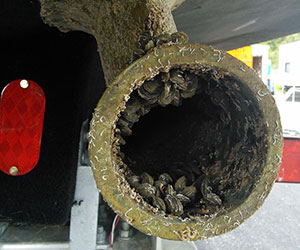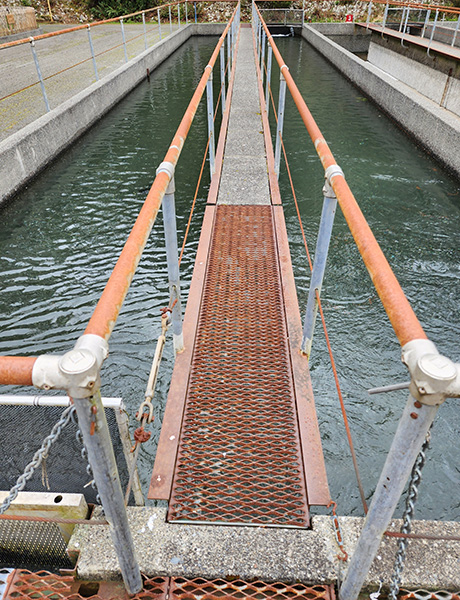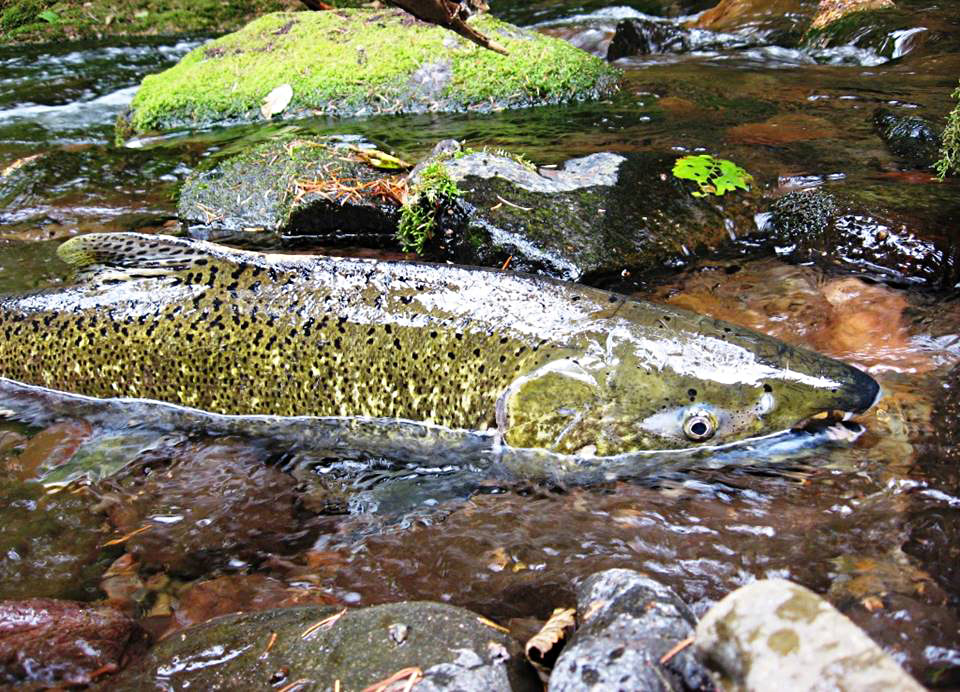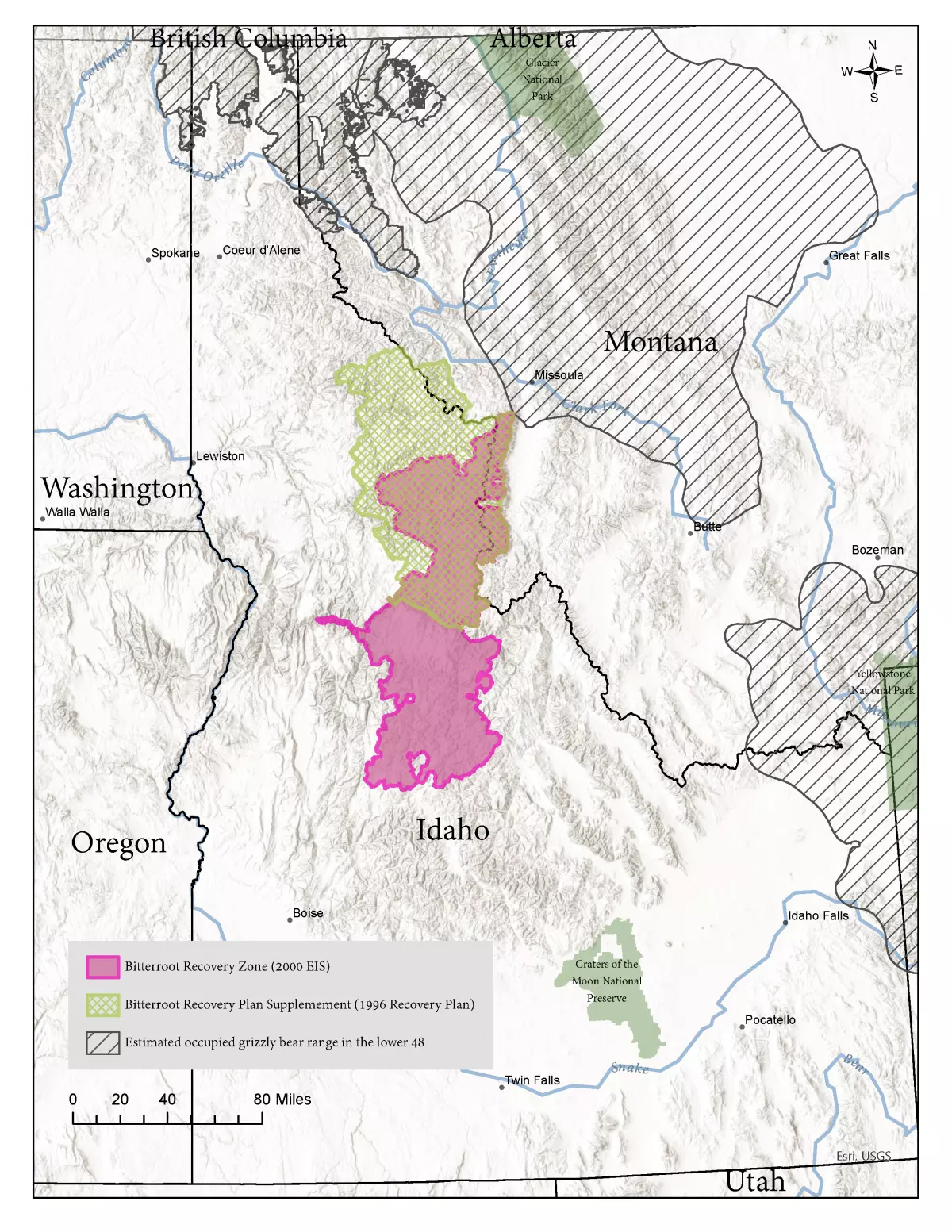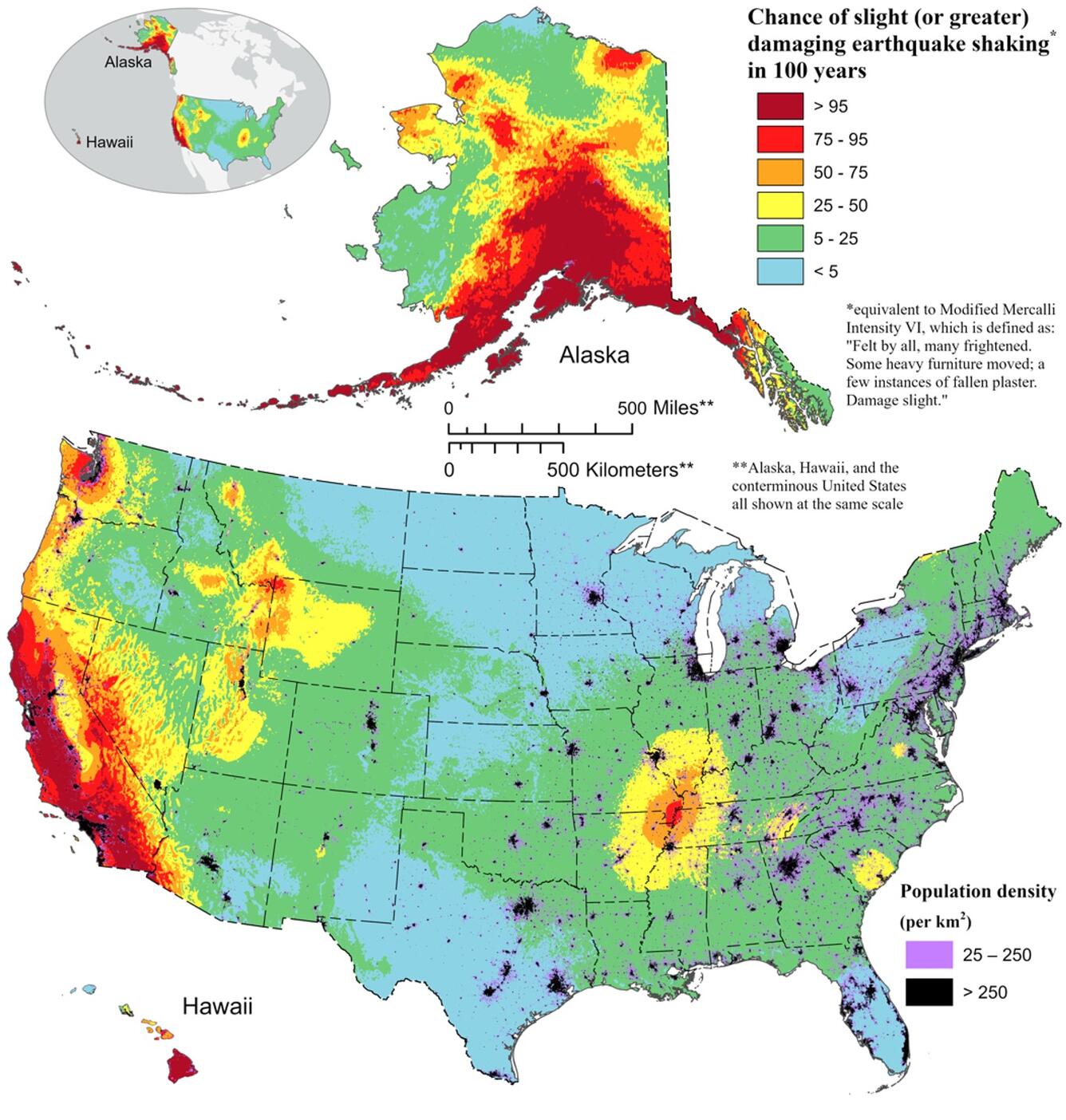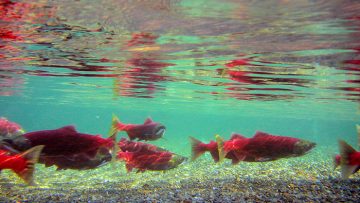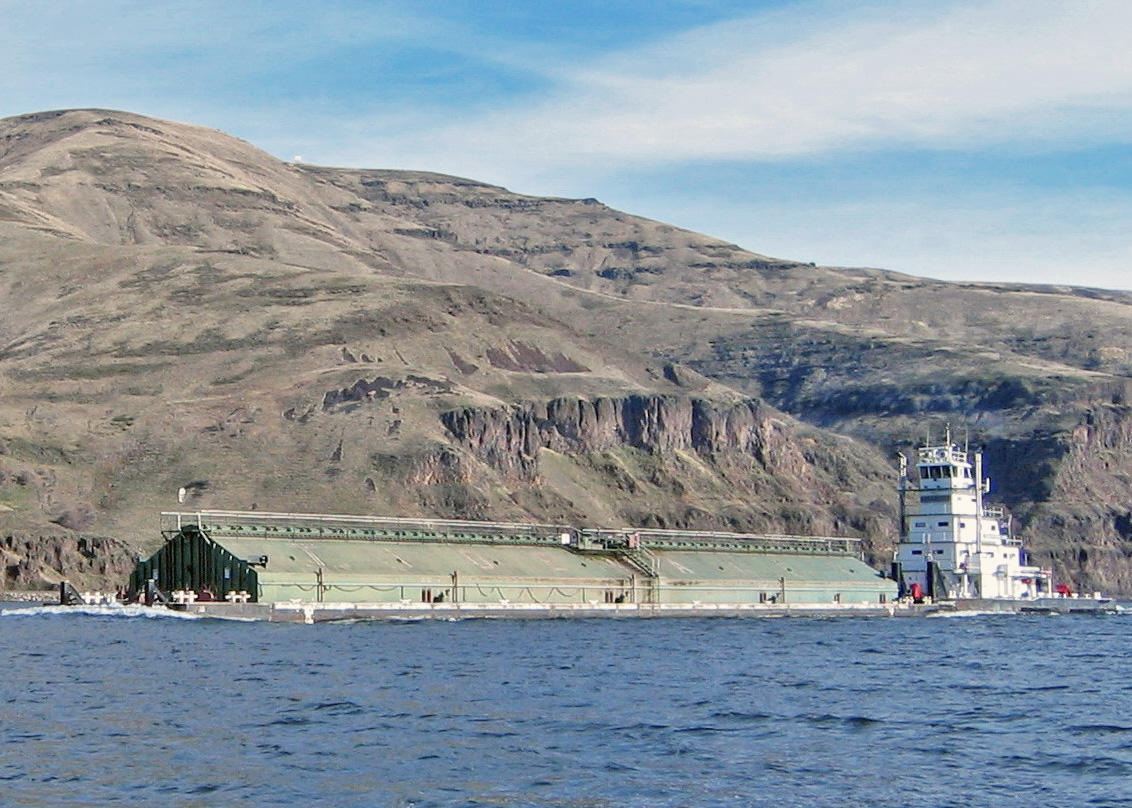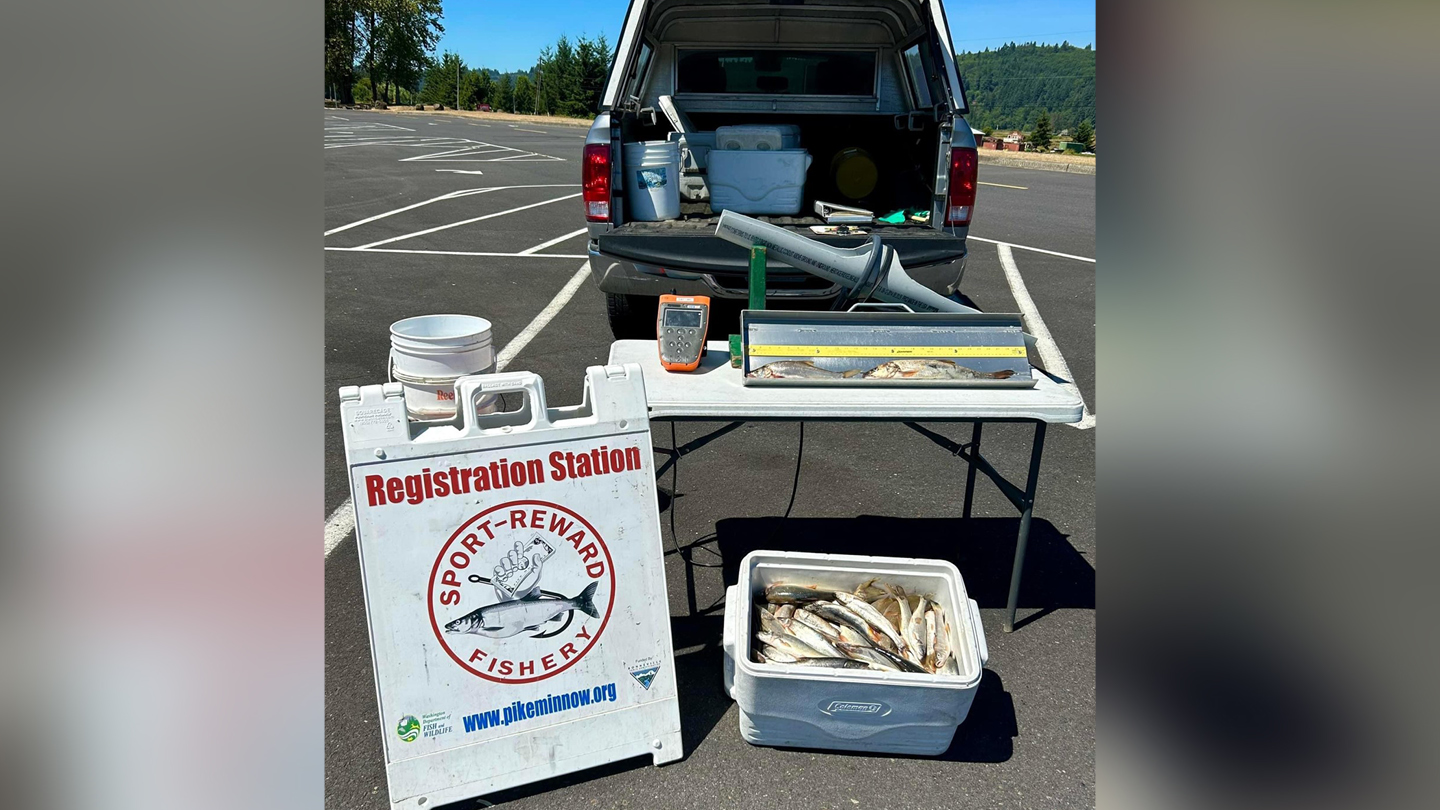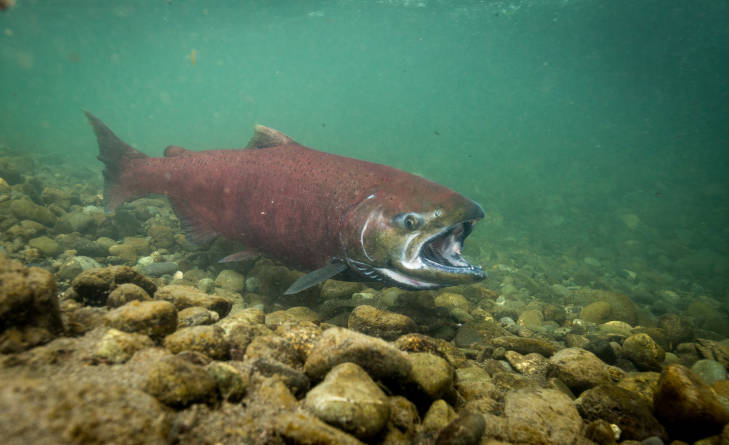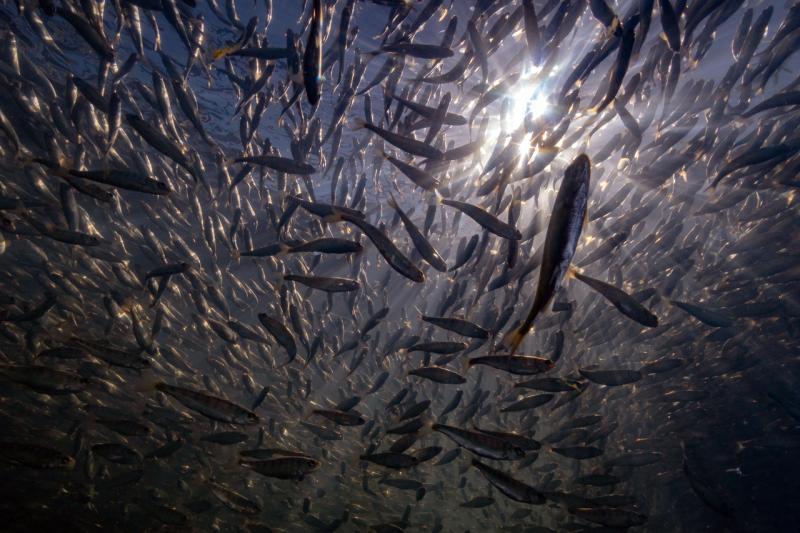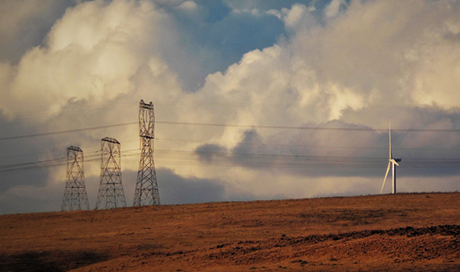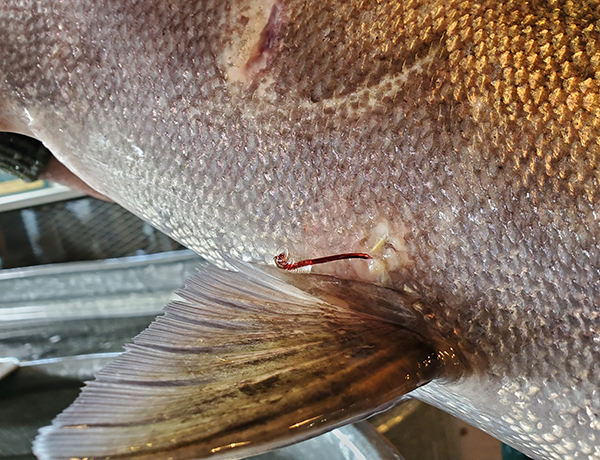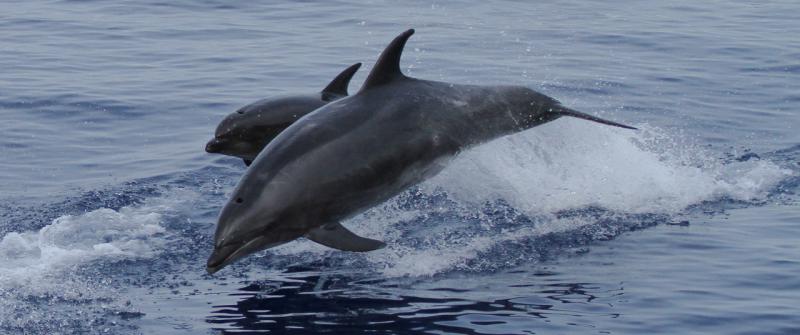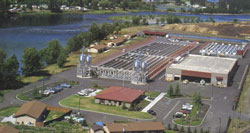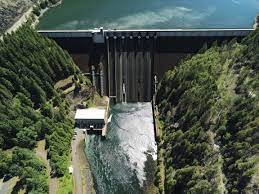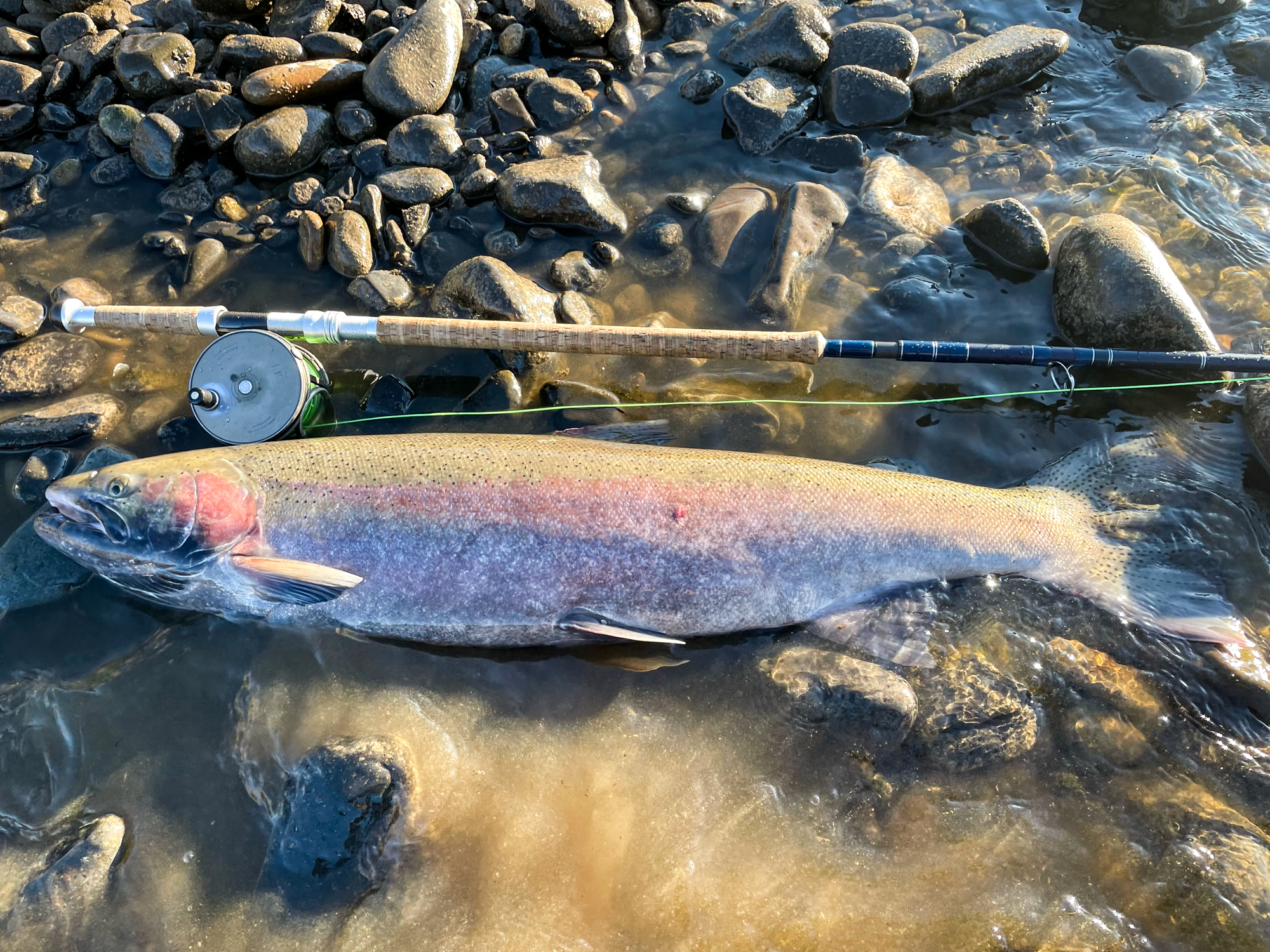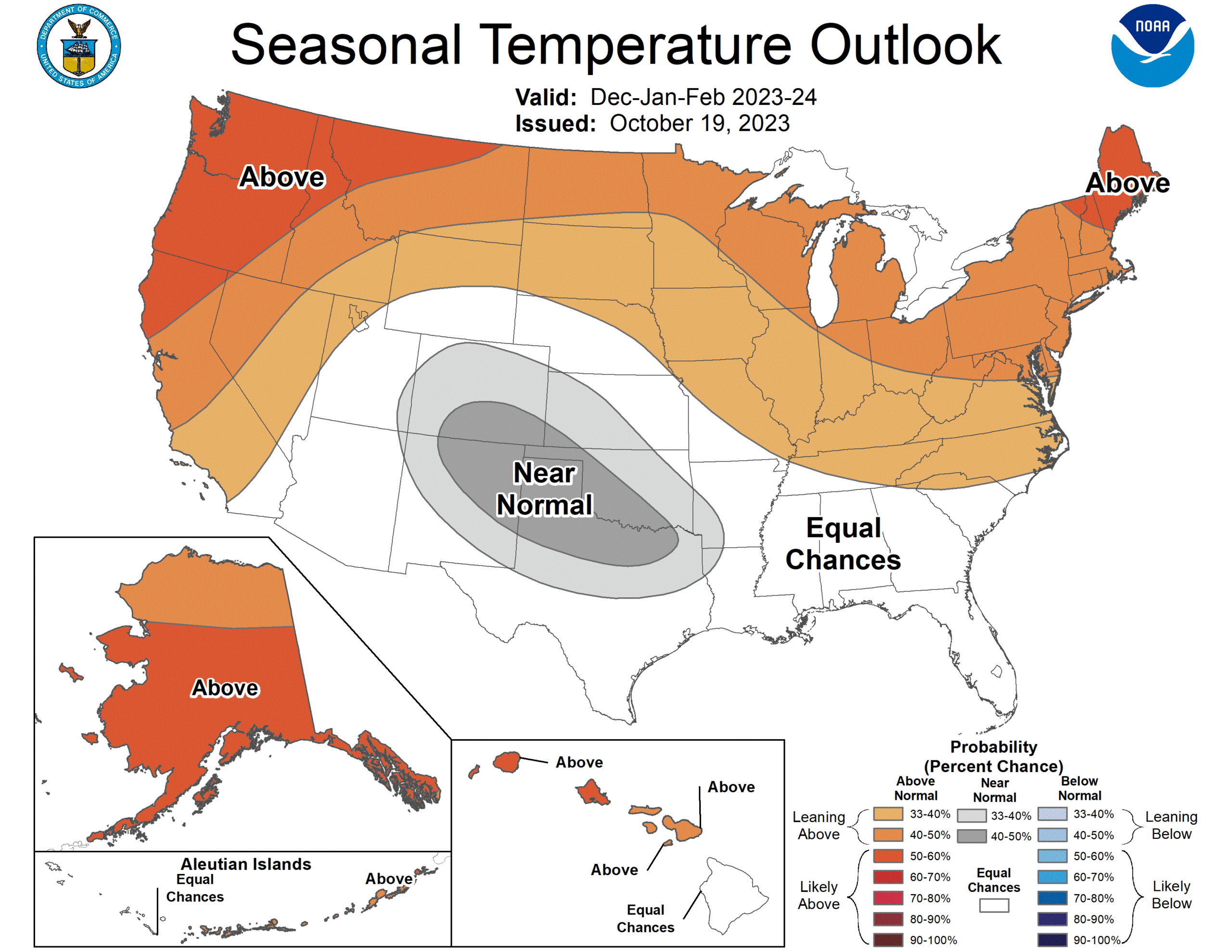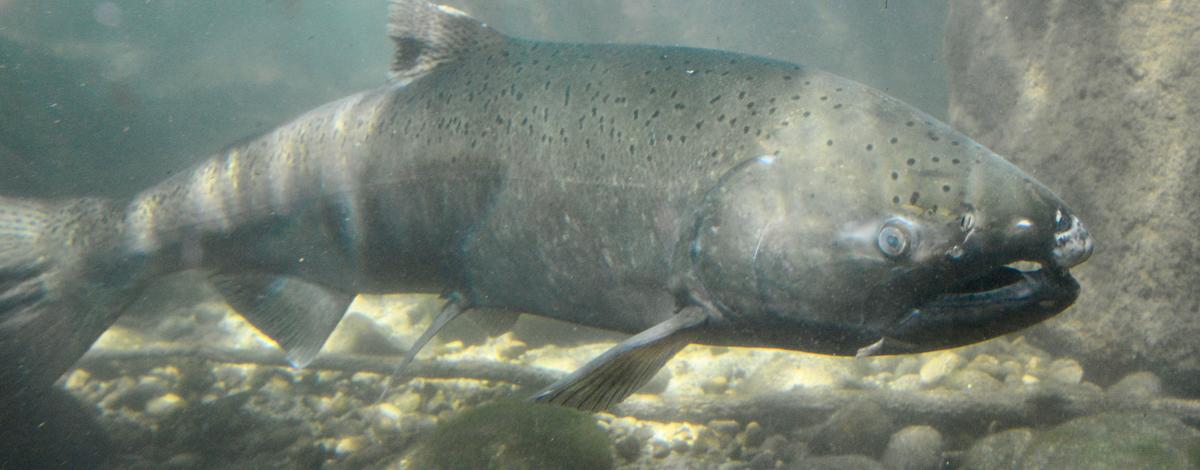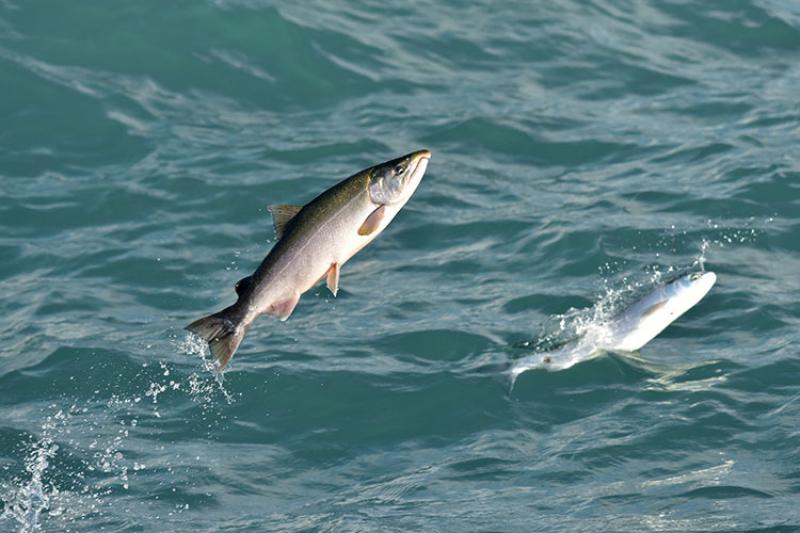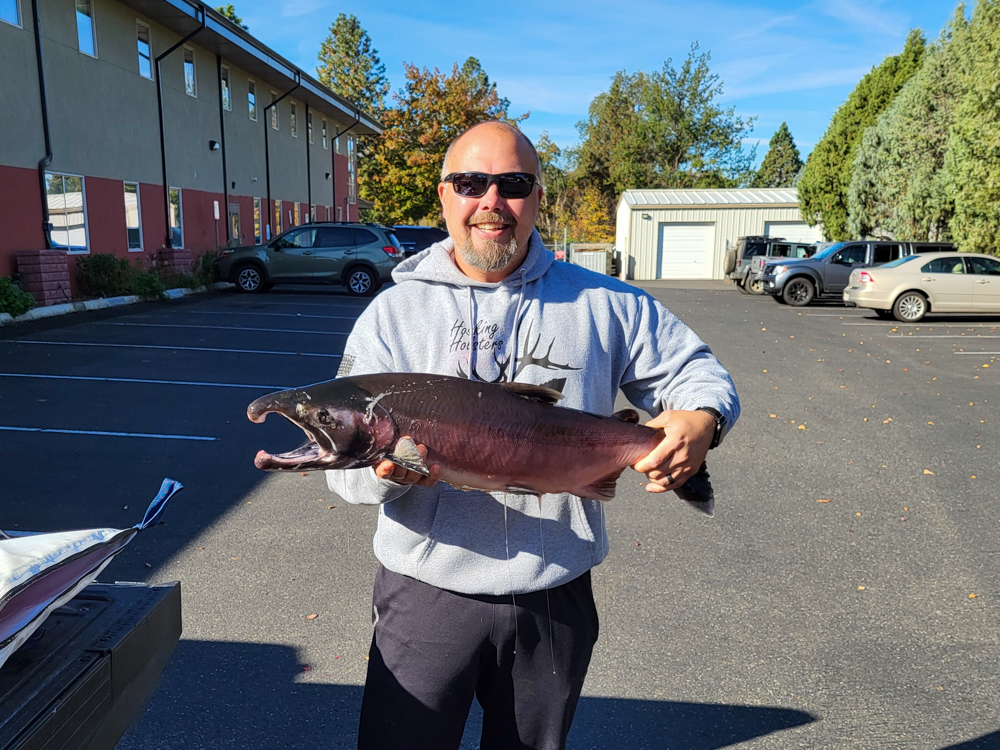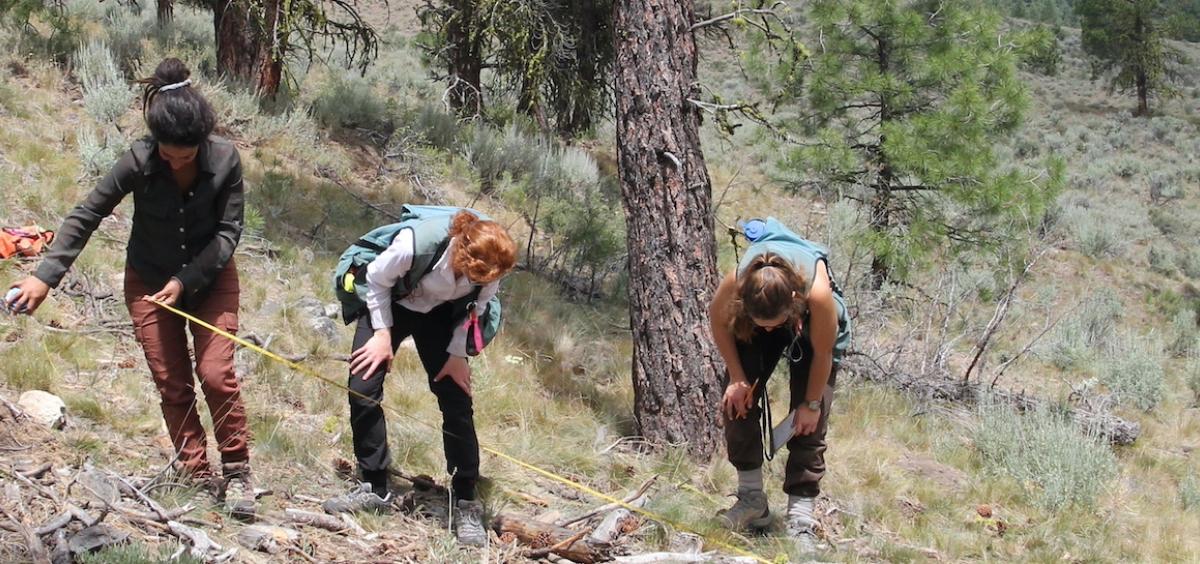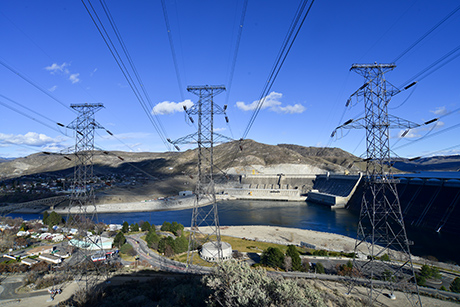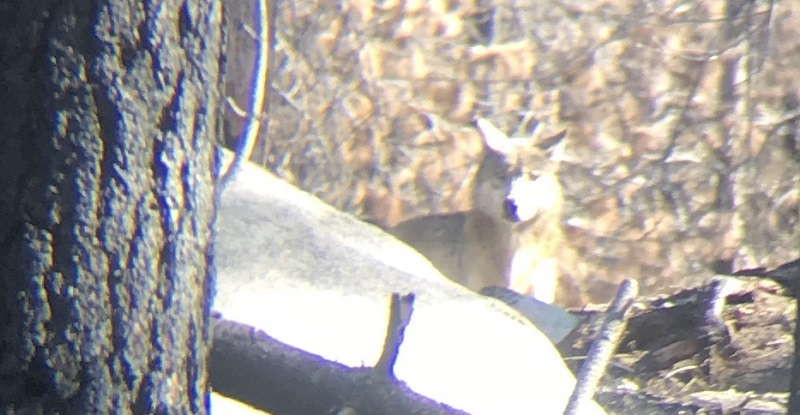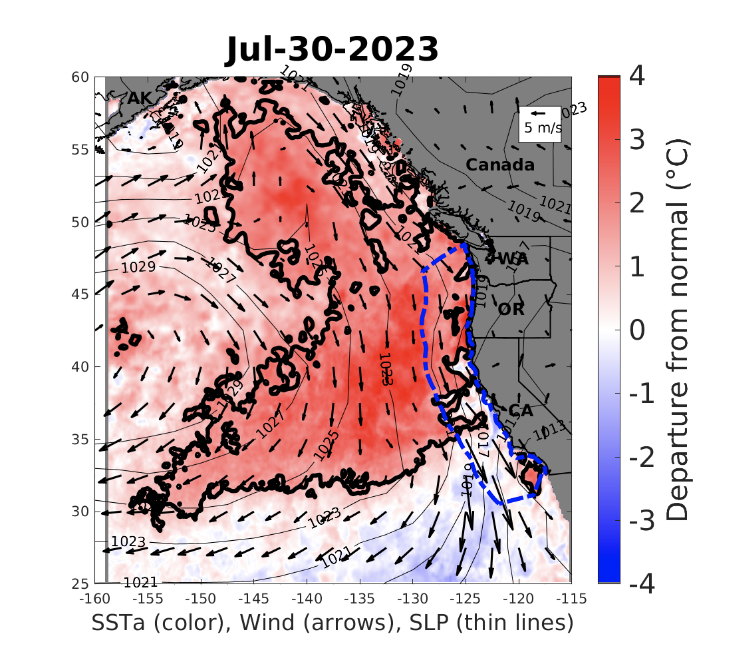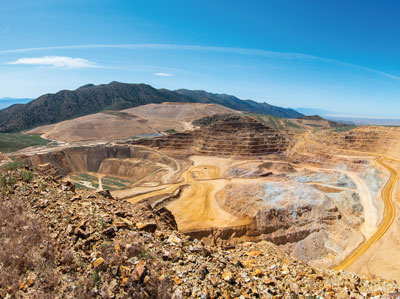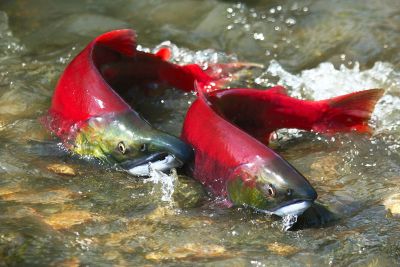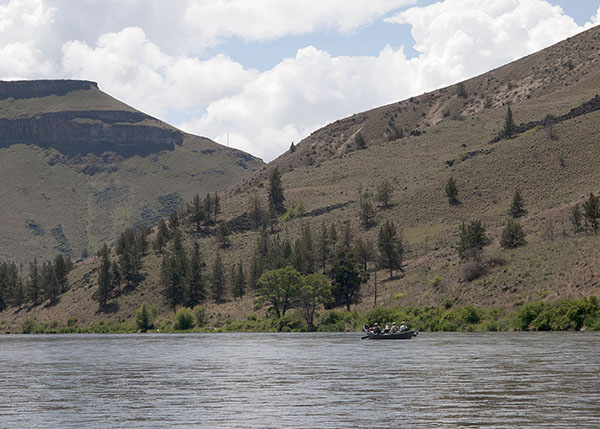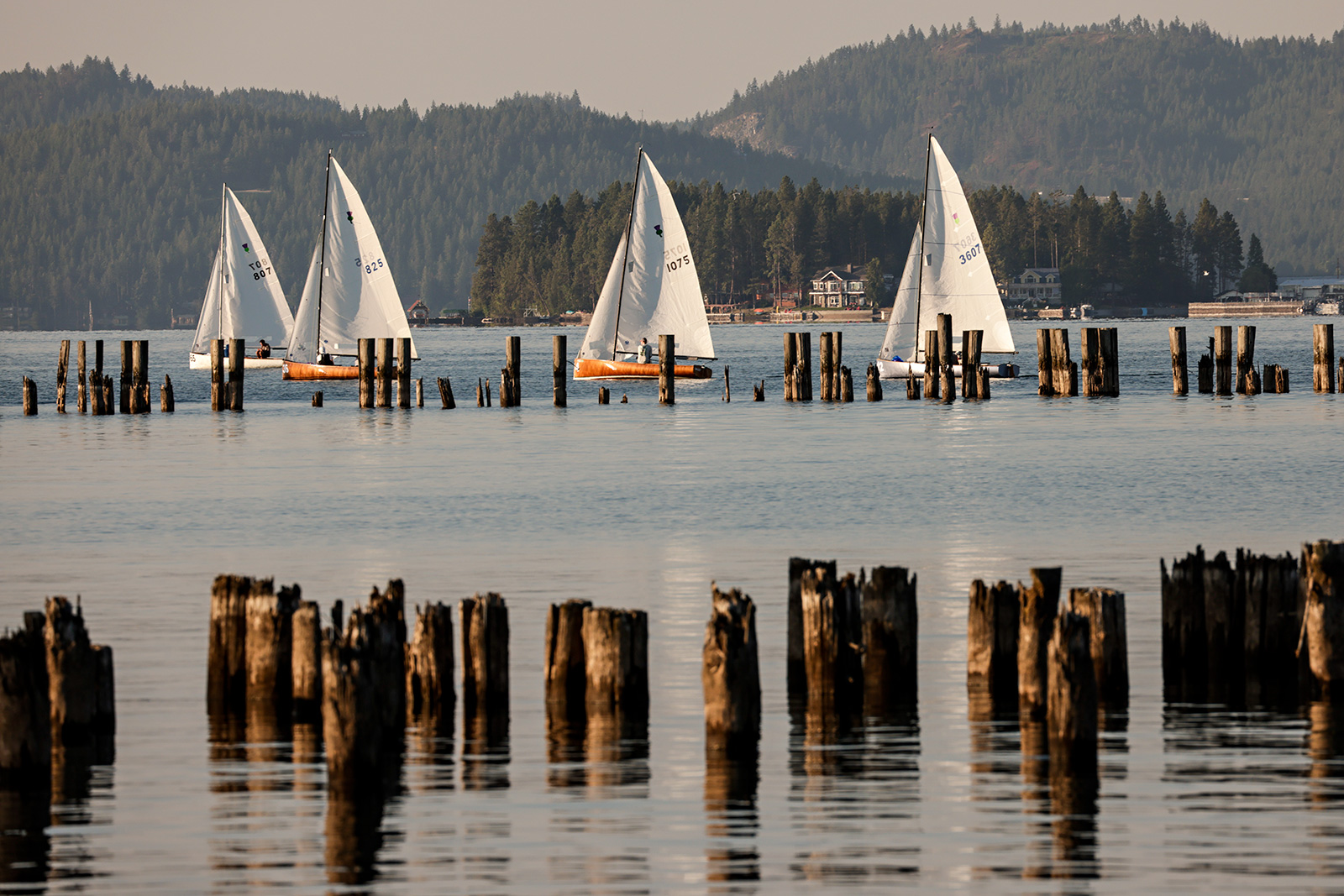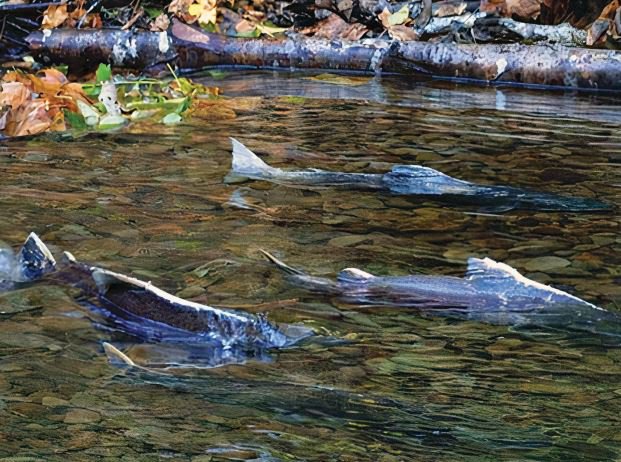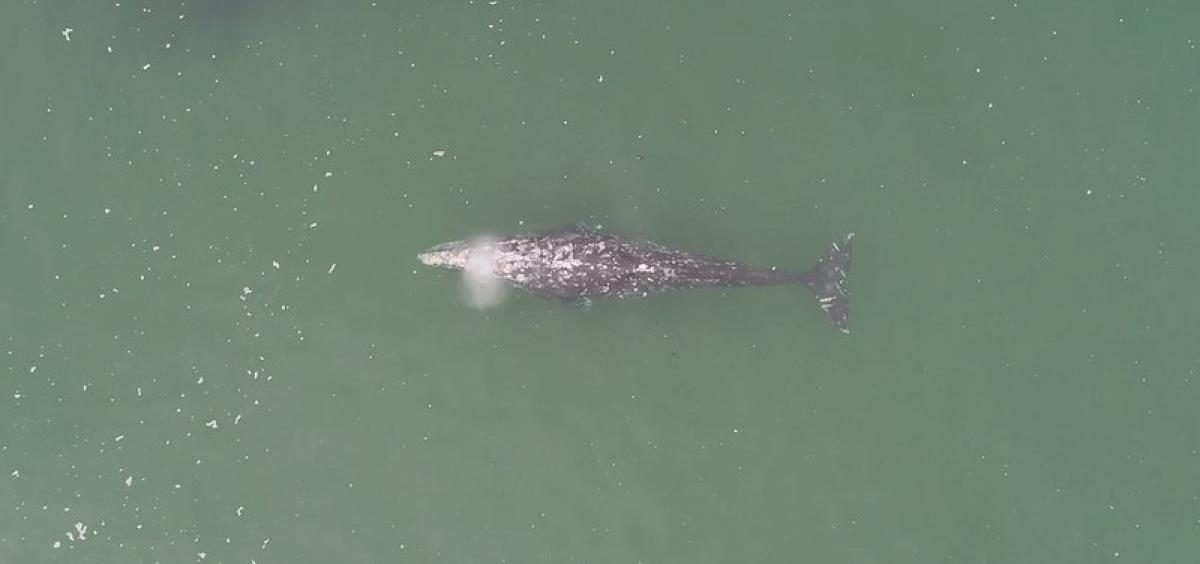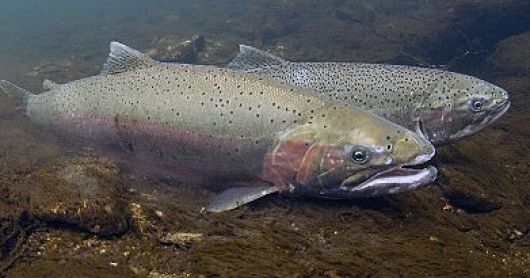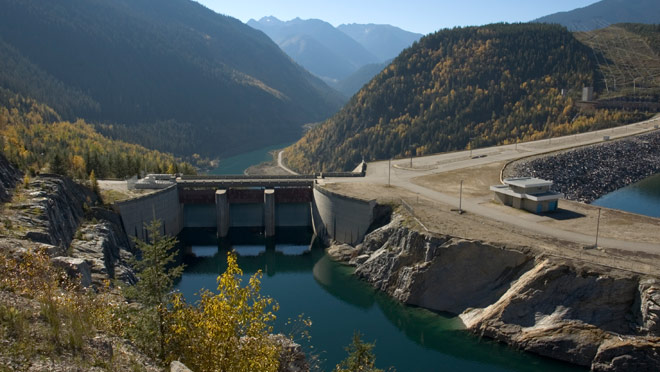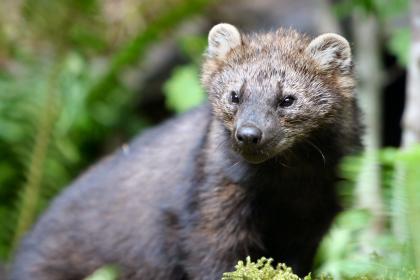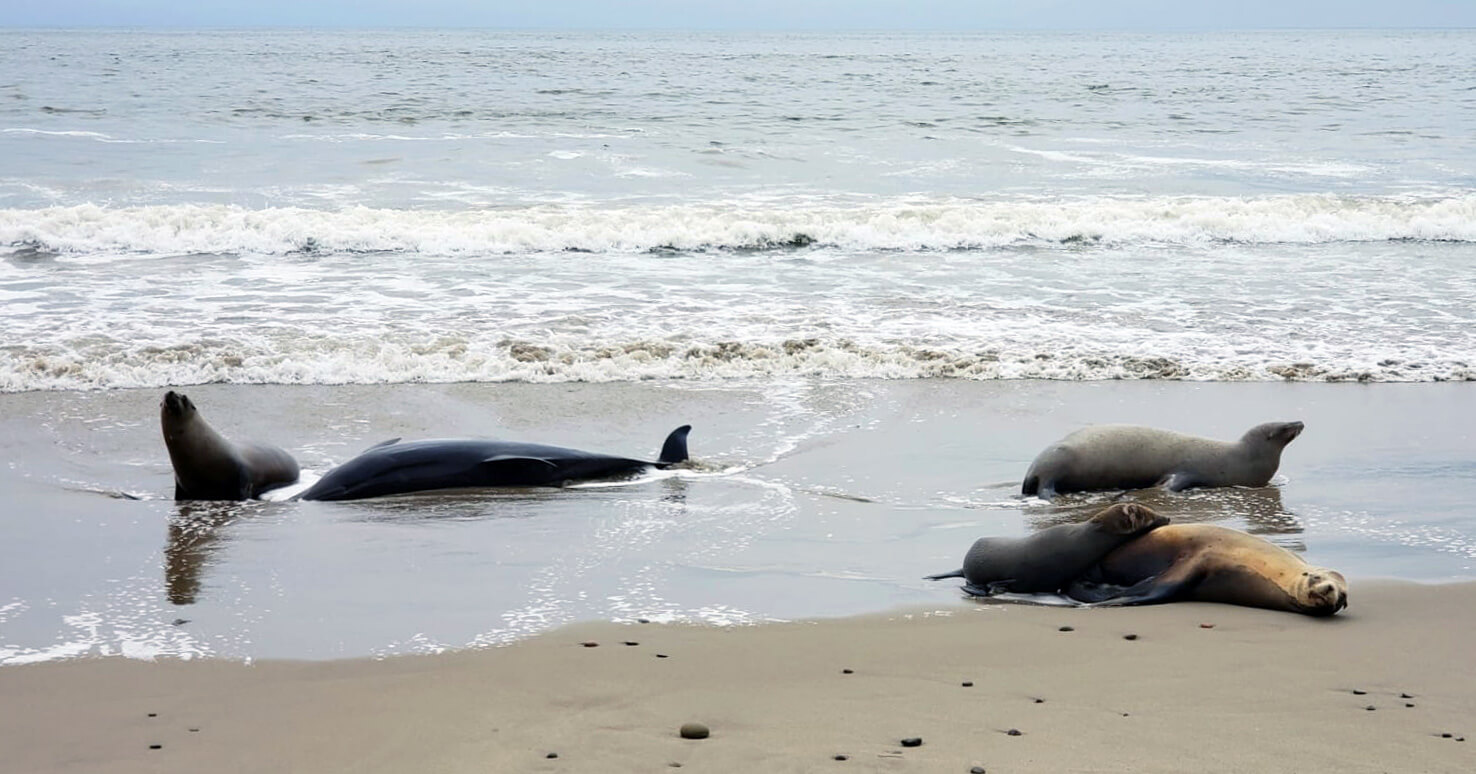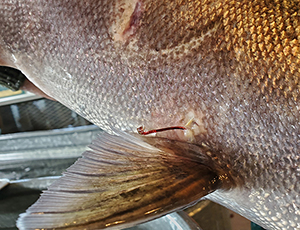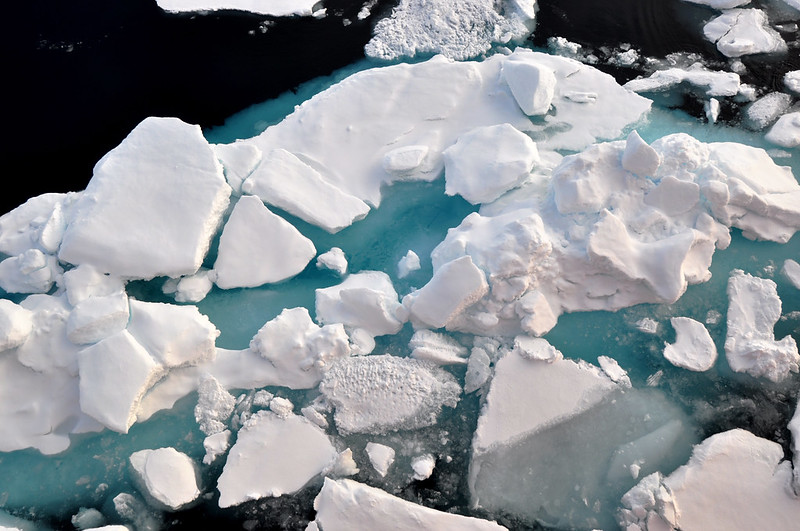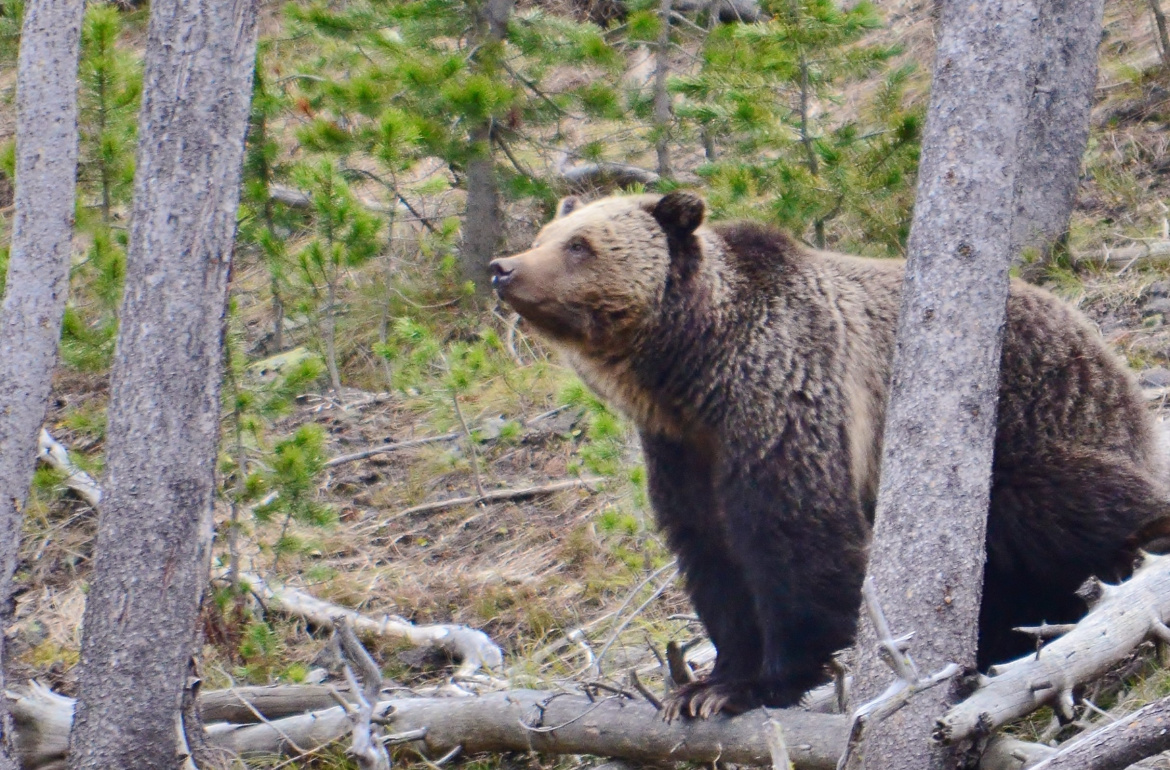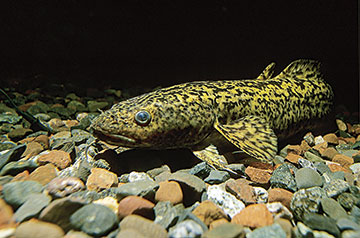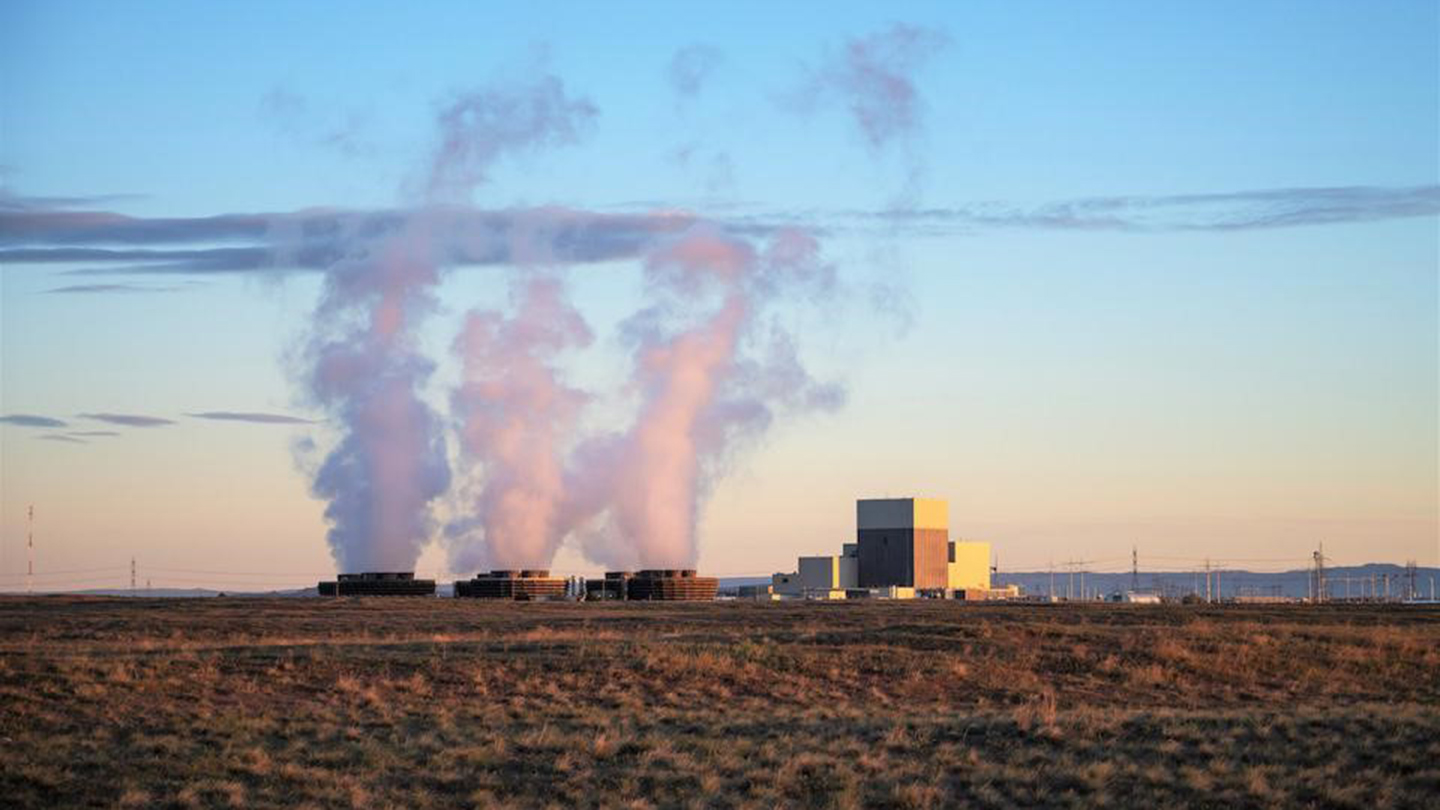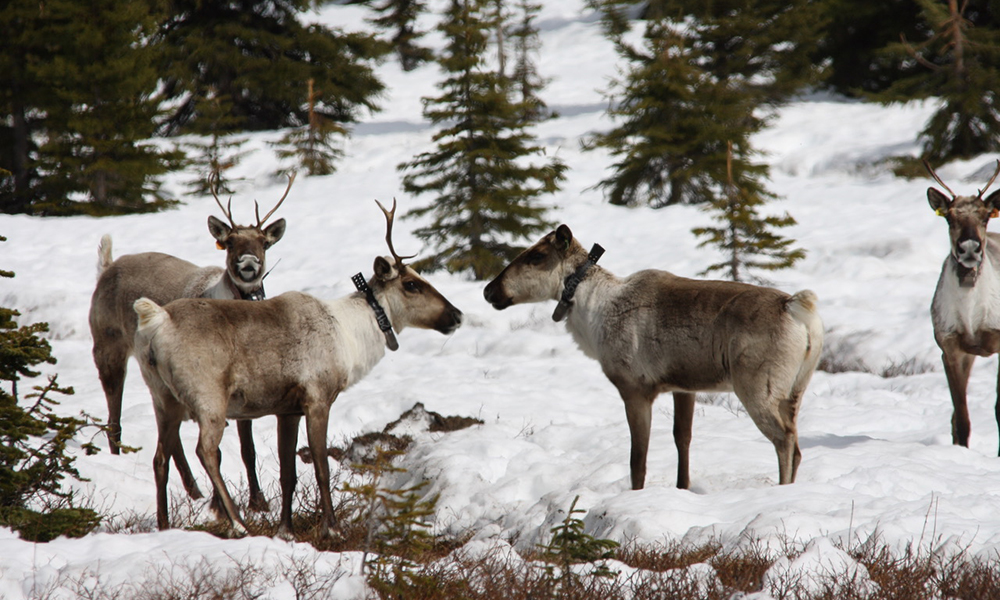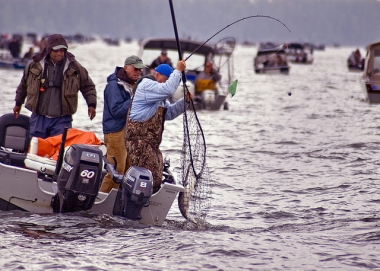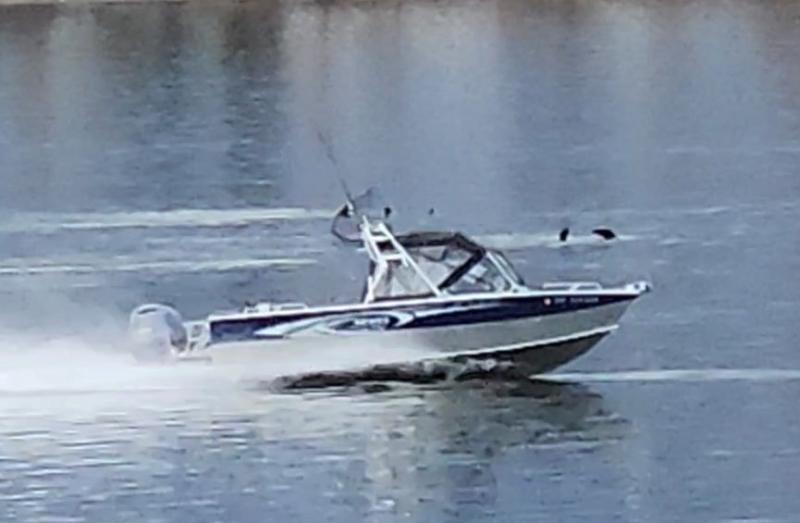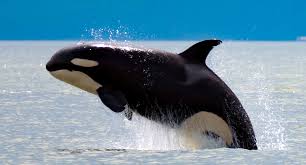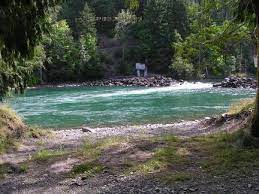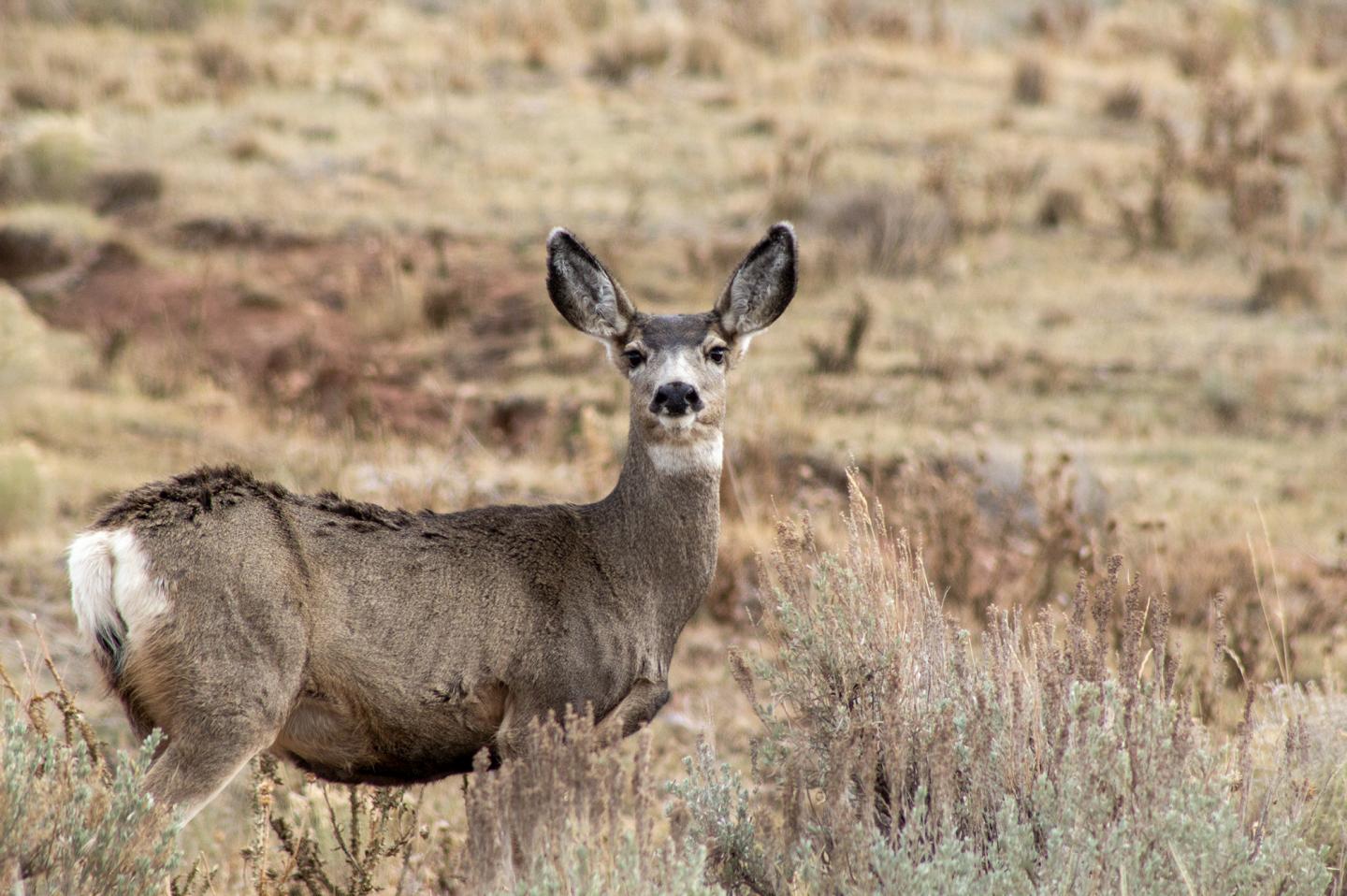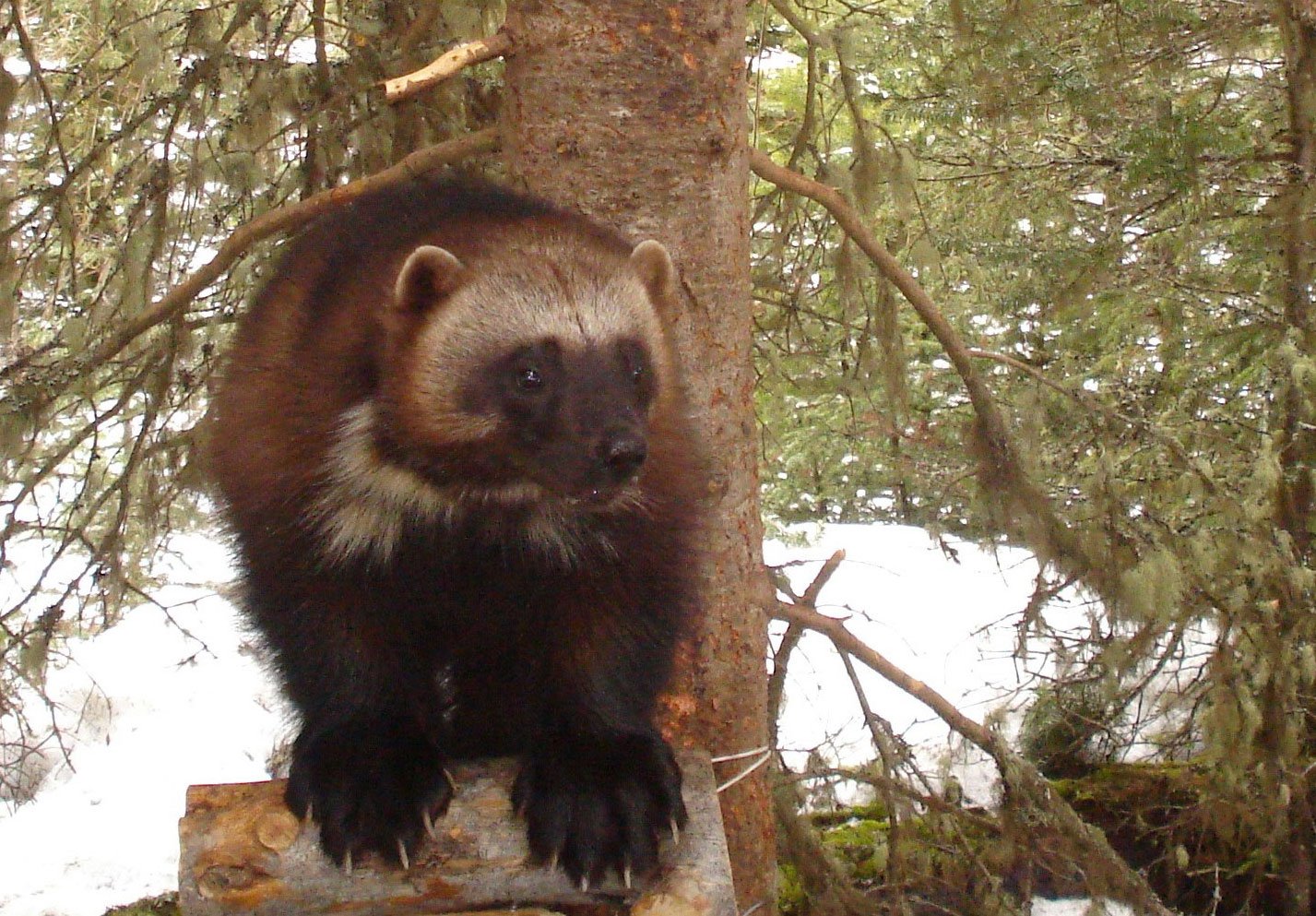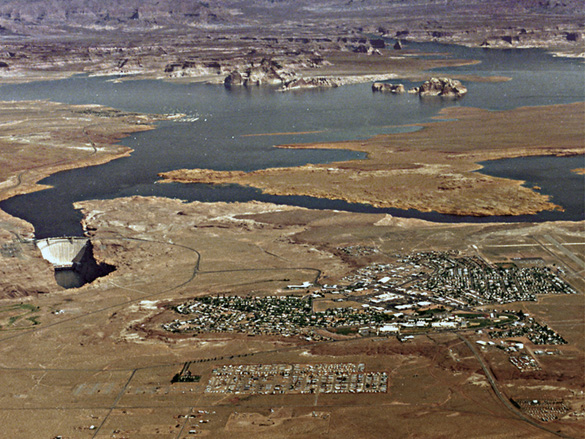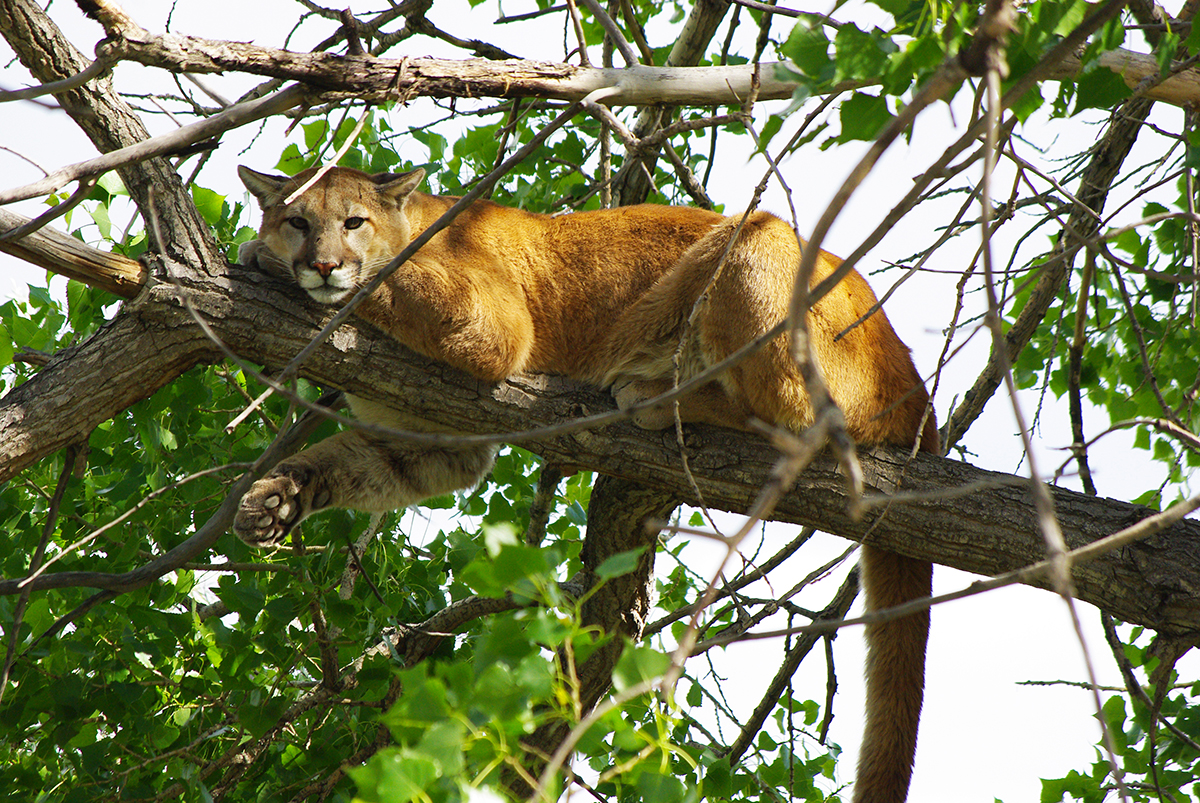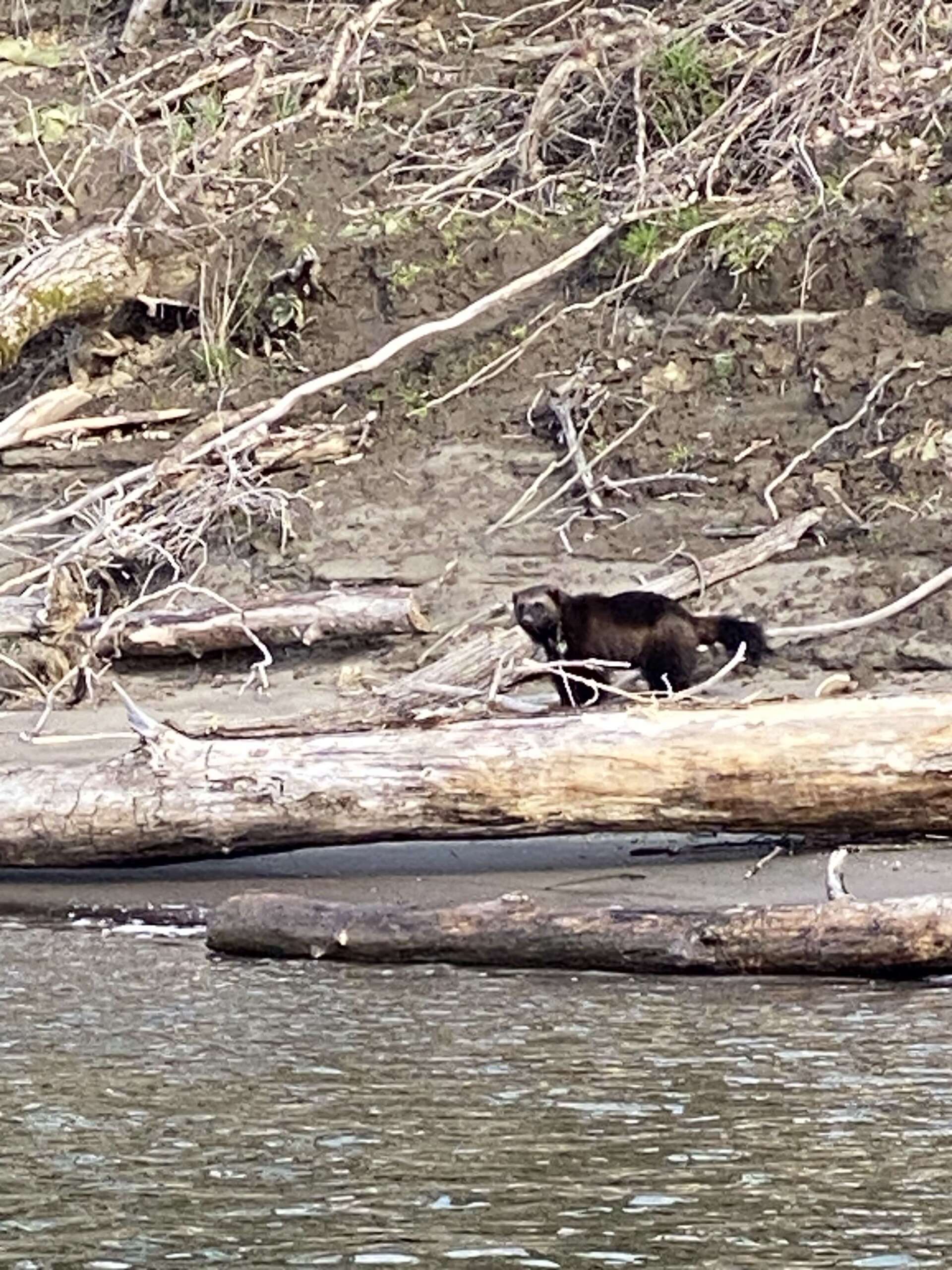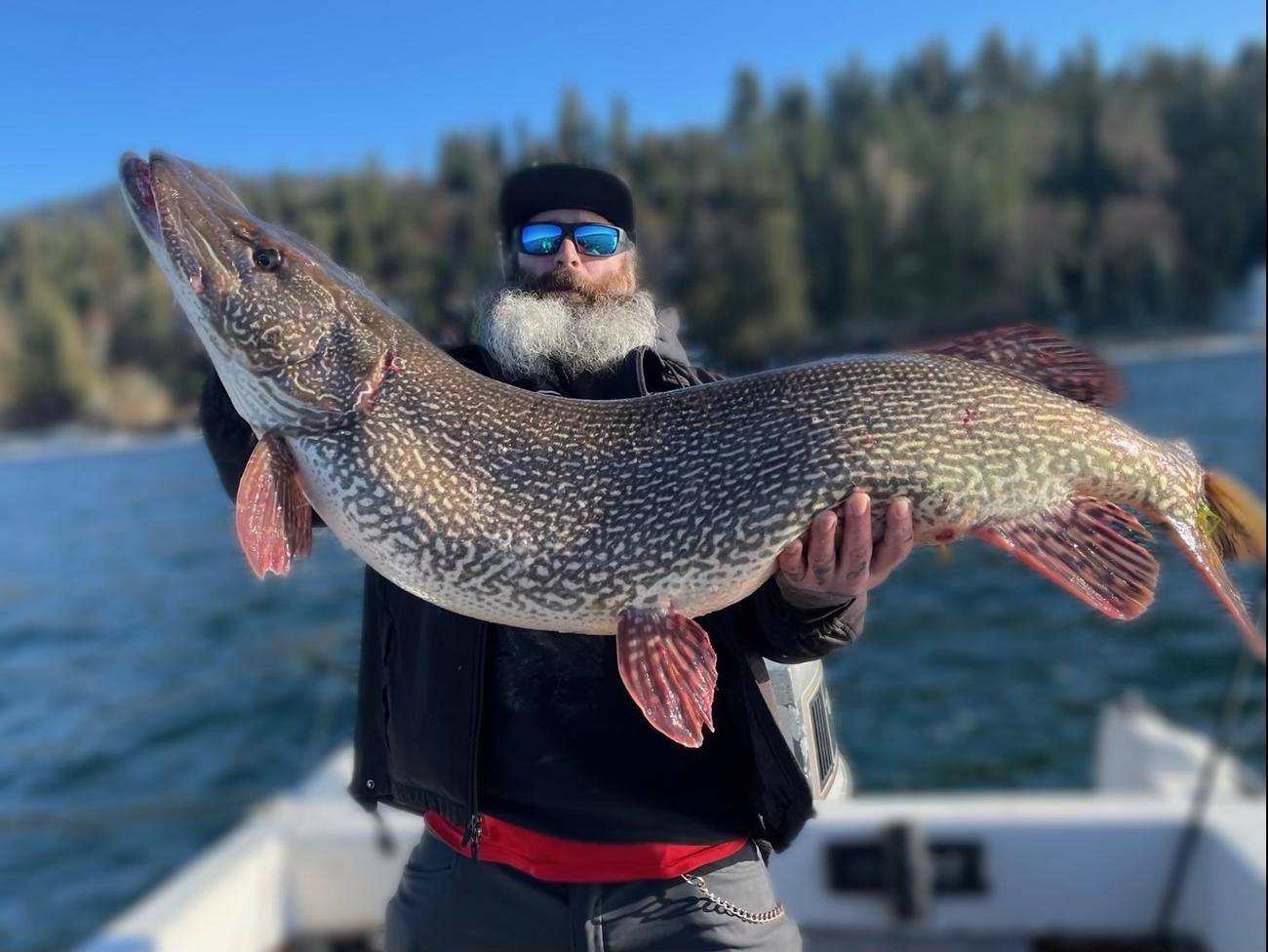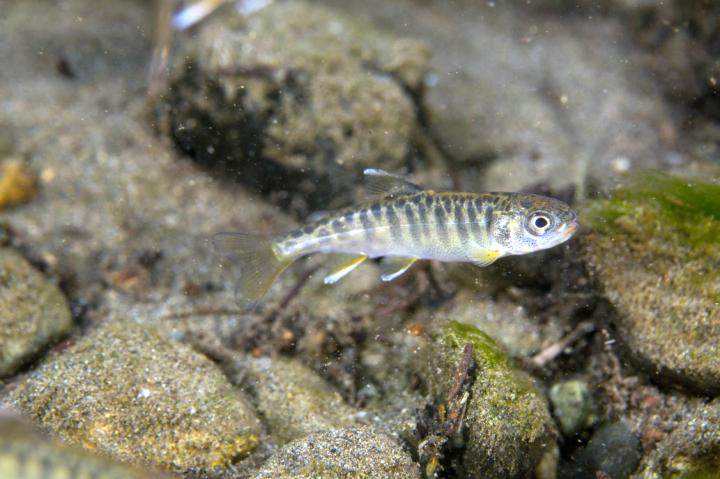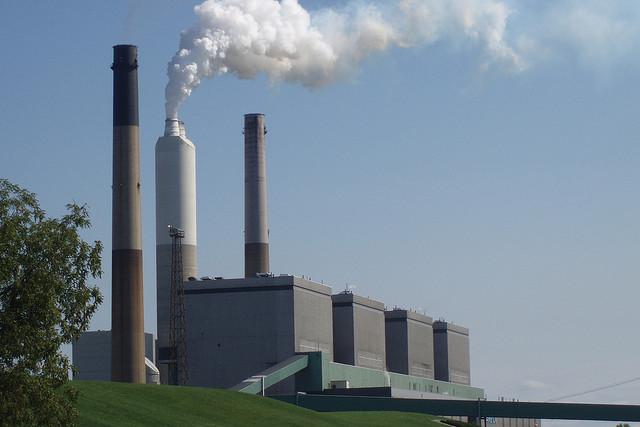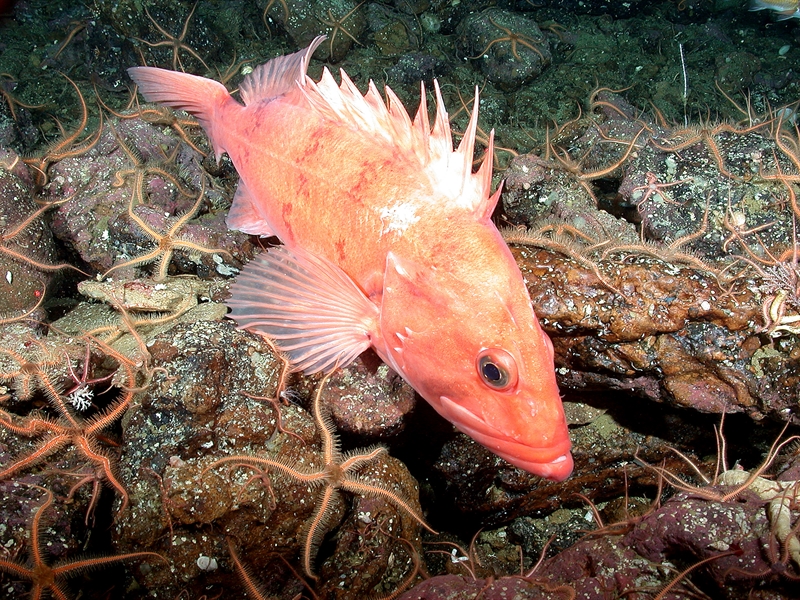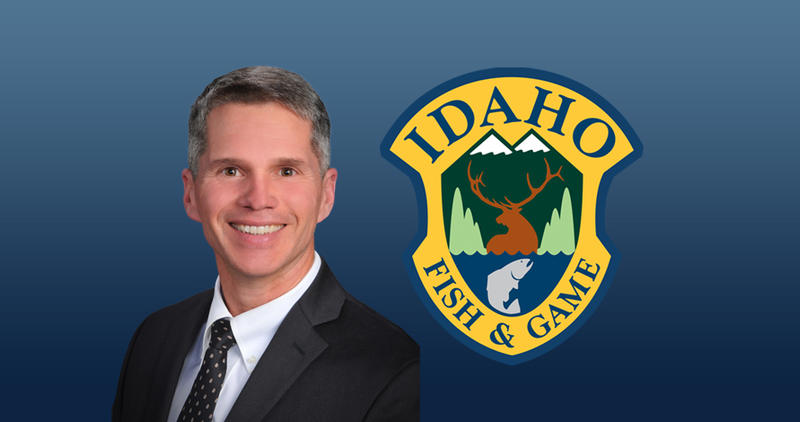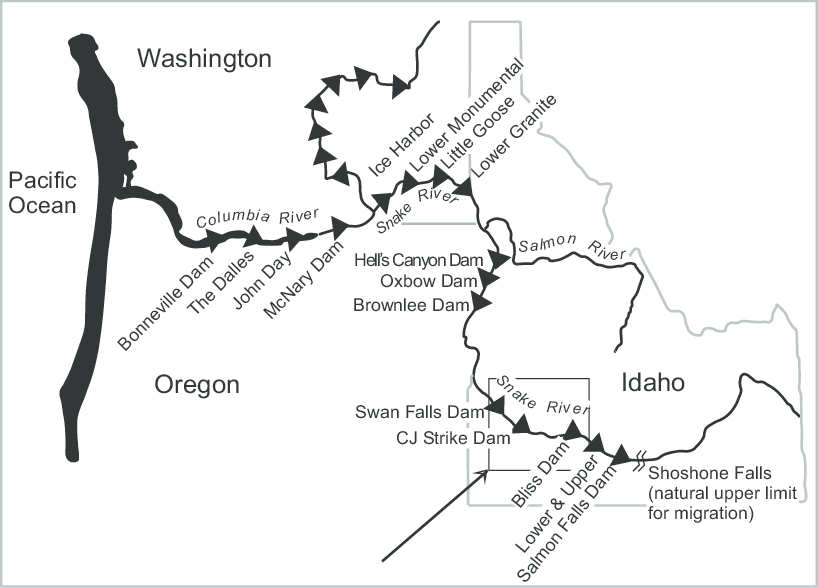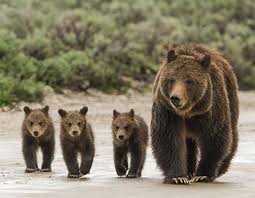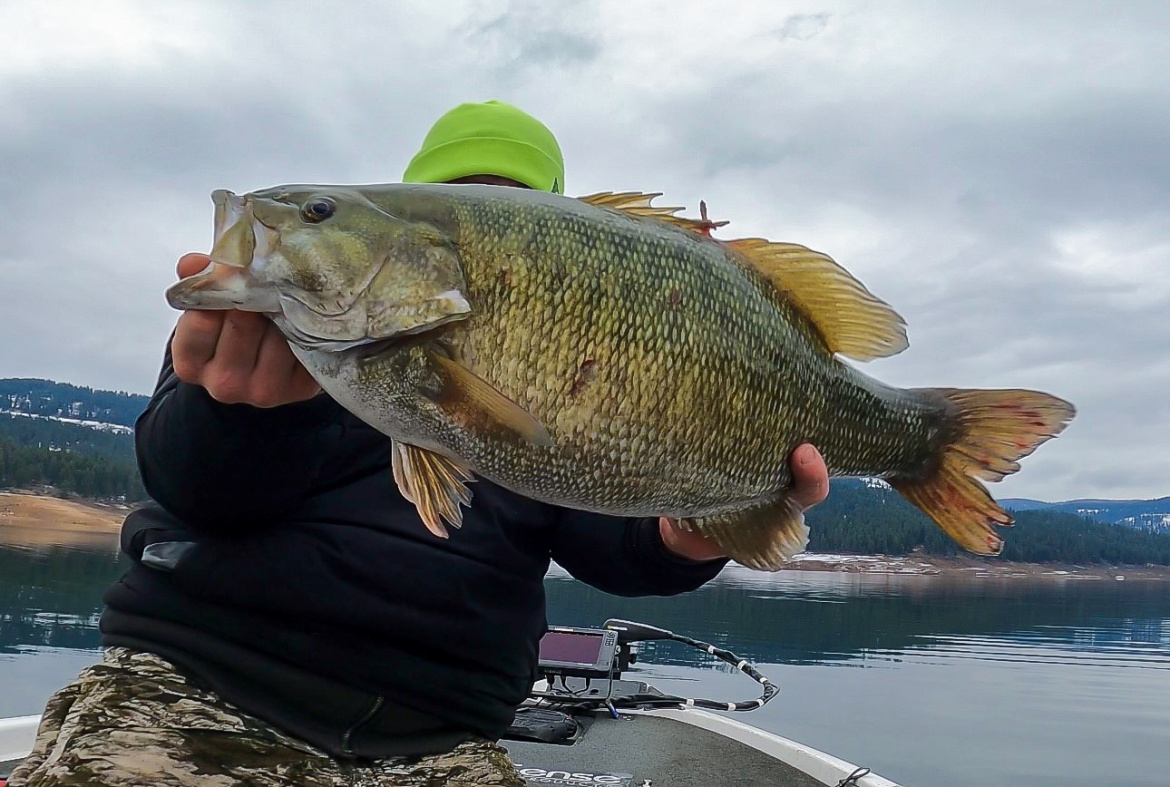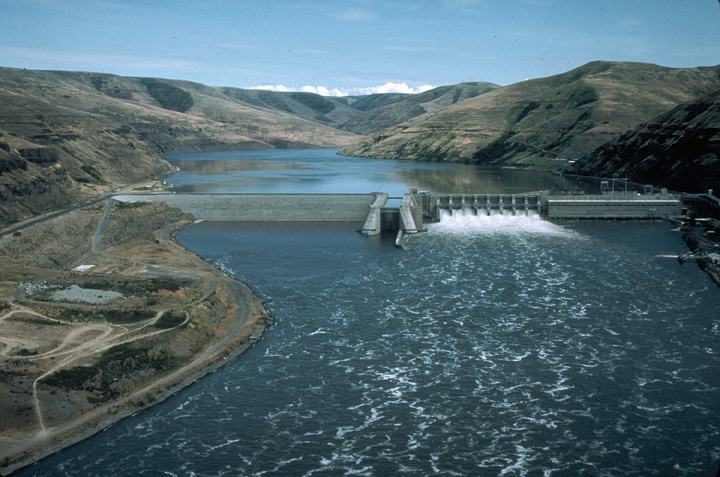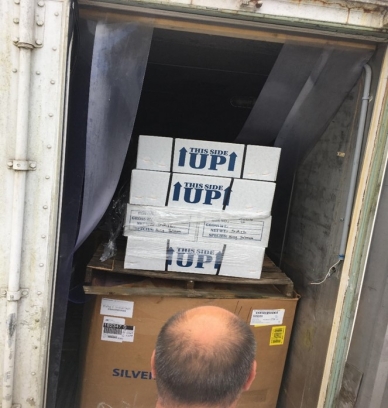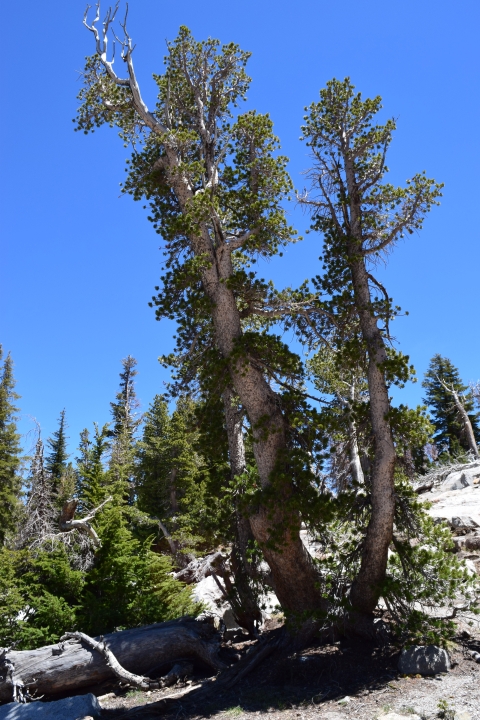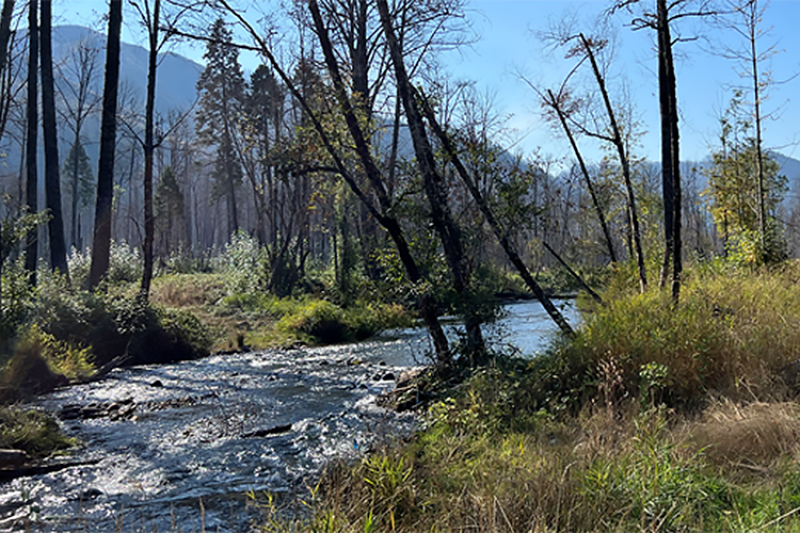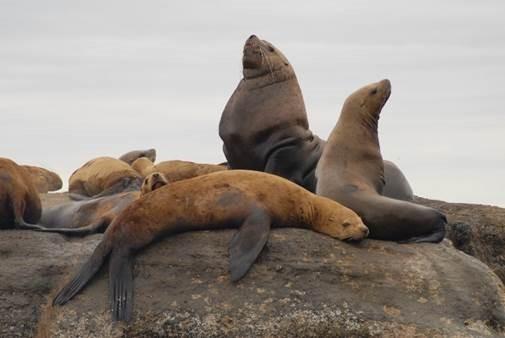NW Power/Conservation Council Hires New Executive Director
June 30th, 2025
The Northwest Power and Conservation Council has hired Peter Cogswell as its new executive director. Cogswell’s first day at the Council will be Monday, July 7th.
NOAA: Gray Whale Population Migrating Along West Coast Continues To Decline, Lowest Since 1970s
June 30th, 2025
The eastern North Pacific population of gray whales that migrates along the West Coast of the United States has continued to decline, with reproduction remaining very low. Two new Technical Memorandums from NOAA Fisheries’ Southwest Fisheries Science Center report the estimated population size and calf productivity in 2025.
For First Time In World, Lab-Grown Salmon Being Served At (Portland) Restaurant
June 30th, 2025
Cultivated salmon is now being served at Kann, a Haitian restaurant in Portland, Oregon, led by the culinary talents of James Beard award-winning Chef Gregory Gourdet. This milestone marks the very first for cultivated seafood anywhere in the world, signaling meaningful progress in bringing cultivated meat and seafood from pilot facilities into real-world kitchens.
With U.S. Butterfly Populations Plummeting, Scientists In New Report Lay Out A Roadmap For Recovery
June 30th, 2025
A new report, co-authored by Washington State University conservation biologist Cheryl Schultz, provides a roadmap for recovering butterfly populations across the U.S.
Late Push Of Spring Chinook Over Bonneville Dam Allows Fishing On Oregon’s Lookingglass Creek
June 30th, 2025
Lookingglass Creek, a tributary to northeast Oregon’s Grande Ronde River at Palmer Junction, opened for spring Chinook fishing from Wednesday, June 18 through Sunday, June 29. The open area is from the mouth upstream to the confluence of Jarboe Creek.
Studying Ancient Groundwater In Southwest, Northwest Reveals Regional Vulnerabilities To Climate Change
June 30th, 2025
During the last ice age, storms soaked the now-arid Southwestern U.S., while today’s rainy Pacific Northwest remained relatively dry. As global temperatures rose and ice sheets retreated, those storms shifted north—reshaping the climate patterns that define both regions today.
UW-Led Study Shows Increasing Wildfires In Canada, Siberia Will Slow Global Warming 12 Percent Globally, 38 Percent In Arctic
June 14th, 2025
A new University of Washington–led study projects that in the next 35 years increasing boreal fires will actually slow global warming by 12% globally and 38% in the Arctic. Because the aerosols in smoke reflect more sunlight and make clouds brighter, summer temperatures during fire season drop, leading to reduced sea ice loss and cooler winter temperatures.
Portland State Researchers Study Delayed Tree Mortality After Large, Severe Wildfires, Live Trees Continue To Die
June 14th, 2025
Across the western U.S., wildfires are becoming larger and more severe — and even trees that initially survive are dying in subsequent years, making it harder for forests to regenerate, according to new research from Portland State University.
California Launches ‘Strike Team’ To Combat Livestock Depredations By Gray Wolves, GPS Wolf Location Map For Ranchers, Public
June 14th, 2025
The California Department of Fish and Wildlife announced that it is launching a summer strike team in partnership with federal and local agencies to combat livestock depredations by gray wolves in Siskiyou County and the Sierra Valley (spanning both Sierra and Plumas counties).
Archery Angler Sets New Idaho Record By Striking Massive Grass Carp On Snake River
June 14th, 2025
Riley Farden of New Plymouth was bow fishing for carp on the Snake River when he shot an arrow that not only hit its mark, it set a new state record for grass carp.
Lead-Based Ammunition Poisoning Eagles In Northwest Montana
June 14th, 2025
Montana Wild Wings Recovery Center in Kalispell has treated six bald eagles and one golden eagle with elevated lead levels in 2025.
OSU Study Suggests Outdoor Recreation Should Be Treated As Behavioral Medicine, Essential Public Health
June 14th, 2025
New research strongly suggests policymakers should view outdoor recreation spaces not as luxuries but as essential public health infrastructure.
Tribes, Conservation Groups, Industry React To Trump’s Termination Of Columbia Basin Salmon Agreement
June 13th, 2025
Reaction was swift over President Trump’s decision to terminate the federal government’s “Resilient Columbia Basin Agreement,” with parties both condemning and celebrating the move.
Research Shows Southeast Alaska Inside Waters May Have Provided Juvenile Salmon Buffer From Marine Heatwaves In Gulf Of Alaska
June 6th, 2025
New research found that the cold, low salinity inshore waters of Icy Strait in Southeast Alaska may have provided a temporary buffer from marine heatwave conditions in the Gulf of Alaska for four species of migrating juvenile salmon.
Trump Budget Proposes Elimination Of Pacific Coastal Salmon Recovery Fund
June 6th, 2025
At a June 4 hearing, U.S. Sen. Patty Murray (D-WA), Vice Chair of the Senate Appropriations Committee, questioned Commerce Secretary Howard Lutnick on the decision to eliminate the Pacific Coastal Salmon Recovery Fund. The proposal is included in President Trump’s fiscal year 2026 budget request for the department.
Boaters Reminded Of Requirement Since 2023 To Stay 1,000 Yards From Southern Resident Killer Whales, 22 Whales In Poor Shape
June 6th, 2025
With summer boating and fishing seasons ramping up, the Washington Department of Fish and Wildlife is reminding boaters of new laws requiring vessels to stay 1,000 yards away from endangered Southern Resident killer whales in Washington waters.
Destructive European Green Crabs Found For First Time In South Central Puget Sound, Threatens Native Shellfish
June 6th, 2025
The Washington Department of Fish and Wildlife has captured invasive European green crabs (EGC) at two new locations between northern Hood Canal and Admiralty Inlet during an early detection trapping effort.
Corps Extends Public Comment Period On SEIS For Willamette River Basin Dams
June 6th, 2025
A public comment period for ending hydropower production at federal dams in the Willamette River basin, and thoughts on deep drawdowns at Detroit Reservoir on the North Fork Santiam River, has been extended from June 6 to June 21.
Study Shows Western Oregonians Support For Marine Reserves Increases Over Time
June 6th, 2025
What do western Oregonians think about the five iconic protected areas, known as marine reserves, that dot the state’s coastline? A new study shows the answer depends on when and where the question was asked.
BPA Approves $700 Million Project To Increase Output Of Region’s Only Operating Nuclear Plant
June 6th, 2025
Energy Northwest and the Bonneville Power Administration say they are taking a significant step toward strengthening the Pacific Northwest’s supply of energy by increasing the output of the region’s only nuclear facility.
Oregon Boat Inspection Stations Open To Protect Waters From Aquatic Invasive Species, Golden Mussels New Threat
June 6th, 2025
The Oregon Department of Fish and Wildlife is ramping up its efforts to protect the state’s lakes, rivers, and streams from aquatic invasive species. Seasonal boat inspection stations are now open, and roving crews will be out this year at boat ramps offering watercraft inspections and decontamination.
OSU Wildlife Researchers Improve AI’s Ability To Better Identify Animal Species In Trail Camera Photos
June 6th, 2025
Oregon State University scientists have improved artificial intelligence’s ability to identify wildlife species in photos taken by motion-activated cameras.
Large-Scale Habitat Restoration Project Launched On Lower East Fork Lewis River To Aid Threatened Salmon, Steelhead
May 23rd, 2025
This spring, the Lower Columbia Estuary Partnership broke ground on a large-scale salmon habitat restoration project on the lower East Fork Lewis River in Washington State. This project will support the recovery of threatened steelhead and salmon on one of the few undammed rivers in the Lower Columbia River watershed.
Murray Says Trump Administration’s Spending Plans For Corps Moving Project Funding From Blue States To Red States
May 23rd, 2025
U.S. Sen. Patty Murray (D-WA) says the Trump Administration’s spending plans for the Army Corps of Engineers would steer hundreds of millions of dollars more in construction funding to red states while cutting hundreds of millions of dollars in construction funding for blue states.
Alaska Expects This Year’s Commercial Salmon Harvest To Be Nearly Double Last Year’s Harvest, Big Boosts To Pinks, Coho
May 23rd, 2025
The Alaska Department of Fish and Game says forecasted 2025 total Alaska commercial salmon harvest will be approximately 214.6 million fish, which is 111 million more salmon than the 2024 harvest.
USDA Terminates Largest Grant In University of Idaho’s History, $59 Million For “Climate-Smart’ Commodities Program
May 23rd, 2025
The largest grant in University of Idaho’s history, intended to provide payment directly to Idaho producers for developing sustainable agricultural practices, was terminated last week as a result of new criteria implemented by the United States Department of Agriculture.
OSU Analysis Suggests Thousands Of Animal Species Threatened By Climate Change, Invertebrates Increasingly Invulnerable
May 23rd, 2025
A novel analysis suggests more than 3,500 animal species are threatened by climate change and also sheds light on huge gaps in fully understanding the risk to the animal kingdom.
IDFG Offering Cash Incentives To Harvest Rainbows, Hybrids From South Fork Snake River, Helps Native Cutthroat
May 23rd, 2025
The South Fork Snake River is one of the last major conservation strongholds for Idaho’s state fish – the cutthroat trout — but they are losing ground and only occupy 34% of their historical range in the lower Snake River drainage. Anglers willing to harvest rainbow trout can help change this trajectory.
BPA Financial Outlook Improves Second Quarter With Higher Than Expected Revenues
May 23rd, 2025
Higher than expected revenues, lower expenses and debt management have resulted in the Bonneville Power Administration forecasting net revenues of $210 million, $70 million above agency targets. The encouraging results improve on the first quarter net revenue forecast of negative $44 million, which was impacted by the dry winter weather.
Administration’s Proposed Budget Would Eliminate ‘The Bee Lab’ That Funds, Conducts Native Bee Research
May 23rd, 2025
President Trump’s proposed budget would end funding of research for America’s bees coordinated by the U.S. Geological Survey Bee Lab. The budget proposal eliminates all $307 million in funding to the Ecosystem Management Area, a division within the USGS that funds biological research, including the Bee Lab.
Study: Glaciers Will Take Centuries To Recover Even If Global Warming Reversed
May 23rd, 2025
New research reveals mountain glaciers across the globe will not recover for centuries – even if human intervention cools the planet back to the 1.5°C limit, having exceeded it.
For First Time, California Releases Millions Of Juvenile Fall Chinook Into Mainstem Sacramento River, Timed With Water Flow Increases
May 14th, 2025
In a significant shift of California’s salmon strategy, the California Department of Fish and Wildlife has begun releasing juvenile fall-run Chinook salmon from CDFW-operated hatcheries into the main stem of the Sacramento River for the first time.
Federal Agencies Extend Comment Period On Columbia/Snake Hydro System Supplemental EIS
May 14th, 2025
The U.S. Army Corps of Engineers and the Bureau of Reclamation are extending the public comment period for the Columbia River System Operations Supplemental Environmental Impact Statement to August 15, 2025.
Trump Administration Budget Proposes Eliminating Marine Mammal Commission, Staff On Oct. 1
May 14th, 2025
The Trump administration’s proposed budget released would cut all funding for the Marine Mammal Commission, a federal agency dedicated to the protection of marine mammals.
OSU Study Details How Many Additional Deaths Attributed To Warming Climate, Wildfire Pollution
May 14th, 2025
Scientists say human-caused climate change led to 15,000 additional deaths from wildfire air pollution in the continental United States during the 15-year period ending in 2020.
Invasive, Destructive Chinese Mitten Crab Found In Columbia River Near Astoria, First Time Found In PNW
May 5th, 2025
A Chinese mitten crab, a prohibited species in Oregon, was caught on April 22 in the Lower Columbia River east of Tongue Point, near Astoria. Chinese mitten crabs have not been confirmed in the Pacific Northwest until now. A single Japanese mitten crab was found in the same area in 1997.
Lawsuit Urging ESA Protection For Central Oregon’s Crater Lake Newt; Introduced Signal Crayfish Causing Population Crash
May 5th, 2025
The Center for Biological Diversity has notified the Trump administration that it intends to sue over what it says is the U.S. Fish and Wildlife Service’s failure to protect the imperiled Crater Lake newt under the Endangered Species Act. The newts live only in central Oregon’s Crater Lake, and their population has collapsed in recent years because of the expansion of introduced signal crayfish and warming lake temperatures from climate change.
ODFW Investigating Cause Of Sick, Dead Brown Pelicans Along Oregon Coast
May 5th, 2025
The Oregon Department of Fish and Wildlife is investigating reports of sick and dead brown pelicans along the Oregon coast.
2025 Columbia/Snake River Pikeminnow Sport Reward Fishery Opens, Last Year’s Top Angler Earned $164,260
May 5th, 2025
The 2025 Northern Pikeminnow Sport-Reward Fishery opened May 1, offering anglers the chance to earn cash while helping protect vulnerable salmon and steelhead in the Columbia and Snake rivers. The fishery will be open daily through Sept. 30 at most locations.
Dead Dolphins Continue Showing Up On California Beaches Due To Ongoing Domoic Acid Event, Not Risk At Population Scale
May 5th, 2025
The stranding team from NOAA Fisheries’ Southwest Fisheries Science Center recovered 16 dead dolphins from San Diego beaches on Sunday, April 20.
Lawsuit Seeks Public Records On Impacts To NOAA’s Marine, Fisheries Work Due To Staff Reductions
May 5th, 2025
The Center for Biological Diversity has sued the Trump administration for what it says is a failure to release public records about ocean conservation work “interrupted by firings and layoffs” at the National Oceanic and Atmospheric Administration.
Trump Executive Order Aims To Reduce Regulations On Commercial Fishing, Processing With America First Seafood Strategy
May 5th, 2025
An April 17 Executive Order President Donald Trump calls for suspending or revising regulations on the U.S. seafood industry, saying that regulations “overly burden” America’s commercial fishing and fish processing industries, as well as the nation’s aquaculture industry.
Extensive Survey Of Oregon’s Forests Shows Drought, Pests, Diseases Biggest Threats To State’s Trees
May 5th, 2025
Based on an extensive aerial survey of Oregon’s forests completed last year by the Oregon Department of Forestry and the USDA Forest Service, a new report shows that drought, insect pests, and tree diseases continue to be the biggest threats to the state’s trees.
Oregon Wolf Population Rises 15 Percent in 2024 But Ongoing Illegal Killings A Threat To Pack Stability
April 21st, 2025
Oregon’s wolf population grew by 15% in 2024, marking the first year of double-digit growth since 2019, according to a report released by the Oregon Department of Fish and Wildlife.
In addition, twenty-six wolf mortalities were documented during the year, including 22 that were human caused.
PFMC Tentatively Sets 2025-2026 Salmon Fishing Seasons For Oregon, Washington; Need NMFS Approval
April 21st, 2025
Anglers in Washington can expect similar salmon fishing opportunities in 2025-2026 compared to last season, that also includes a strong Puget Sound pink forecast, Washington Department of Fish and Wildlife fishery managers announced this week.
California Salmon Still In Trouble: PFMC Offers Limited Rec Fishing First Time Since 2022, Repeat Closure Of Commercial Fishing
April 21st, 2025
The Pacific Fishery Management Council this week recommended limited fishing opportunities for California’s recreational ocean salmon fisheries through the end of 2025. This decision will allow for the first recreational salmon fishing in California since 2022. The PFMC also recommended a repeat year of closure for California’s commercial salmon fisheries, the third year in a row.
American Rivers Lists Clearwater River Basin As Nation’s Seventh Most Endangered River
April 21st, 2025
American Rivers this week announced America’s Most Endangered Rivers in its 40th annual listing, with Idaho’s Clearwater River Basin ranked the seventh most endangered.
Commerce Secretary Names New Administrator To Lead NOAA Fisheries
April 21st, 2025
Secretary of Commerce Howard Lutnick has named Eugenio Piñeiro Soler as Assistant Administrator for NOAA Fisheries. Piñeiro Soler has assumed his new position, taking the helm from Acting Assistant Administrator Emily Menashes, who will return to her previous position as Deputy Assistant Administrator for Operations.
Washington’s Annual Wolf Report For 2024 Shows Increase In Gray Wolf Packs, Decrease In Overall Minimum Count
April 12th, 2025
The number of gray wolf packs in Washington increased slightly in 2024, according to the Washington Gray Wolf Conservation and Management 2024 Annual Report, released by the Washington Department of Fish and Wildlife, while the state’s wolf count declined overall. Based on wolf biology and long-term population trajectory, WDFW wolf biologists do not believe wolf recovery is threatened at this time.
Study Looks At How Double Whammy Of Climate Change (Reduced Habitat), Non-Native Predators Could Imperil Native Salmonids
April 12th, 2025
Climate change could pose a dual threat to native species by reducing their suitable habitats and increasing predation pressure from non-native species, a new study by Oregon State University researchers finds.
With Fishing Slow So Far, Six Days Added For Lower Columbia Spring Chinook Fishing
April 12th, 2025
Fishery managers from Oregon and Washington took joint state action Wednesday (April 9) to add another six days of recreational spring Chinook salmon fishing in the mainstem Columbia River downstream of Bonneville Dam. This fishery had closed on Monday April 7 per the preseason schedule adopted in February.
Forest Service Ordered To Increase Logging In Pacific Northwest National Forests By 25 Percent, Remove NEPA Processes
April 12th, 2025
U.S. Secretary of Agriculture Brooke Rollins issued a Secretarial Memo to establish an “Emergency Situation Determination” on 112,646,000 acres of National Forestry System (NFS) land, including the national forests of the Pacific Northwest.
Sacramento River: Feds Announce Another $134 Million For Second Largest Off-Stream Reservoir In Nation, Now Up To $780 Million
April 12th, 2025
The Bureau of Reclamation today announced a $134 million award for the proposed Sites Reservoir Project. This new water storage project would be the second largest off-stream reservoir in the nation and would increase Northern California’s water storage capacity by up to 15 percent.
Corps Says No Deep Drawdown For Oregon’s Detroit Reservoir This Year, Needs To Analyze Impacts For 2026 EIS
April 12th, 2025
The U.S. Army Corps of Engineers, Portland District says it will not perform a deep drawdown at the Willamette Valley’s Detroit Reservoir in the fall of 2025.
Trump Administration Pauses Columbia River Treaty Negotiations As It Reviews International Engagements
March 31st, 2025
The U.S. has paused negotiations with British Columbia on a modernized Columbia River Treaty that was nearly complete after both the U.S. and Canada reached an Agreement in Principle in 2024.
Northwest Power/Conservation Council Gets Two New Oregon Members
March 31st, 2025
The Northwest Power and Conservation Council has two new Oregon Members. Gov. Tina Kotek appointed Margaret Hoffmann and Chuck Sams, and the Oregon Senate has confirmed their appointments to the Council.
Joseph Y. Oatman Appointed as Manager of Nez Perce Tribe’s Fisheries Department
March 20th, 2025
On March 18, 2025, the Nez Perce Tribe announced the appointment of Joseph Y. Oatman as Manager of the Nez Perce Tribe Department of Fisheries Resources Management (“DFRM”).
Upland Operable Unit Engineering Evaluation and Cost Analysis Report Public Comment Period
March 20th, 2025
Portland District, U.S. Army Corps of Engineers (USACE) invites the public to comment on the Engineering Evaluation/Cost Analysis (EE/CA) Report for the Upland Operable Unit (OU) of Bradford Island in Cascade Locks, Oregon.
ESA-Listed Tucannon Spring Chinook Close To Extinction; ‘Safety Net Offsite Strategy’ A Last Ditch Effort To Save Them
March 15th, 2025
Tribal and Washington fishery managers are doubling down on recovering threatened spring Chinook salmon in the Tucannon River in Eastern Washington by raising juveniles originating from the river at a hatchery 300 miles downstream.
Lawsuit Filed In Effort To Stop Musk’s DOGE From Taking Further Actions Against Multiple Environmental Agencies
March 15th, 2025
Center for Biological Diversity, Federal Aviation Administration, Litigation, National Oceanic and Atmospheric Administration, Public Articles, US Bureau of Land Management, US Bureau of Ocean Energy Management, US Department of Agriculture, US Department of Commerce, US Department of Transportation, US Environmental Protection Agency, US Fish and Wildlife Service, US Forest Service, US National Park Service
The Center for Biological Diversity has sued five cabinet-level agencies seeking to stop the so-called Department of Government Efficiency and its DOGE teams from taking further actions against multiple environmental agencies until each team fully complies with the Federal Advisory Committee Act.
Montana Seeks Public Comment On Proposed Conservation Easement For 53,000 Acres Of Timberland, Habitat For Fish, Wildlife
March 15th, 2025
Montana Fish, Wildlife & Parks is seeking public input on a potential project that would place nearly 53,000 acres of private timberland in northwest Montana under a conservation easement and protect working lands, public recreation access, and wildlife habitat.
Columbia-Snake River Navigation System Closed For Two Weeks For Annual Lock Maintenance
March 15th, 2025
The Columbia-Snake River System, a critical trade corridor supporting $24 billion in commerce annually, will pause operations for two weeks beginning March 9, as the U.S. Army Corps of Engineers, Portland District, conducts its annual navigation lock maintenance.
Oregon Lawmakers Seek Reversal Of Administration Actions On Programs Serving Tribal Communities, Cite Trust, Treaty Obligations
March 15th, 2025
Oregon’s U.S. Sens. Jeff Merkley and Ron Wyden—along with Oregon U.S. Reps. Suzanne Bonamici, Val Hoyle, Andrea Salinas, Maxine Dexter, and Janelle Bynum -- joined over 100 Members of Congress to demand that the Trump Administration stop and reverse its “dangerous efforts to fire employees and defund programs” that serve Tribes and Tribal members.
UW Study Indicates That Before Whales Hunted To Near Extinction Their Excrement May Have Provided Key Fertilizer to Marine Ecosystems
February 25th, 2025
The blue whale is the largest animal on the planet. It consumes enormous quantities of tiny, shrimp-like animals known as krill to support a body of up to 100 feet (30 meters) long. Blue whales and other baleen whales, which filter seawater through their mouths to feed on small marine life, once teemed in Earth’s oceans. Then over the past century they were hunted almost to extinction for their energy-dense blubber.
After The Palisades Fire: California Agencies Rescue The Last Known Population Of Steelhead In Santa Monica Mountains, 271 Fish
February 25th, 2025
As part of statewide efforts to help Californians and wildlife recover from the Southern California fires, the California Department of Fish and Wildlife and its partners last month rescued 271 endangered Southern California steelhead trout from Topanga Creek, the last known population of this species in the Santa Monica Mountains.
Research Shows Raptors Perched On Power Poles More Likely To Be Shot Than Electrocuted, Leading Cause Of Death For Golden Eagles
February 25th, 2025
New research from wildlife biologists shows that poachers play a bigger role in the deaths of eagles, hawks, and other birds of prey in the West than previously thought.
Montana Researchers Show How Increasing Wildfires, Hotter Temperatures Limiting Forest Regeneration, Needs Could Triple By 2050
February 25th, 2025
Two recent University of Montana studies are demystifying how increasing wildfires and hotter annual temperatures limit forest regeneration in the Western U.S., revealing that our capacity to plant trees can’t keep pace with reforestation needs.
Grasshopper Size Changes Offer Clues To Predicting Winners, Losers Under Climate Change
February 25th, 2025
As insect populations decrease worldwide — in what some have called an “insect apocalypse” — biologists seek to understand how the six-legged creatures are responding to a warming world and to predict the long-term winners and losers.
WDFW Seeking Public Input On 2025-2026 State-Managed Salmon Seasons, Forecast Meeting Feb. 28
February 25th, 2025
Fishery managers with the Washington Department of Fish and Wildlife have scheduled opportunities for the public to provide input in 2025-2026 state-managed salmon seasons, beginning with a hybrid statewide forecast meeting on Friday, Feb. 28 in Olympia.
Earthwise Knowledge Initiative Acquires Columbia Basin Bulletin
February 15th, 2025
Earthwise Knowledge Initiative, a 501(c)(3) nonprofit dedicated to advancing public understanding of environmental and sustainability issues, has acquired the Columbia Basin Bulletin (CBB).
‘Killing Salmon To Lose Money’: A Costly, Questionable Plan On Oregon’s Willamette River
January 20th, 2025
The U.S. Army Corps of Engineers said it could make hydroelectric dams on Oregon’s Willamette River safe for endangered salmon by building gigantic mechanical traps and hauling baby fish downstream in tanker trucks. The Corps started pressing forward over objections from fish advocates and power users who said the plan was costly and untested.
USFWS Proposed Rule Rejects Delisting Grizzly Bear, Establishes Single Distinct Population Segment In Idaho, Montana, Washington, and Wyoming
January 19th, 2025
The U.S. Fish and Wildlife Service has denied petitions to remove Endangered Species Act protections from grizzly bears, finding that the imperiled animals still need federal protection.
Boaters In Washington State Waters Must Now Stay 1,000 Yards (Half-Mile) Away From Killer Whales At All Times
January 19th, 2025
As of Jan. 1, 2025, boaters in Washington waters must stay 1,000 yards away from Southern Resident killer whales (SRKW) at all times.
Researchers Spot Killer Whale ‘Tahlequah’ Carrying Her Deceased Calf Near Seattle; Of 73 JPod Whales, 11 Under 5-Years-Old
January 19th, 2025
The new year came with both joy and sadness for endangered Southern Resident killer whales. Researchers first spotted J35, also known as Tahlequah, carrying her deceased calf off Alki Point in West Seattle on December 31. Tahlequah is the same whale that garnered international headlines and concern in 2018 when she carried another deceased newborn calf for 17 days.
Washington State, Agencies Finalize Agreement On Future Radioactive Tank Waste Cleanup At Hanford Site; 56 Million Gallons, 177 Underground Tanks
January 19th, 2025
The U.S. Department of Energy, Washington State Department of Ecology, and U.S. Environmental Protection Agency have finalized an agreement that outlines a course for cleaning up millions of gallons of radioactive and chemical waste from large, underground tanks at the Hanford Site near the Columbia River.
Illegal Wolf Killings, Rewards For Information On The Rise In Oregon, Washington, Colorado
January 10th, 2025
The US Fish and Wildlife Service has announced a $10,000 cash reward for information regarding a wolf poaching incident on private property in eastern Oregon’s Morrow County. The Oregon Wildlife Coalition has a standing reward of $10,000 for wolf poaching in that area, raising the reward total to $20,000.
Decision On Delisting Grizzlies In Northern Rockies Coming; Montana Scientists Discuss Implications Of Living With The Bears
January 10th, 2025
In early 2025, the U.S. Fish and Wildlife Service will decide whether to delist some populations of grizzly bears in the U.S. Northern Rockies. As Montanans consider their future with grizzly bears, University of Montana scientists are helping inform the social, ecological and policy aspects of the dialogue.
Study Says Reduced Irrigation For Livestock Feed Needed To Save Great Salt Lake
January 10th, 2025
The Great Salt Lake has lost more than 15 billion cubic yards of water over the past three decades, is getting shallower at the rate of 4 inches a year, and an analysis of its water budget suggests reducing irrigation is necessary for saving it.
NOAA Fisheries Accepting Project Applications From States, Tribes For Up To $99 Million Through Pacific Coastal Salmon Recovery Fund
December 22nd, 2024
The Department of Commerce and NOAA Fisheries has announced up to $99 million in funding through the Pacific Coastal Salmon Recovery Fund for conservation and recovery projects focusing on Pacific salmon and steelhead. The funding — which includes $34.4 million from the Infrastructure Law — is aimed at advancing state and tribal efforts to restore salmon populations and habitats.
BPA Planning Budget For Next Year For Columbia Basin Fish/Wildlife Projects Set At $302 Million, An Increase Over Last Two Years
December 9th, 2024
The Bonneville Power Administration plans to spend next year $41 million more in fish and wildlife projects in the Columbia River basin than it actually spent in 2023, and five million more than what was budgeted for 2024, for which actual spending is not yet available.
Northwest Power/Conservation Council Executive Director Plans To Leave In Spring
December 9th, 2024
Just the third executive director of the Northwest Power and Conservation Council in 45 years is about to leave. After nearly five years in the position, Executive Director Bill Edmonds is planning to step down in spring 2025.
Feedback: CBB Article On 2024 Juvenile Survival Rate Inaccurate
December 9th, 2024
Comment Re: CBB article of November 26, 2024, entitled “2024 Survival Rate Of Migrating Juvenile Salmon In Columbia/Snake Rivers? Hard To Say With Yet Another Year Of Low Detection, Tagging Rates.”
Carbon Budget: CO2 Emissions Grow In 2023, Continue To Increase 2024, No Sign Burning Fossil Fuels Has Peaked
November 25th, 2024
Emissions of carbon caused by fossil fuel pollution continued to grow slightly in 2023 to 36.8 billion metric tons of carbon dioxide, setting yet another new record despite increasingly urgent warnings from scientists about the need for steep and immediate decreases.
Center For Biological Diversity Report Says Water Reservoirs Significant Source Of Climate Warming Emissions
November 25th, 2024
Reservoirs, a major component of California’s water storage system, are a significant source of climate-warming emissions, releasing more greenhouse gases across the state than 300,000 gas-powered cars in a year, says a report by the Center for Biological Diversity.
Groundbreaking Research: First Time Cloned Endangered Species (Black-Footed Ferret) Produces Offspring
November 18th, 2024
The U.S. Fish and Wildlife Service and conservation partners have announced a groundbreaking achievement in endangered species research: the first-ever birth of black-footed ferrets produced by a cloned endangered animal.
Count Of Mother-Calf Gray Whale Pairs Off West Coast One Of Lowest On Record Due To Reduced Food Availability In Arctic
November 18th, 2024
The number of gray whale calves migrating with their mothers along the California Coast this year was one of the lowest on record.
States Set 2025 Columbia River Sturgeon Retention Seasons; Expect High Effort, Short Seasons
November 18th, 2024
Oregon and Washington fishery managers set dates and harvest guidelines for recreational white sturgeon retention in pools backed up behind Bonneville, The Dalles and John Day dams.
Oregon Issues For Comment Draft Priority List Of 605 Most Critical Manmade Barriers To Fish Passage, Climate Change Used For Rankings
November 18th, 2024
The Oregon Department of Fish and Wildlife has developed an update to the Statewide Fish Passage Barrier Priority List, which is revised every five years.
Interior Announces $46 Million For Klamath Basin Restoration, Plans $162 Million Over Five Years For Water Reliability, Salmon Post Dam Removal
November 1st, 2024
The U.S. Department of the Interior and U.S. Fish and Wildlife Service this week announced nearly $46 million in investments from President Biden’s Infrastructure Law for ecosystem restoration activities that “address high-priority Klamath Basin water-related challenges in southern Oregon and northern California.”
Cougar On Busy Oregon Coast Dock Presented Challenges For ODFW
November 1st, 2024
On Oct. 17 the Oregon Department of Fish and Wildlife was alerted by Oregon State Police that a young adult male cougar was on a dock at the Embarcadero Resort in Newport. ODFW staff immediately responded and assessed the scene with local law enforcement.
Petition Filed Seeking ESA Protections For Washington State’s Cascade Red Fox
November 1st, 2024
The Center for Biological Diversity has filed a petition urging the U.S. Fish and Wildlife Service to protect the Cascade red fox under the Endangered Species Act. The Washington state foxes are threatened by climate change, small population size and a host of other threats.
Highly Pathogenic Avian Influenza Detected In Pig In U.S. For First Time In Oregon’s Crook County; Five Pigs, 70 Birds Euthanized
November 1st, 2024
The National Veterinary Services Laboratories has confirmed Highly Pathogenic Avian Influenza (HPAI) in 1 of 5 pigs living on a small farm in central Oregon’s Crook County.
Mixed-Source Reintroductions: Montana Research Shows How Genetic Diversity Affect Health, Viability Of Fish Reintroductions
October 18th, 2024
New research from University of Montana underscores the critical role of genetic variation in the conservation of threatened fish species.
Oregon’s Crater Lake Newt May Qualify For ESA Protection, Introduced Crayfish Decimating Populations
October 18th, 2024
In response to a legal petition from the Center for Biological Diversity, the U.S. Fish and Wildlife Service announced this week that the Crater Lake newt (also known as the Mazama newt) may qualify for protection under the Endangered Species Act.
More Land Added To NE Oregon’s Minam River Wildlife Area, Habitat For ESA-Listed Snake River Salmon, Steelhead
October 18th, 2024
The Oregon Department of Fish and Wildlife and the Rocky Mountain Elk Foundation added an additional 1,073 acres to the Minam River Wildlife Area in northeast Oregon, expanding the protected acreage to 16,646. This collaborative effort, finalized last month, builds upon significant land acquisitions from 2021 and 2023.
Biden Administration Designates Third Largest National Marine Sanctuary Off California’s Central Coast, 4500 Square Miles
October 18th, 2024
The Biden Administration has announced that NOAA is designating 4,543 square miles of coastal and offshore waters along 116 miles of California’s central coast as America’s 17th national marine sanctuary.
Northwest Power/Conservation Council Issues Draft Annual Report To Congress On Council Progress With Fish, Power
October 18th, 2024
A draft report to Congress briefly outlines progress the Northwest Power and Conservation Council made in fiscal year 2023 on its Power Plan and Columbia River Basin Fish and Wildlife Program. The draft report was approved to go out for public comment until Dec. 10 by the Council last week at its meeting in Portland.
ODFW Says Uncertified Moss Balls Have Been Shipped To Oregon, Raising Concerns About Zebra Mussel Infestation
October 8th, 2024
Worried about invasive, destructive zebra mussels coming into the state, the Oregon Department of Fish and Wildlife is asking aquarium and pet store shoppers in North Bend and Stayton areas who may have purchased marimo moss ball products in the last six months to contact the agency.
BIA Announces $10 Million To Upgrade Tribal In-Lieu, Treaty Fishing Access Sites Along Columbia River
October 8th, 2024
The Office of the Assistant Secretary for Indian Affairs last week announced a nearly $10 million investment to provide critical rehabilitation at Tribal fishing sites along the Columbia River.
Washington Issues Climate Response Strategy To Deal With Snowpack Loss, Rising Sea Levels, Heat, Flooding, Drought, Wildfires, Ocean Conditions
October 8th, 2024
Dwindling snowpack, rising sea levels and dangerous heat events are among climate change challenges Washington state agencies are planning for under the guidance of a new “climate response” strategy.
Study Measures Impacts Of Harbor Seal Predation On Migrating Steelhead Smolts In Marine Waters
October 8th, 2024
Harbor seals consume as many as a third of young steelhead smolts migrating out of the Nisqually River’s delta in southern Puget Sound, new research shows.
WDFW To Use Drones To Survey Seals, Sea Lions To Help Estimate Consumption Of Salmon, Steelhead At Certain Locations
October 8th, 2024
The Washington Department of Fish and Wildlife has finalized a drone use plan that authorizes staff to conduct pinniped research and management surveys in the state’s coastal and inland waters. Department staff and researchers will use drones to survey for seals and sea lions in the Department’s Southwest, Coastal, and North Puget Sound regions.
Scientists Upgrade Genetic Research Tool Allowing Researchers To Identify The River An Individual Salmon Comes From
October 8th, 2024
NOAA scientists have upgraded a crucial genetic reference tool for Chinook salmon conservation that allows researchers to pinpoint the river system individual fish come from, enabling more precise management and protection of threatened and endangered populations.
WDFW Releases New Long-Term Management Plan For Invasive European Green Crabs, More Than One Million Removed Since 2022
October 8th, 2024
The Washington Department of Fish and Wildlife has published a new long-term management plan for invasive European green crabs (EGC). This harmful shore crab species is a threat to native shellfish, estuary habitats, eelgrass, Washington’s aquaculture industry, and other tribal, cultural, and environmental values.
EPA, Conservation Group Reach Agreement To Ensure Cyanide Levels In Washington Waters Not Harming Whales, Fish
October 8th, 2024
The Center for Biological Diversity has reached an agreement with the U.S. Environmental Protection Agency that puts the agency on the path to protecting imperiled fish and southern resident killer whales from toxic cyanide in Washington state’s waters.
Corps Holds Information Sessions To Explain Willamette Dams’ Drawdowns To Aid Salmon, Steelhead
October 8th, 2024
Deep drawdowns at Green Peter and Lookout Point reservoirs to improve juvenile Chinook salmon and steelhead fish passage on the Willamette River will be explained at virtual public information sessions sponsored by the U.S. Army Corp of Engineers.
What Do Two Populations Of North Pacific Killer Whales Eat? Research Shows Differences Between Southern Residents (Puget Sound), Alaska Residents
September 26th, 2024
Scientists studied two populations of fish-eating killer whales — the Southern Residents and the southern Alaska residents – to find out if these two populations different things and how their diets change throughout the year.
USFWS Status Review Says Bull Trout Should Remain Listed As Threatened Under ESA
September 26th, 2024
The U.S. Fish and Wildlife Service has completed the 5-year status review and a Species Status Assessment for bull trout in the lower 48 states, recommending no change to the current threatened listing status of the bull trout under the Endangered Species Act.
WDFW Officers Respond To Call Of River Otter Attacking Child, Mother
September 26th, 2024
Washington Department of Fish and Wildlife officers earlier this month received a report of a human-river otter incident that occurred at the Bremerton Marina in Kitsap County.
Climate Report Shows Greenhouse Gas, Global Temps, Ocean Heat, Sea Levels All Reached Record Highs In 2023
August 31st, 2024
Greenhouse gas concentrations, the global temperature across land and oceans, global sea level and ocean heat content all reached record highs in 2023, according to an international State of the Climate report led by NOAA scientists.
Why Have Colorado River Basin Streamflows Been Lower Than Predicted Based On Snowpack? UW Research Says Lack Of Spring Rainfall
August 31st, 2024
The Colorado River and its tributaries provide water for hydropower, irrigation and drinking water in seven U.S. states and Mexico. Much of this water comes from the snowpack that builds up over the winter and then melts each spring. Every year in early April, water managers use the snowpack to predict how much water will be available for the upcoming year.
How To Keep Wind Turbines From Killing Thousands Of Birds Each Year? OSU Research Looks At Painting One Blade Black
August 31st, 2024
Oregon State University researchers are part of a team looking at reducing bird collision risks with wind turbines by painting a single blade of the turbine black.
Petition Filed Seeking ESA Protections For Alvord Chub, Freshwater Fish In Oregon, Nevada Desert
August 31st, 2024
The Center for Biological Diversity this week petitioned the U.S. Fish and Wildlife Service to protect the highly imperiled Alvord chub under the Endangered Species Act.
USGS Research Shows Links Between Wildfires And Increased Mercury In Pacific Northwest Headwater Streams
August 18th, 2024
New research from the U.S. Geological Survey links wildfires to increased mercury concentrations in Pacific Northwest headwater streams.
First Case Of Chronic Wasting Disease In Deer In North Idaho Confirmed, IDFG Planning Disease Sampling
August 18th, 2024
Idaho Fish and Game recently received test results confirming a positive case of chronic wasting disease in an adult female white-tailed deer roughly 3 miles outside of Bonners Ferry in hunting Unit 1. The deer was reported to Fish and Game by a landowner who found the dead deer in early July.
Yakama Tribal Leader Takala Sworn In as Chair Of Columbia River Inter-Tribal Fish Commission For 2024-2025
August 18th, 2024
Yakama tribal leader Jeremy Takala was sworn in as the 2024-2025 Chair of the Columbia River Inter-Tribal Fish Commission at its July meeting, being hosted by the Warm Springs Tribe in Madras, Oregon. This is the second time Takala has served as the CRITFC Chair, previously occupying this position in 2020-2021.
Bureau Of Reclamation Announces Funding For Klamath Basin Salmon Restoration Projects
August 9th, 2024
The Bureau of Reclamation last week announced four projects totaling more than $1 million to be awarded as part of two Klamath Basin Salmon Restoration grant programs.
Nice Uptick In Return Of Unmarked Summer Steelhead Allows Deschutes River Fishing, Other Rivers On Track
August 9th, 2024
The popular Lower Deschutes River in central Oregon will remain open for steelhead fishing under permanent regulations.
Klamath River Dam Removal: Salmon Scientists Design Monitoring Program To Track Fish Returns, When And Where They Go
August 9th, 2024
The removal of four dams on the Klamath River will reopen more habitat to Pacific salmon than all previous dam removals in the West combined. Now it will have a monitoring program to match—designed by salmon scientists to track when and how many fish of different species return and where they go.
Researchers Enhance Database That Help Wildfire Managers Predict When, Where Wildfires May Occur
July 26th, 2024
A newly enhanced database is expected to help wildfire managers and scientists better predict where and when wildfires may occur by incorporating hundreds of additional factors that impact the ignition and spread of fire.
Study Documents How Rising Temperatures May Impact Groundwater; Water Too Warm For Drinking, Spawning Salmon
July 17th, 2024
As the world’s largest unfrozen freshwater resource, groundwater is crucial for life on Earth. Researchers at Germany’s Karlsruhe Institute of Technology (KIT) have investigated how global warming is affecting groundwater temperatures and what that means for humanity and the environment.
White-Nose Bat Syndrome Killing Entire Colonies; Montana Researchers Get $3 Million Award To Study Disease, Climate Change Impacts
July 17th, 2024
Since 2006, a fast-moving disease known as white-nose syndrome has killed an estimated 6.7 million bats, wiping out entire colonies and decimating creatures that provide an integral means of pest control.
USFWS Lists Mount Rainier Ptarmigan As Threatened Due To Climate Change, Lives In High Country Cascades From Mount Adams To Canada
July 4th, 2024
A bird that spends its entire life near mountaintops in the Pacific Northwest is likely to become in danger of extinction as a result of climate change, the U.S Fish & Wildlife Service has announced.
Turning The Tide At Willapa Bay: From Fastest Eroding West Coast Beach To One Of ‘Best Restored Beaches’
July 4th, 2024
The 1.1 mile long North Cove beach is located along the north entrance to Willapa Bay in Pacific County and was once the fastest eroding ocean beach on the U.S. West Coast.
Ninth Circuit Stops Old-Growth Clearcutting In Oregon Forest To Protect ESA-Listed Marbled Murrelets
July 4th, 2024
The 9th Circuit Court of Appeals last week affirmed a lower court ruling that prevents Scott Timber from clearcutting old growth trees within Oregon’s Elliott State Forest. The decision will protect marbled murrelets, which are a threatened species under the Endangered Species Act.
Public Finds It Easy To Connect Wildfires, Intense Heat To Climate Change, Not So Much With Other Extreme Weather Events
June 21st, 2024
Oregon State University researchers found that U.S. adults are fairly confident in linking wildfires and heat to climate change, but less confident when it comes to other extreme weather events like hurricanes, flooding or tornadoes.
New West Coast Offshore Wind Science Consortium: ‘Essential Offshore Wind Energy Developed In Environmentally, Socially Responsible Ways’
June 21st, 2024
A new West Coast collaboration for offshore wind science was announced last month. The Pacific Offshore Wind Consortium is a joint effort between three research centers: the Schatz Energy Research Center at Cal Poly Humboldt, the Pacific Marine Energy Center at Oregon State University, and the Center for Coastal Marine Sciences at Cal Poly San Luis Obispo.
Idaho Fish And Game Confirms First Grizzly Bear Sighting West Of I-15 In Upper Snake Region
June 7th, 2024
Trail camera footage provided to Idaho Fish and Game staff confirms for the first time the presence of a grizzly bear west of Interstate 15 (in Game Management Unit 59).
NE Oregon Sees Outbreak Of Poisoning Cases That Includes Wolves, Cows, Eagles, Dogs, Cougar, Coyote
May 17th, 2024
Oregon investigators found a cow carcass laced with poison in a creek in the Imnaha River drainage. The target was likely a wolf, the latest poisoning in a disturbing trend that has killed 19 wolves in Oregon since 2015. Whatever the target, the collateral damage in northeast Oregon’s ongoing poisoning cases now includes golden eagles, dogs, and other carnivores.
Commission Selects Colbert As New ODFW Director, First Woman To Lead The Agency
May 17th, 2024
The Oregon Fish and Wildlife Commission last week voted unanimously to select Debbie Colbert as the new ODFW Director.
About One Million Chinook Salmon Fry Lost After Mechanical Failure At Puget Sound Hatchery
May 3rd, 2024
Approximately 1 million young Chinook salmon have died at the Washington Department of Fish and Wildlife’s Samish Hatchery near Burlington after a mechanical failure at 1 a.m. on Monday morning, April 29.
Vandal Pours Bleach Into Oregon Hatchery Fish Tank, Poisoning Thousands Of Juvenile Salmon
May 3rd, 2024
Nearly 18,000 young salmon died after a vandal poured bleach into a southern Oregon Coast fish hatchery tank last week, according to law enforcement authorities.
FISH WAR: Northwest Treaty Tribes Documentary Premieres At Seattle International Film Festival
May 3rd, 2024
FISH WAR, a documentary film produced by Northwest Treaty Tribes Media and North Forty Productions, will have its world premiere at the Seattle International Film Festival at 5 p.m. Saturday, May 11, with an additional matinee screening at 1 p.m. Sunday, May 12.
From British Columbia: April Update On Negotiations Towards A Modernized Columbia River Treaty
May 3rd, 2024
2023 was a year of accelerated activity in the ongoing process of modernizing the Columbia River Treaty.
PFMC Recommends Closure For California’s Ocean Salmon Fisheries; For Oregon, Washington Fishing Opportunities Likely Similar To Last Year
April 18th, 2024
The Pacific Fishery Management Council acted unanimously to recommend closure of California’s commercial and recreational ocean salmon fisheries through the end of the year, mirroring recommendations made last year to close the fisheries in 2023.
ESA Protections Sought For Two Freshwater Snails Once Widespread In Columbia River Basin; Now Scattered, Isolated Populations
April 18th, 2024
The Center for Biological Diversity this week filed a petition with the U.S. Fish and Wildlife Service seeking Endangered Species Act protections for the ashy pebblesnail and shortface lanx.
Interior Funds Solar Panels Over Irrigation Canals In California, Oregon, Utah; Decrease Evaporation While Producing Renewable Energy
April 18th, 2024
The Department of the Interior announced a $19 million investment to install solar panels over irrigation canals in California, Oregon and Utah, simultaneously decreasing evaporation of critical water supplies and advancing clean energy goals.
Groups Sue USFWS Over Denial Of Petition To Protect Gray Wolves In Northern Rocky Mountains
April 18th, 2024
Four conservation and animal protection groups have sued the U.S. Fish and Wildlife Service for denying their petition to protect gray wolves in the northern Rocky Mountains under the Endangered Species Act.
Fish Tanker Truck Accident Results In Loss Of Spring Chinook Smolts For Imnaha River Release
April 5th, 2024
On March 29 near Lookingglass Hatchery in northeast Oregon, a fish tanker truck was involved in an accident while transporting approximately 102,000 spring Chinook smolts for release in the Imnaha River.
WSU Study Shows How PNW Honey Bees At Risk For Colony Collapse As Climate Warms, Hive Boxes May Need Cold Storage
April 5th, 2024
The famous work ethic of honey bees might spell disaster for these busy crop pollinators as the climate warms, new research indicates.
Unintended Consequences: Montana Study Shows How Too Much Fire Suppression Leads To Wildfires With Greater Severity
April 5th, 2024
The escalation of extreme wildfires globally has prompted a critical examination of wildfire management strategies. A new study from the University of Montana reveals how fire suppression ensures that wildfires will burn under extreme conditions at high severity, exacerbating the impacts of climate change and fuel accumulation.
The Future For Imperiled Canada Lynx In U.S.: Might Do Well If Expanded To Utah, Central Idaho, Yellowstone
April 5th, 2024
New research indicates that lynx might do well in the future in parts of Utah, central Idaho and the Yellowstone National Park region, even considering climate change and the lack of lynx in those areas now.
NOAA Climate Report Says Winter 2023-24 Was Record-Warm Winter For U.S., Third Warmest February
March 22nd, 2024
A very mild February wrapped up a record-warm winter for the U.S., according to experts from NOAA’s National Centers for Environmental Information.
WDFW Release For Public Comment Northern Pike Rapid Response Plan, Fish Expected To Expand Throughout State
March 22nd, 2024
The Washington Department of Fish and Wildlife has released a draft Interagency Northern Pike Rapid Response Plan that guides coordination and resources to prevent the spread of northern pike to new areas in Washington and develop long-term management plans for the voracious predator. The draft plan is undergoing a State Environmental Policy Act review. As part of that process, WDFW is asking members of the public for input.
Montana Detects Season’s First Mussel-Fouled Watercraft At Anaconda Inspection Station, Boat Was Headed To Ephrata, WA
March 22nd, 2024
Montana’s first mussel-fouled watercraft of the year was intercepted at the Anaconda watercraft inspection station on March 10.
Novel Parasite Detected In Sick Rainbow Trout At Three Oregon Fish Hatcheries, Warming Waters Favor Pathogens
March 22nd, 2024
Oregon Department of Fish and Wildlife’s fish health lab has detected a novel parasite in sick rainbow trout that were raised at Klamath Falls, Rock Creek and Elk River hatcheries. The detection marks the first time this parasite has been associated with disease symptoms in Oregon’s fish.
Study Says Cooler, Wetter Pacific Northwest Forests -The Westside – To See Biggest Increases In Fires As Climate Warms
March 7th, 2024
Forests in the coolest, wettest parts of the western Pacific Northwest are likely to see the biggest increases in burn probability, fire size and number of blazes as the climate continues to get warmer and drier, according to new modeling led by an Oregon State University scientist.
Researchers Document First-Ever Hoary Bat Flying Over Open Ocean In Area Slated For Wind Power Off Northern California Coast
March 7th, 2024
On a research cruise focused on marine mammals and seabirds, Oregon State University scientists earned an unexpected bonus: The first-ever documented sighting of a hoary bat flying over the open ocean.
Northwest, Southwest Fisheries Science Centers Get $27 Million For New Science, Research To Advance Pacific Salmon Recovery
February 2nd, 2024
The Department of Commerce and NOAA has announced plans for $27 million to recover threatened and endangered Pacific salmon in the face of climate change.
Griz In The Bitterroots? USFWS Initiates Scoping Period To Evaluate Restoration Of Grizzly Bears In Montana-Idaho Bitterroot Ecosystem
February 2nd, 2024
The U.S. Fish and Wildlife Service announced a public scoping period to consider options for restoring grizzly bears to the Bitterroot ecosystem.
Salmon Becoming ‘Thiamine Deficient’; Researchers Find Hope In Thiamine Compounds Found In Salmon Spawning Rivers
January 18th, 2024
Oregon State University researchers have discovered vitamin B1 produced by microbes in rivers, findings that may offer hope for vitamin-deficient salmon populations.
For First Time, Crews At Ashland Watercraft Inspection Site Find Invasive Quagga Mussels; Pontoon Boat From Lake Mead
January 18th, 2024
Oregon Department of Fish and Wildlife staff at the Ashland Boat Inspection Station found quagga mussels on a pontoon boat that was being transported from Lake Mead, Nev., into Oregon on Jan. 4.
New USGS Report Shows 75 Percent Of U.S. Could Experience Damaging Earthquake Shaking In Coming Years
January 18th, 2024
Nearly 75 percent of the U.S. could experience damaging earthquake shaking, according to a recent U.S. Geological Survey-led team of over scientists and engineers.
ODFW Director Melcher Retiring In April, Recruitment Process Underway
January 18th, 2024
Curt Melcher, the Oregon Department of Fish and Wildlife’s Director since 2014, has announced he is retiring effective April 1, 2024.
Oregon Commission Says Revised Wolf Plan Not Needed; Staff To Focus On Wolf-Livestock Conflict, High Illegal Take Rate
January 5th, 2024
The Oregon Fish and Wildlife Commission, at a workshop last month, determined that revision of the Wolf Plan was not needed at this time, while directing staff to focus on addressing key challenges including wolf-livestock conflict, reducing illegal take, and population monitoring.
$86 Million Announced For British Columbia Salmon Restoration Projects, Part Of Canada’s Pacific Salmon Restoration Strategy
January 5th, 2024
Last month, the Canadian Minister of Fisheries, Oceans, and the Canadian Coast Guard, Diane Lebouthillier, and the British Columbia Minister of Water, Land and Resource Stewardship, Nathan Cullen, announced $86,119,340 for 58 projects receiving funding under the second phase of the British Columbia Salmon Restoration and Innovation Fund (BCSRIF).
D.C. Subcommittee Hearing: NW GOP Lawmakers Complain About Confidential (Leaked) Draft Salmon Settlement Talks
December 13th, 2023
Biden administration officials bound by court-ordered confidentiality declined to participate in a congressional oversight hearing Tuesday focused on a leaked draft settlement of the long-running salmon and dams litigation in the Columbia River basin.
Hard-Working Angler Nets $107,800 For Pulling Northern Pikeminnow Out Of Columbia River Under Reward Program
December 13th, 2023
The final winner in the Northern Pikeminnow Sport Reward Fishery Program this year received a whopping $107,800 for their efforts to catch the aggressive predator of juvenile salmon and steelhead. Even the second-place angler received nearly $100,000 in winnings with a total catch of 9,786 pikeminnow.
NOAA Fisheries Finds ESA-Listing For Washington Coast Chinook May Be Warranted; Status Review Initiated
December 13th, 2023
In response to a petition by the Center for Biological Diversity and Pacific Rivers, the National Marine Fisheries Service has made an initial finding that Endangered Species Act protections may be warranted for Washington coast Chinook salmon. The agency will initiate a status review for Washington coast spring-run and fall-run salmon populations.
NOAA Opens Application Process For $106 Million In Funding For Projects Under Pacific Coastal Salmon Recovery Fund
December 13th, 2023
NOAA this month announced the availability of up to $106 million in funding through the Pacific Coastal Salmon Recovery Fund for Pacific salmon and steelhead recovery and conservation projects. This funding — which includes funding from the Infrastructure Law — will support state and tribal salmon restoration projects and activities to protect, conserve and restore these fish populations and their habitats.
USFWS Seeking Comment On Draft Recovery Plan For ESA-Listed Canada Lynx, Includes Upper Columbia Basin
December 13th, 2023
The U.S. Fish and Wildlife Service is seeking public input on a draft recovery plan for the lower 48 distinct population segment of Canada lynx, informed by an updated species status assessment.
BPA Says Fourth Quarter Boosted 2023 Revenues Beyond Forecasts, Intends To “Accelerate Fish And Wildlife Mitigation’
November 30th, 2023
The Bonneville Power Administration says it ended fiscal year 2023 on solid financial footing, exceeding expectations of previous quarterly forecasts that indicated the agency would miss net revenues and expense targets. The agency’s annual report describes how the agency bounced back in the fourth quarter, offsetting cost pressures primarily from the 13th driest year on record.
Recreational Angler In Washington Gets 50 Days In Jail For Snagging Salmon
November 30th, 2023
A Pacific County judge has sentenced a recreational fisherman to 50 days in jail, fined him $1,500, and imposed a five-year fishing license suspension for repeat salmon snagging violations, the Washington Department of Fish and Wildlife announced.
Guest Column: Northwest Tribes Demand Action For Salmon And Orca Restoration
November 30th, 2023
More than 15 Northwest Tribal Nations gathered in early November to share stories about salmon, orca, water, and the land — and to demand the federal government uphold Tribal treaty obligations to recover and restore salmon in the Snake River and Columbia River Basin.
Dolphin Calves End Up With More Toxins Than Nursing Mothers; Raises Concerns About Southern Resident Killer Whales (Dolphins)
November 16th, 2023
When bottlenose dolphins nurse their young, they transfer toxic pollutants such as polychlorinated biphenyls (PCBs) and DDT to their calves through their milk. New research shows that the calves end up with higher concentrations of the toxins than their mothers.
Administration Announces New Funding For Columbia River Basin Mitchell Act Hatcheries
November 3rd, 2023
The Biden Administration says $60 million will be available for NOAA Fisheries to invest in upgrades identified as tribal priorities for Columbia River Basin hatchery facilities that produce Pacific salmon through the Mitchell Act.
Corps Seeks Public Comment For Willamette Valley Hydropower Report To Congress: Is Hydro Necessary?
November 3rd, 2023
The Portland District of the U.S. Army Corps of Engineers will gather the public’s perspective and opinions on the future of hydropower across the Corps’ Willamette Valley system of dams during three listening sessions – one in-person and two virtual.
Idaho Fly Fisherman Lands 41-Inch Clearwater River Steelhead, New Catch-Release State Record
November 3rd, 2023
In the early morning of October 6th, Kyriacos Panayiotou of McCall waded into the cool waters of the Clearwater River, Idaho’s legendary steelhead mecca. Using a two-handed spey rod, he began searching the water, hoping a steelhead would grab the fly.
El Nino In Place For Winter First Time In Four Years, Drier Than Average Across Northern Tier
October 26th, 2023
This year, El Nino is in place heading into winter for the first time in four years, driving the outlook for warmer-than-average temperatures for the northern tier of the continental United States, according to NOAA’s U.S. Winter Outlook released this week by the Climate Prediction Center — a division of the National Weather Service.
Conservation Groups Say Very Low Return Of Wild Spring Chinook To Southern Oregon Coastal River Shows Need For ESA Listing
October 26th, 2023
The Oregon Department of Fish and Wildlife’s recent count of spring-run Chinook salmon returning to the South Umpqua River showed just 17 wild adult fish detected during snorkel surveys. This dismal return is 12% of the 10-year average of 139 fish returning to the river and “signals an urgent need for federal Endangered Species Act protections,” says the Center for Biological Diversity.
Milestone: NOAA Says Snohomish Coho 50th Fish Stock Rebuilt Under Magnuson-Stevens Act
October 26th, 2023
NOAA Fisheries says the agency and its fishery management partners reached a major milestone this summer – the rebuilding of a 50th fish stock. The Snohomish coho salmon stock was declared overfished in 2018 and has now rebuilt to its sustainable level.
Colossal Coho Caught In Clearwater River, 11.78 Pounds A New State Record
October 26th, 2023
Matt Hosking of Lewiston, Idaho caught a colossal coho in the Clearwater River in on October 13th, setting a new state record for coho salmon.
Despite Dry Conditions, High Market Prices, BPA Makes 2023 Treasury Payment Of $1.02 Billion
October 12th, 2023
On Oct. 3, the Bonneville Power Administration made its annual payment to the U.S. Department of the Treasury for the 40th consecutive year on time and in full, bringing cumulative payments to approximately $34.6 billion over this period. The total payment for fiscal year 2023 was $1.02 billion.
How to Slow Global Warming? Researchers Focus On Removing Carbon Dioxide, Dial Down Non-CO2 Emissions; Halting Deforestation
October 12th, 2023
With the 2023 United Nations Climate Change Conference just a few weeks away, countries will soon take stock of their progress in the worldwide effort to slow and adapt to global warming. Better known as COP28, the conference offers the chance for countries to meet and coordinate their climate-mitigating pledges, like achieving carbon neutrality by 2050 or peak emissions by 2030.
National Science Foundation Grants $220 Million To UW, OSU, Others To Continue Ocean Observatories Initiative; Measure Climate Change Impacts
September 28th, 2023
The U.S. National Science Foundation has awarded a coalition of academic and oceanographic research organizations including Oregon State University a five-year, $220 million cooperative agreement to continue operating and maintaining the Ocean Observatories Initiative.
GUEST COLUMN: A Rebuttal To Dam Breaching, We Can Have Fish And Dams
September 28th, 2023
This is what we believe is wrong with the dam breaching concept. There were far more fish that returned in the first 15 years of the 21st century than ever did in the 20th century, fully 25 years after construction of the last dam on the lower Snake River. That is the case for both steelhead and spring and summer chinook.
ODFW Distributing Salmon Carcasses In Willamette Valley Rivers For Stream Nutrient Enhancement, Keep Dogs Away
September 15th, 2023
If you live or recreate close to a river or stream in the Willamette Valley, you might come across salmon carcasses or see Oregon Department Fish and Wildlife staff and volunteers slinging carcasses into the water during September and October.
Avian Influenza Found For First Time In West Coast Marine Mammals; Three Puget Sound Adult Harbor Seals Stricken, Stranded
September 15th, 2023
The U.S. Department of Agriculture’s National Veterinary Services Laboratories has confirmed that three adult harbor seals in Puget Sound have tested positive for the Highly Pathogenic Avian Influenza H5N1 strain. The seals stranded on Marrowstone Island on August 18 and 25. This confirms initial testing by the Washington Animal Disease Diagnostic Laboratory, which indicated the presence of H5N1 in these seals. No seal pups have tested positive.
NOAA Announces $24 Million To Research Ways To Remove Carbon Dioxide From Ocean
September 15th, 2023
The Department of Commerce and NOAA announced $24 million for projects that will address climate change by researching marine carbon dioxide removal strategies, with $14 million going toward 10 projects that examine how effectively and safely strategies like enhancing ocean alkalinity or sinking seaweed remove carbon from the atmosphere.
Study Of Eastern Oregon Forest Shows How Thinning Enhances Older Trees, Restores Ecological Functions
September 7th, 2023
Forest thinning is improving the robustness of older trees and enhancing native biodiversity on federal lands in eastern Oregon, evidence that collaborative efforts to restore forests are working, research by Oregon State University shows.
Disagreement Over Willamette Falls: Grand Ronde Tribes’ Agreement With Oregon Could Launch Litigation
August 23rd, 2023
At the Aug. 4 meeting of the Oregon Department of Fish and Wildlife, not an empty seat could be found. Members of tribes in Oregon, Washington and Idaho filled the 150 chairs set out at the department headquarters in Salem. Dozens more crowded around the edges of the room.
Dry, Cold Expensive Winter Has BPA Showing $382 Million In Negative Revenue At End Of Third Quarter
August 23rd, 2023
The effects of a dry, cold winter and higher-than-expected supplemental power purchase expenses continue to weigh on the Bonneville Power Administration’s finances three-quarters of the way through the fiscal year. Agency net revenue is now forecast to be negative $382 million, which is $56 million below this year’s performance target.
New California Wolf Pack In Sequoia National Forest, 200 Miles From Nearest Pack Farther North, Adult Female Descendant Of OR7
August 23rd, 2023
California has a new gray wolf pack in Tulare County, says the California Department of Fish and Wildlife. This is the Golden State’s southernmost pack and it is at least 200 air miles from the nearest known pack in northeastern California.
Large Marine Heatwave Reaches Northwest Coast, NOAA Tracking Impacts To Marine Life
August 10th, 2023
A large marine heatwave that developed offshore has reached the coast of Oregon and Washington. It increases the potential for harmful algal blooms and other impacts on the coastal ecosystem and marine life in the coming weeks and months.
WDFW Seeks Comment On Status Review For Northern Spotted Owl; Likelihood Of Extinction Has Increased
August 10th, 2023
The Washington Department of Fish and Wildlife is seeking public input on a draft periodic status review for northern spotted owl that includes a recommendation to keep the owl on the state’s endangered species list. The public comment period is open from Aug. 1 through Oct. 29.
Mining For EVs: Paper Details Potential Harm To Native Communities Without Updated Regulations, More Consultation
August 10th, 2023
Conditions are ripe for an accelerated transition to electric vehicle use in the United States. The Biden-Harris administration has set a target that 50 percent of newly purchased cars in 2030 be electric. In addition, the Inflation Reduction Act of 2022 provides significant tax incentives for purchasing electric vehicles and for companies that produce them.
OSU Study Shows That Spending $9 Billion For Columbia Basin Salmon Recovery In 50 Years Nets No Increase In Wild Salmon, Steelhead
August 2nd, 2023
Four decades of conservation spending totaling more than $9 billion in inflation-adjusted tax dollars has failed to improve stocks of wild salmon and steelhead in the Columbia River Basin, according to Oregon State University research.
Just Enough Unmarked Summer Steelhead Have Passed Bonneville Dam To Keep Steelhead Fishing Open On The Deschutes For Now
July 27th, 2023
The popular Lower Deschutes River will remain open by permanent rule for steelhead fishing through at least Sept. 14 after meeting a key threshold in its fish management framework.
Montana Lawmakers Get Lowdown On Flathead Lake Levels; Dire Scenario, No Relief In Sight
July 27th, 2023
Last year, the Flathead Watershed and its five tributaries were so choked with snowmelt and spring moisture that Flathead Lake overfilled naturally for the first time since 1964, when historic floods devastated local communities and reset the record books. This year, dam operators responsible for controlling the outflow of Flathead Lake began refilling the basin a full six weeks early, desperately trying to capture the region’s scant mountain runoff as forecasts showed lake levels dropping to historic lows.
Northeast Oregon Study Indicates Hatchery Fish Can Successfully Contribute To Salmon Reintroduction Efforts, Increase Naturally Reproducing Populations
July 27th, 2023
In the Columbia River Basin, where dramatic and extensive alterations to habitat for fish and wildlife have occurred, the Columbia Basin Partnership Taskforce estimated that 35% of historical populations of anadromous salmon and steelhead have been extirpated.
USFWS Finalizes ESA Rule To Allow Reintroduction Of Listed Species Outside Historical Ranges When Habitat Become Unsuitable
July 13th, 2023
The Department of the Interior has announced significant action to better facilitate species recovery by providing more flexibility for the introduction of threatened and endangered species to suitable habitats outside their historical ranges.
Scary Numbers: Oregon Gray Whale Poop-Prey Research Shows Extent Microplastics Polluting Our Waters, Marine Life (Fish)
June 29th, 2023
Oregon State University researchers estimate that gray whales feeding off the Oregon Coast consume up to 21 million microparticles per day, a finding informed in part by poop from the whales.
Biden Administration Proposes New Rules To Strengthen ESA; Says Economic Impacts Not To Be Considered With Listing Decisions
June 21st, 2023
The U.S. Fish and Wildlife Service and NOAA Fisheries are proposing regulations the agencies say will restore protections for species, strengthen consultation and listing processes, and “reaffirm the central role science plays” in decisions that guide the protection and recovery of endangered and threatened wildlife.
New Agreements Give Canada’s Indigenous Nations Revenue Sharing From Benefits Of Columbia River Treaty
June 16th, 2023
The Ktunaxa, Secwépemc and Syilx Okanagan Nations and their members will benefit from new interim agreements that share revenue generated from the Columbia River Treaty.
Under Legal Agreement, USFWS To Reconsider Whether To List West Coast Fisher, Rare Forest Carnivore, Under ESA
June 16th, 2023
In a settlement agreement, the U.S. Fish and Wildlife Service has agreed to reconsider whether West Coast fishers in northern California and southern Oregon warrant protection under the Endangered Species Act.
Rapid Growth Of Harmful Algae Along Southern CA Coast Killing Sea Lions, Dolphins; ‘Never Seen Anything This Intense In Terms Of Number Of Animals’
June 16th, 2023
The rapid growth of harmful algae along parts of the Southern California Coast is believed to have killed hundreds of California sea lions and close to 60 dolphins in the first weeks of June.
Oregon State Police Find Evidence Of Illegal Fish Snagging When Collecting Salmon, Steelhead For Hatcheries; Embedded Hooks, Sliced Fins
June 16th, 2023
Oregon State Police Fish and Wildlife Troopers discovered fish with embedded hooks, sliced fins, circular scabs, and other evidence of illegal tactics, while assisting ODFW hatchery staff during the spring salmon spawning season.
Future Fish Wars: OSU Researcher Receives DOD Grant To Study Links Between Changing Ocean Climate, Fish Movement, Geopolitical Tensions
June 8th, 2023
An Oregon State University researcher has been awarded a three-year, $1.4 million grant from the U.S. Department of Defense to lead a study about the movement of fish stocks due to changing climate conditions and the potential geopolitical tensions that could result from that shift.
Appeals Court Rejects USFWS Authorization To Kill Grizzlies In Response To Livestock Conflict Just Outside Yellowstone
June 8th, 2023
The U.S. 10th Circuit Court of Appeals has ruled that the U.S. Fish and Wildlife Service’s authorization of the killing of up to 72 grizzly bears on public land just outside of Yellowstone National Park violated federal law.
Fisheries Manager Add More Spring Chinook Fishing Days Below Bonneville
May 25th, 2023
Fishery managers from Washington and Oregon added eleven recreational fishing days (Thursday, May 25-Sunday, June 4) to the ongoing spring Chinook fishery downstream of Bonneville Dam during a joint state hearing Wednesday.
New Children’s Book Explores Destruction Of Celilo Falls In 1957 From Child’s Perspective
May 24th, 2023
In 1957 Celilo Falls, a fishery that was pivotal to the lives of many Native Americans along the Columbia River, was lost when it was flooded and destroyed by the construction of The Dalles Dam.
Columbia River Treaty Negotiators Meet In Kelowna; Discuss Salmon Reintroduction, Flood-Risk Management
May 24th, 2023
Negotiating teams for Canada and the United States met in Kelowna, British Columbia for the 17th round of negotiations toward a modernized Columbia River Treaty.
Lower Kootenay Band To Release Over One Million Burbot Into Restored Wetland In B.C.’s Creston Valley
May 18th, 2023
The Yaqan Nukiy Lower Kootenay Band will release more than one million burbot in a restored wetland in the Creston Valley this year.
Columbia Generating Station Nuclear Plant Shutting Down This Spring For Refueling Reactor Core; Provides 13 Percent Of BPA Fuel Mix
May 18th, 2023
The Bonneville Power Administration’s Columbia Generating Station is shutting down this spring, as it does every two years, to replace about a third of the fuel from the nuclear plant’s core.
Researchers Urge Intertwining Indigenous Rights, Endangered Species Laws To Move Beyond Simply Avoiding Risk Of Extinction
May 18th, 2023
Increasing caribou populations in northeastern British Columbia demonstrate that partnerships between Indigenous and colonial governments can reverse prolonged declines, yet the emphasis must now be placed on establishing culturally significant restoration objectives, assert a collective of scholars and community members in a recent publication featured in Science this week.
Nez Perce Tribe Turning To Gill Nets, Drift Nets On Clearwater River During Spring Chinook Season To Achieve Harvest Shares; IDFG ‘Totally On Board’
May 5th, 2023
Feeling crowded out of the prime fishing spots in the Clearwater Basin, the Nez Perce Tribe will experiment with gill nets and drift nets during the spring chinook fishing season.
Harvest Managers Set Columbia Summer/Fall Salmon, Steelhead Seasons With Restrictions To Protect Low Numbers Of Returning Upriver Wild Steelhead
May 5th, 2023
Oregon and Washington fishery managers recently finalized seasons and regulations for 2023 Columbia River summer and fall recreational salmon and steelhead fisheries. The harvest would come amidst the potentially lowest return of upriver summer steelhead to the Columbia since 1938.
Inslee Appoints Purce To NW Power/Conservation Council, Former President Of Evergreen State College
May 4th, 2023
Washington Gov. Jay Inslee has appointed Thomas L. (Les) Purce to serve on the Northwest Power and Conservation Council.
NOAA Offering Up To $20,000 Reward For Information On Boater Who Drove Through Sea Lions On Columbia River
May 4th, 2023
NOAA’s Office of Law Enforcement is offering a reward of up to $20,000 for information that leads to a civil penalty or criminal conviction of the boater observed driving through resting California sea lions in the Columbia River on April 3, 2023, near Hayden Island, Oregon.
Oregon Commission Accepts Petition To Consider Listing Killer Whales Under State ESA; Orcas Forage Off Coast, Columbia River Mouth
April 26th, 2023
The Oregon Fish and Wildlife Commission accepted a petition to list the Southern Resident killer whale Distinct Population Segment as endangered under the Oregon Endangered Species Act.
Enough Coho Returning To Elwha River For Tribe To Hold Ceremonial Subsistence Fishery; Dams Removed 9 Years Ago
April 26th, 2023
The Lower Elwha Klallam Tribe, Olympic National Park, and the Washington Department of Fish and Wildlife announced that the Tribal Ceremonial and Subsistence fishery for coho salmon on the Elwha River will be open for a limited time during fall 2023. Additionally, the Tribe, ONP, and WDFW agreed to extend the closure of other recreational and commercial fisheries in the Elwha River for another year.
COVID Detected For First Time In Free-Ranging California Wildlife; Mule Deer Showed No Outward Signs Of Illness
April 26th, 2023
One hunter-harvested mule deer, a buck from El Dorado County, was confirmed to be infected with SARS-CoV-2. The deer was harvested in 2021 and sampled by the California Department of Fish and Wildlife for chronic wasting disease surveillance. It was negative for CWD and did not show any outward signs of illness.
Monster Bull Trout Caught/Released In Oregon’s Lake Billy Chinook Likely State Record
April 20th, 2023
Earlier this month, Ryan Mejaski and Joe Wilhite were fishing for kokanee on the Deschutes arm of central Oregon’s Lake Billy Chinook without much luck when they decided to move spots. After casting into a group of small kokanee that were jumping to the surface, his secret lure sank to about five feet when he got a big strike that took off screaming.
Another Sighting: Wolverine Filmed Crossing Highway 20 In Oregon Cascades, Tracks Confirmed
April 20th, 2023
Video of a wolverine crossing Hwy 20 east of Santiam Pass on April 6 was confirmed by the Oregon Department of Fish and Wildlife. ODFW Deschutes District staff confirmed tracks near the video location on the day of the sighting.
Bureau’s Draft SEIS Offers Alternatives On How To Deal With Water Shortages At Lake Mead, Glen Canyon; Protect Hydro Operations
April 14th, 2023
To address the continued potential for low run-off conditions and unprecedented water shortages in the Colorado River Basin, the Bureau of Reclamation this week released a draft Supplemental Environmental Impact Statement to potentially revise the current interim operating guidelines for the near-term operation of Glen Canyon and Hoover Dams.
Klamath River Renewal: Work Underway On Nation’s Largest Dam Removal, River Restoration Project
April 14th, 2023
Work has officially begun on removing the four dams that comprise the Lower Klamath Hydropower Project.
Measuring Non-Market Values: Oregon Launching ‘Subjective Well-Being Study’ Quantifying Perceived Benefits Of Marine Reserves
April 14th, 2023
Oregon’s Marine Reserves Program will take part in a groundbreaking new study designed to estimate how Oregonians assign value to the reserves beyond traditional economic impacts.
NOAA Names Jennifer Quan As New Regional Administrator For West Coast Region
April 7th, 2023
Jennifer Quan is the new Regional Administrator for NOAA Fisheries West Coast Region. She will assume her new duties on April 23, 2023.
Avian Influenza Suspected To Be Cause Of Death In California Mountain Lions
April 7th, 2023
The Eurasian strain of highly pathogenic avian influenza (HPAI H5N1) was detected in two mountain lions in Mono County in December 2022 and January 2023, according to wildlife health experts with the California Department of Fish and Wildlife. While additional disease testing is being conducted to rule out the possibility of co-infections, HPAI H5N1 is suspected to be the cause of the death for both mountain lions.
Rare Wolverine Sighting Along Columbia River Near Portland, First Confirmed Outside Wallowas In Over 30 Years
April 7th, 2023
A wolverine was sighted by two people who were fishing on the Columbia River near Portland on the morning of Monday, March 20. Wolverine, rare and listed as threatened in Oregon, are the largest member of the weasel family and resemble a small bear. This is the first confirmed report of a wolverine outside of the Wallowa Mountains in over 30 years.
Massive Pike Caught In North Idaho’s Hayden Lake A New State Record
April 7th, 2023
On March 21, Hayden Lake in North Idaho produced a new certified state record northern pike. The record fish weighed a whopping 40.76 pounds, was 49 inches in length and 26.5 inches in girth – a true monster of a fish.
COVID Detected For First Time In Free-Ranging California Wildlife; Mule Deer Showed No Outward Signs Of Illness
April 5th, 2023
One hunter-harvested mule deer, a buck from El Dorado County, was confirmed to be infected with SARS-CoV-2. The deer was harvested in 2021 and sampled by the California Department of Fish and Wildlife for chronic wasting disease surveillance. It was negative for CWD and did not show any outward signs of illness.
California Fishery Managers Releasing Millions Of Hatchery Chinook Salmon To Take Advantage Of Storm-Induced High Flows; Higher Survival Expected
March 22nd, 2023
Anticipating good conditions for the survival of hatchery-produced Chinook salmon throughout the Sacramento River and tributaries, the California Department of Fish and Wildlife will release both spring and fall-run Chinook during the historic rain and snowfall the state is experiencing. Several releases have already happened, and others are planned over the next few weeks to utilize good in-river habitat conditions for these young salmon.
New UN IPCC Report Details How Limiting Global Warming To 1.5 Degrees C Will Require Deep Decarbonization – Soon
March 22nd, 2023
Limiting global warming to 1.5 degrees Celsius above pre-industrial levels will require severely cutting greenhouse gas emissions in half by 2030. Doing so calls for the immediate, large-scale adoption of renewable energy like solar and wind, electrified transportation, energy-efficient systems, alternative fuels, and carbon capture and storage technologies across all sectors globally.
For First Time NOAA Researchers Able To Document West Coast Marine Heat Waves On Ocean Floor
March 16th, 2023
The 2013-2016 marine heat wave known as “The Blob” warmed a vast expanse of surface waters across the northeastern Pacific, disrupting West Coast marine ecosystems, depressing salmon returns, and damaging commercial fisheries. It also prompted a wave of research on extreme warming of ocean surface waters.
Idaho Taps Former IDFG Director To Serve On Northwest Power/Conservation Council
March 16th, 2023
Idaho Gov. Brad Little has appointed Ed Schriever, retired executive director of Idaho Fish and Game, to a seat on the Northwest Power and Conservation Council, replacing longtime Council member Jim Yost.
NOAA Fisheries Assessment Shows Impacts Of Climate Change On West Coast Marine Species; Salmon, Sturgeon Highly Vulnerable
March 9th, 2023
All but the most resilient marine species off the West Coast are likely to be vulnerable to climate change, according to a new NOAA Fisheries assessment. It will help inform fisheries management and species protections as the climate changes in the coming decades.
Petition Calls On Oregon To List Southern Resident Orcas Under State Endangered Species Act
March 9th, 2023
The Center for Biological Diversity, Defenders of Wildlife, and Whale and Dolphin Conservation have filed a petition to protect Southern Resident orcas under the Oregon Endangered Species Act. As of the most recent census, just 73 Southern Resident orcas remain, divided among three family groups.
Guest Column: The Status of Wild Snake River Salmon and Steelhead; Keeping Things In Perspective
March 9th, 2023
Recent reports (Columbia Basin Bulletin, February 2 and Eric Barker, Lewiston Tribune, February 5) claim that overall upriver returns to the Columbia basin are “on an upward swing.” Such a claim ignores context and perspective.
Idaho Fish And Game Commission Chooses Deputy Director Fredericks To Lead IDFG
February 16th, 2023
The Idaho Fish and Game Commission has extended an offer to Jim Fredericks to serve as the new director of Idaho Fish and Game. Fredericks has been a deputy director for Fish and Game since 2021 and is a former fisheries bureau chief.
Study Details Status Of U.S. Ecosystems: 40% Forests, Wetlands At Risk, 37 Percent Bee Species Face Extinction
February 7th, 2023
A new report on the status of U.S. wildlife conservation reveals that 40% of animals, 34% of plants and 40% of ecosystems nationwide are at risk. The analysis — Biodiversity in Focus: United States Edition — was compiled by NatureServe, a nonprofit organization that assembles conservation data from a national network of scientists and organizations.
Larry Cassidy, Former NW Power/Conservation Council Member, Influential Fish Advocate, Remembered Fondly
February 2nd, 2023
Talk to people who knew Larry Cassidy and the accolades run as thick as the Columbia River’s famed salmon and steelhead runs in the days before hydroelectric dams forever changed the system.
Oregon Study Shows How Songbirds Work Together To Mob Predator Owls
February 2nd, 2023
Fleeing isn’t the only way by which songbirds can protect themselves against predators. Many songbird species are known to engage in mobbing, where they gather aggressively around a bird of prey, flying rapidly while making stereotypic movements and loud vocalizations. Mobbing is risky for both parties: birds of preys have been observed to attack their mobbers, while cases are known of birds of prey getting injured by mobbing songbirds.
American Fisheries Society Governing Board Issues Policy Statement Calling For Breaching Lower Snake River Dams
January 26th, 2023
The American Fisheries Society Governing Board issued a policy statement this month calling for breaching the lower Snake River dams to “safeguard” Snake River basin salmon and steelhead from going extinct.
Your Hike Impacting Wildlife Behavior: WSU Glacier Park Study Shows How Trail Use Has Strong Negative Influence On Animal Movement
January 26th, 2023
Even without hunting rifles, humans appear to have a strong negative influence on the movement of wildlife. A study of Glacier National Park hiking trails during and after a COVID-19 closure adds evidence to the theory that humans can create a “landscape of fear” like other apex predators, changing how species use an area simply with their presence.
Three Montana Grizzly Bears Euthanized After Testing Positive For Avian Influenza
January 20th, 2023
Three Montana juvenile grizzly bears tested positive for highly pathogenic avian influenza (HPAI) virus this fall.
Biden Administration Adds Another $490 Million For Reducing Wildfire Risk Across The West; Aimed At At-Risk Communities
January 20th, 2023
Agriculture Secretary Tom Vilsack this week announced expanded efforts to reduce wildfire risk across the western U.S. aimed at protecting at-risk communities and critical infrastructure across 11 landscapes in Arizona, California, Idaho, Nevada, Oregon, Utah and Washington.
Too Much Good Fishing Leads To Closure of Sturgeon Retention In Bonneville Pool
January 13th, 2023
Fishery managers from Oregon and Washington today closed sturgeon retention in Bonneville Pool as of Jan. 12.
USFWS Selects Morrison As Regional Director For Pacific Region
January 13th, 2023
Hugh Morrison has been selected to serve as Regional Director of the Pacific Region of the U.S. Fish and Wildlife Service. Morrison, who has been the acting regional director since May 2022, will begin effective immediately. In this role, Morrison will administer conservation efforts spanning one ocean, four states and multiple territories and time zones.
Dworshak Reservoir Produces Monster State Catch-Release Record Smallmouth Bass
January 6th, 2023
It was a typical cold, December day in central Idaho with rain down low and snow in the mountains. While many anglers might have been thinking about ice-fishing, winter steelhead, or even putting a fresh coat of wax on their skis and hitting the slopes, Joey Walton had other plans: big Smallmouth bass. Knowing he had to make the long run across the reservoir, he set out early in search of a trophy.
Letter To Editor: Proposal To Drawdown Reservoirs A Fool’s Errand
January 6th, 2023
The recent article in the CBB about NPDES permits for the four lower Snake River dams includes a proposal to draw the reservoirs down to reduce heating of the water. This is a fool’s errand based on widespread misinformation.
Guest Column: B.C. Minister Reflects On Busy Year For Columbia River Treaty Negotiations
December 21st, 2022
On Dec. 7, I was sworn in as B.C.’s new Minister of Finance. I was also honoured to retain my role as minister responsible for the Columbia Basin Trust, Columbia Power Corporation and the Columbia River Treaty. As 2022 comes to a close, it’s worth reflecting on this year’s progress towards a modernized Columbia River Treaty.
Conservation Groups File Lawsuit To Halt Million-Acres Oil, Gas Lease Sale In Alaska’s Cook Inlet, Say Violates NEPA
December 21st, 2022
National and community-based environmental groups filed a legal challenge today to stop the Department of the Interior’s lease sale in Cook Inlet, Alaska. Lease sale 258, scheduled for Dec. 30, would auction off nearly a million acres of federal waters in southcentral Alaska, opening the door to decades of future oil and gas drilling.
Lummi Nation Wholesale Fish Processor Sentenced For Selling Illegally Caught 7,000 Pounds Of Columbia River Salmon
December 16th, 2022
The owner of a wholesale fish processor, Native American Fisheries, was sentenced this week in U.S. District Court in Seattle to three years of probation for violating the Lacey Act by taking more than 7,000 pounds of illegally caught Columbia River salmon and selling it commercially.
USFWS Lists Whitebark Pine As Threatened Under ESA; Across 80 Million Acres, 51 Percent Of Standing Trees Dead
December 16th, 2022
The U.S. Fish and Wildlife Service is listing whitebark pine, a high elevation tree across the West, as a threatened species under the Endangered Species Act.
Northwest Tribal Leaders Welcome New Commitments From Biden Administration At White House Tribal Nations Summit
December 2nd, 2022
Leaders of Northwest tribes on Wednesday welcomed new commitments from President Joe Biden and members of his administration at the first in-person Tribal Nations Summit held by the White House in six years.
Biden Administration Issues Guidance On Use Of Indigenous Knowledge, New Policies For Tribal Consultations
December 2nd, 2022
The Biden Administration Wednesday issued new guidance for federal agencies regarding the use of Indigenous Knowledge in decision-making and issued new policies and procedures to fulfill the federal government’s responsibility for meaningful consultation with American Indian and Alaska Native Tribes.
NOAA, Partners Improving Habitat On McKenzie River For ESA-Listed Salmon; Employing ‘Stage-Based’ Restoration 0-8
December 2nd, 2022
NOAA has partnered with McKenzie River Trust to increase natural floodplain connectivity along Finn Rock Reach in Oregon’s McKenzie River. The project is restoring important habitat for threatened Upper Willamette River Chinook salmon.
Oregon Senators Announce $5 Million To Tribes To Restore Sockeye Habitat Connectivity At Wallowa Lake Dam
December 1st, 2022
Oregon’s U.S. Sens. Jeff Merkley and Ron Wyden have announced a total of $5,041,495 million from the National Fish and Wildlife Foundation will be awarded to the Nez Perce Tribe, in partnership with the Confederated Tribes of the Umatilla Indian Reservation and other partners, to restore sockeye salmon habitat connectivity at the Wallowa Lake Dam in northeast Oregon.
Sea Lion Disease Outbreak Hits Oregon Coast; Increases Stranding, Mortality
November 3rd, 2022
There is an increase in the number of stranded California sea lions along the entire Oregon coast due to leptospirosis, a naturally-occurring bacteria that can also sicken dogs, people, other wildlife, and livestock.


